

How to Travel with Two Passports: The Stress-Free Flying Guide
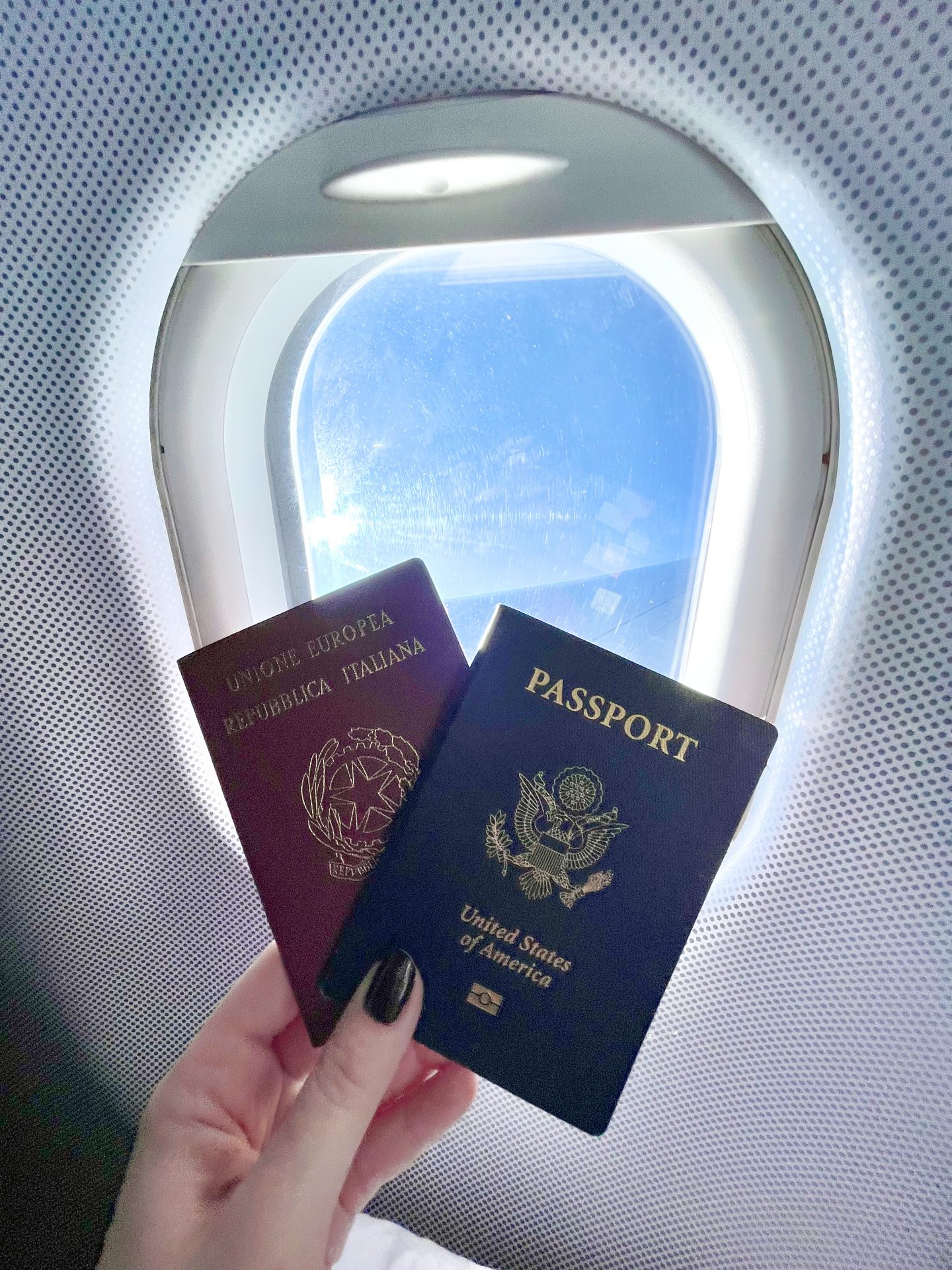
Last Updated on March 19, 2022 by Michela
You’ve gotten dual citizenship – yay! There’s something so satisfying about finally having your second passport in hand. But how do you actually travel with two passports ? When do you show what and what are the rules to follow?
While traveling with two passports should not be difficult, it can be intimidating the first few times you do it. You don’t want to make a mistake and get into any trouble!
To provide the clearest explanations possible, I’m going to use examples, many of them being from my own situation as a US and EU citizen. If you have any questions about your specific situation, please leave them in the comments so I can help!
You can read more about how I got my Italian dual citizenship .
Traveling With Two Passports: FAQs, Answered
How can you get two passports.
A person can apply for a passport in any country in which they have citizenship. If you were born a dual citizen, you likely can apply at any time. But you can also obtain dual citizenship in other ways, most commonly through ancestry, naturalization, and marriage. Once you’ve obtained dual citizenship, you should be able to apply for your passport right away, but you’ll have to check your country’s specific rules.
It’s important to note that every country has different policies on this (and it’s important to note that all the information in this article may vary depending on the country in question.) Always check official rules, which can usually be found on government websites, regarding if dual citizenship is allowed and their rules on traveling with two passports.
Is traveling with two passports allowed?
Yes. And people can even have more than two! It’s usually advantageous to have multiple passports (if your home country allows it). Having a second passport allows you to choose which one makes your entry into a foreign country easier and you’ll likely have shorter lines to wait in.
Do dual citizens need to travel with both passports?
No, you are not required to have both passports on you when you travel – just the one you are using. In my case, if traveling back and forth from the United States and the European Union (EU), I need both because I enter and leave the EU as an EU citizen and enter and leave the USA as a US citizen. Scroll to find detailed definitions of “entering” and “exiting.”
I highly suggest always bringing both passports with you when you travel, even if you don’t plan on using one of them. This assures that if you run into any trouble, you have all your documentation on hand and can explain your situation as a dual citizen. Follow these other international travel tips for a smooth experience.
Can you enter a country on one passport and exit on another?
No. The way that countries track whether or not you have overstayed your visa or the amount of days you’re allowed to stay there is based on what passport you used.
So, for example, if you enter the EU on an American passport, but then exit on an EU passport, then “on file” it will seem as though you never left the EU because they’ve seen you entered on an American passport.
Some countries do not stamp passports, which would then imply it doesn’t matter which you show. But to avoid trouble, the number one rule for traveling with two passports is to keep it consistent.
Defining “Entering” and “Exiting” a Country
The reason why I want to define these terms is that their messaging can get confusing in the context of the full flight journey.
This is because there is not just one stop where you show the passport you’re traveling with and move on. There are multiple passport control stops that can make you doubt which passport you are supposed to use.
Entering a country is when you land and you go through passport control. You will enter your destination country, but you will also re-enter the country that you are returning to. And this may cause you to use two different passports on the same journey.
For example, I am an EU and US citizen. If I travel to the US, I will use my American passport. But when I re-enter the EU, I will present my EU passport because I want to be considered an EU citizen in the EU.
The same goes for leaving a country. I will leave the EU on my EU passport, the same I used to enter it. And when I leave the US, I will present my US passport; the same I used to enter it.
Step-By-Step Flying Guide with Two Passports
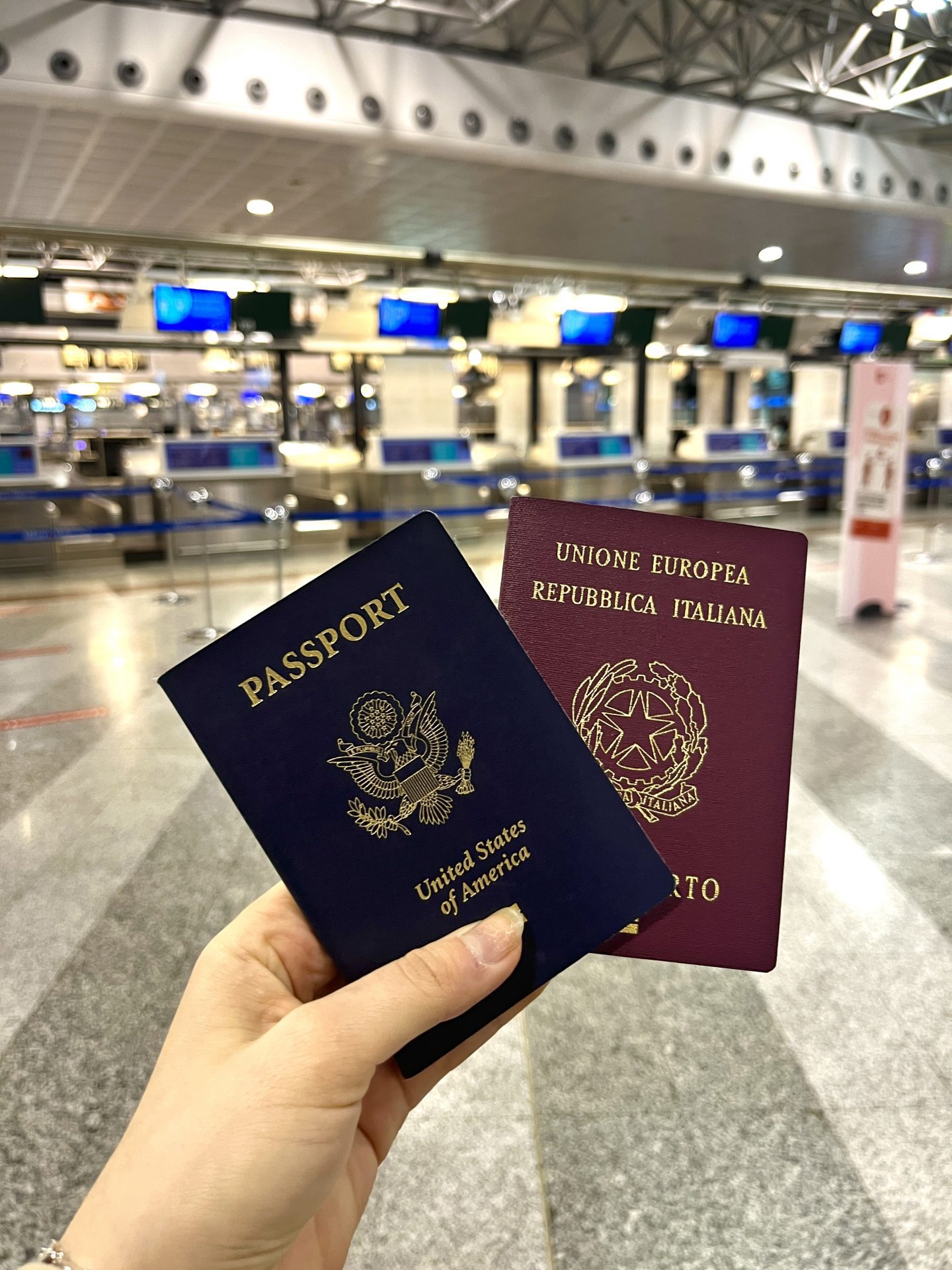
Booking Your Flight: How to Choose Which Passport To Use
The first point where you will need to decide on which passport to use when traveling is when you go to book a flight. The main factors you will want to consider when choosing which to use are:
- Destination country’s laws . Your destination country may have certain laws about which passport you can use, usually if it’s the country from which you have citizenship. For example, US citizens must enter and leave the US using their US passport . So even if you are a dual citizen of another country, you don’t have the choice to use that passport to enter the US.
- Ease of visa requirements . The benefit to having two passports is that you can choose which one allows you to enter a country more easily. For example, if I’m traveling to Venezuela, I would choose to use my EU passport. With my EU passport, I don’t need to apply for a visa, whereas with the US passport I would have to apply for a visa, pay for it, and do the entire waiting process for it to be granted. These visa requirements are all based on agreements between the countries regarding the visitor’s nationality, length of stay, reason for visiting, etc.
Part of the booking and online check-in process can also get muddy when they ask for nationality. Dual nationals should always put the nationality that goes with whatever passport they are traveling on.
Airport Check-In
When you check in for your flight, you will present the passport that you used to buy the ticket. The airline wants to see the passport information match up and they want to know you have valid entry to your destination country.
At Security Check
You will present the passport associated with your ticket. Again it makes sense, as the agents all want to see that the information is consistent and that you won’t have problems entering the destination country.
At Passport Control When Departing
When you go through passport control after having checked in and gone through security, you will then present whichever passport you used to enter the country you are currently in. So, if I am in Italy, I would present my Italian passport.
Now, for example, if I have a connecting flight from Italy somewhere in the EU on my way to the US, I will not go through passport control in Italy. I will go through passport control at the last EU country I am traveling from.
Arriving At The Destination
When you go through the immigration check at your destination, you’ll present the passport you used on your ticket to fly there. This makes sense, as its the passport that is allowing you entry into the country.
Departing From The Destination
Same as when you arrive, you’ll show the passport you used to enter the country.
Returning Home/Re-entering Departing Country
So, now when you go through border control after your return journey, you will present which passport is most advantageous for you to enter that country with. Remember, this is the passport you will then use to leave this country the next time you take an international flight.
If I’m an EU citizen returning to the EU, then I will use my EU passport.
Final Thoughts
Traveling with two passports is not difficult, but it can be intimidating. It’s hard enough trying to travel stress-free and now it’s a whole new world with two passports in hand!
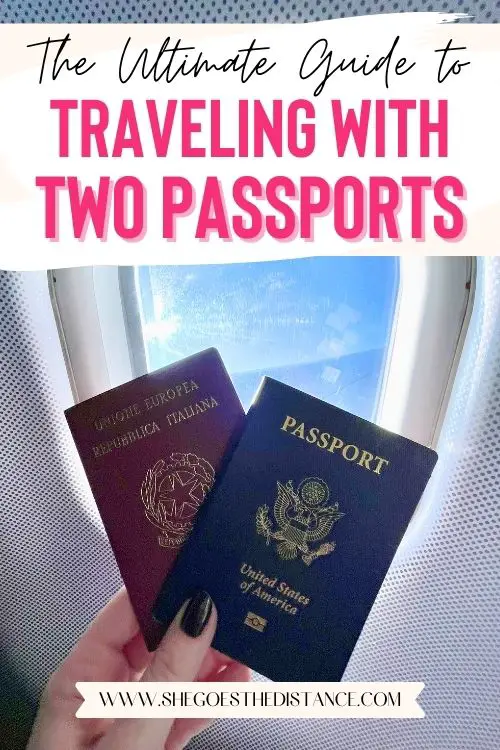
Now when you travel with two passports you will be a pro!
Michela is a travel writer and photographer living in northern Italy. She is passionate about helping people make the most of their travels by sharing advice gained from her personal experiences, off-the-beaten-path destinations and time-saving quick itineraries. Browse her top articles or have her help you plan your itinerary to your dream destination!
Find me on: Web | Instagram
You may also enjoy:
The beis luggage review you need to read before you buy: worth …, 43 comments.
Hi Michela. My name is Hans i have both Nicaraguan and German Citizenships.
I was born in Nicaragua and in the beginning of the year i booked a flight from Nicaragua to Amsterdam with my Nicaraguan passport, nevertheless, a month ago i obtained my first German passport.
My concern lies in that as a nicaraguan citizen i obtain both my father and mother last names while under the german legislation my second last name (my mother’s) is eliminated.
The Nicaraguan government obligates me to book my flight with my Nicaraguan passport that has the two last names (which i did back in the beginning of the year) and the info has to correlate with an exit authorization form that i have to fill about 48 hours prior to leaving. If it is not identical i can have issues.
So where i see the problem is that when i enter Paris which is my connecting flight to Amsterdam and go through inmigration my ticket will have my two last names and my German passport only one last name. Do you think that inmigration will understand if i explain them my situation? I strongly feel that the correct thing would be to enter the EU with my EU passport but i am afraid of running into trouble. I would appreciate you insight. Thank you!
I totally understand your fear because there is no way to contact anyone you’ll encounter at immigration before you arrive. I do believe you are correct that you should enter the EU with your EU passport.
Airlines are most concerned with seeing that you are allowed to enter the country that you are traveling to. For example, I was returning to Italy from the US and had flights booked with my US passport. The airline in the US asked me if I had proof I could travel to Italy and that’s when I showed my Italian passport and everything was fine.
And when I do arrive back in Italy, I just use my Italian passport and go through the e-gates. I don’t think you will be asked to show your ticket and passport if you enter through the e-gates since you are an EU citizen.
My best advice would be to try to email the Paris customs and get a response back in writing of what they advise you to do because then you can print that email and have it as a backup document (depending on what they write to you) that justifies your actions! You may even want to do the same and contact Amsterdam customs.
I hope this helps and that you have a smooth trip!
How do you answer visa questions about where you were born when traveling with second passport? I have a US passport and a Costa Rica by investment passport. I am unsure on some of the questions on the visa applications. Thanks for any help you can give me.
I believe the way you answer visa application questions is all based on which passport allows you to most easily enter/obtain that visa. I would keep all the information the same so once you choose one passport to fill out the application with, only input information related to that passport. Of course I know that filling out paperwork can be really confusing because they don’t allow you to explain your whole story, but I believe you should be okay if you fill out the paperwork in this way!
I hope this helps and let me know if you have any more questions!
Hi Michaela,
I have both a US passport and Thai passport. I was in Thailand on my US passport and went to Europe. I left Thailand and entered Europe on my American passport. However, when I came back to Thailand I left Europe on my American passport and entered Thailand on my Thai passport. Now I want to travel to Australia but I am in Thailand (entered using my Thai passport). For visas, it is much easier to enter Australia on my US passport. Is it this correct, I purchase my ticket using my US passport even though they have no record of me in the country with US passport? And when I get to border control in Thailand I show them my Thai passport and when I arrive in Australia I show them my US passport?
When I leave Australi should I book on my US passport, correct?
Kind regards,
First I just want to say that since I don’t have these two kinds of passports and have not personally experienced this travel route, I always recommend trying to get in contact with the border police in order to confirm your situation and receive an answer directly from them.
Now, from my experience, you are exactly right. The airline is concerned about whether you will be allowed into your destination country, whereas the border police are looking to make sure you are entering and exiting a country on the same passport.
So, you should book everything related to your Australia visit on your US passport. Show your Thai passport to the border police in Thailand upon exiting and re-entering, but give your US passport to the airline agents so they can check you are eligible to enter Australia and that all info matches and also to the border police in Australia when you enter and depart that country.
If on your way back to Thailand the airline agents are questioning whether you can return (since they are looking at your US passport), you should be able to also show them your Thai passport so that they know you are allowed to enter that country. It once happened that I booked my flights to and from the US on my US passport (since that is the law, even though I’m in the EU on my EU passport) and while checking in for my return flight to Italy, the agent asked me if I had proof that I could go back there. I then just told her I am a dual citizen and showed my Italian passport as well and all was fine.
Like I said, if you can get confirmation from border police agents that this works for your situation, all the better. It’s my go-to strategy, as written confirmation by email is hard to refute. I hope this information was helpful and that you have a safe and smooth trip!
Hi , thanks for this. I have two passports and both are visa free to enter EU for 90days /180z I wanted to enter EU after the first 90 days with the first passport. Can I use the second passport to reenter with this 180 days limits? they check stamps only? Do they have electronic system to know it’s me the same person?
I’m nearly 100% certain that border police do cross-reference your passports if you are a dual citizen and that you can risk a fines/other penalties trying to enter with another passport to avoid the 180 day limit!
My daughter has UK and Spanish passports. My question is over what you say above: “When you check in for your flight, you will present the passport that you used to buy the ticket. The airline wants to see the passport information match up and they want to know you have valid entry to your destination country.” but then when arriving in the UK “When you go through the immigration check at your destination, you’ll present the passport you used on your ticket to fly there. This makes sense, as its the passport that is allowing you entry into the country.”. If she uses her SPANISH passport to BUY the ticket and CHECK IN in in Spain, why should she not use the UK passport once she arrives in London and when she leaves?
So, if your daughter is flying to the UK from Spain, I would assume she should buy her ticket with her UK passport, which would be the passport she shows to airline agents and immigration officers in the UK!
Meanwhile if she is flying to Spain from the UK she would do the opposite – buy the ticket to Spain with the Spanish passport and show that to the airline agents and the immigration officers once she lands in Spain.
Does that make more sense? I hope it helps!
Very helpful, thanks.
I’m happy you have found it useful!
I have both Taiwan and New Zealand passport. I’m going to China end of the year. I book my flight ticket with my Taiwan passport because i don’t required visa to go in. But the last time I enter nz I’m using my nz passport, so is that ok if I show the border police my New Zealand passport even tho my ticket is under my Taiwan passport ?
And when I’m leaving China n going back to New Zealand , which passport I should use to book my flight ?
You could almost think of the airline agents and the border police agents as separate parts of your journey. The main priority of the airline agents is to see that you are allowed in the country to which you are traveling, which is why you are correct in that you should book your ticket with and show the airline agents your Taiwan passport.
The border agents want to make sure you are entering and exiting the country on the same passport, which is why you would show them your New Zealand passport when leaving New Zealand. If you showed your Taiwan passport, they would see you entered New Zealand with one passport and left on another, which means they don’t know where you are/can’t track you and this could cause problems in your future international travels.
I also have never traveled to China or New Zealand, so I always encourage people to try to get in contact with the country’s border police before traveling if something seems unclear. I have done this before with other countries’ border police and I will usually print their email response to me about what I should do and bring that to the airport with me so that I feel confident while traveling.
When booking your return flight, as I mentioned, it is best to book with the passport that allows you access to the country you are traveling to. Now, I, for example, have booked a roundtrip flight US-Italy all on my US passport after I had spent about a year in Italy. When I went to check in for my return flight to Italy, I gave the airline agent my US passport since that is what I used for the roundtrip ticket and the airline agent asked me if I had proof that I was allowed to return to Italy (since you can only stay there for 3 months as a US citizen every 180 days) and I simply showed her my Italian passport. Everything went fine!
I hope I was able to explain myself clearly and that this has been helpful!
Hello. Say I am an Indian citizen with an Indian passport in the US and have a green card. Over time I obtain US Citizenship and Passport. Now India does not allow dual citizenship.
Now say just have obtaining my US Passport, I have to travel to India for an emergency, can I present my Indian Passport to enter and then exit India. Does anybody in India check in any system that I am a US Citizen now?
Since I have no personal experience with these types of passports and visas, I would highly recommend you reach out to your local consulate to get clarity on the situation. Safe travels!
Hi Micheala, My son has an Irish passport and a US passport. He was born in the US. I was born in Ireland. He will be studying abroad in Spain from 9/22 to 12/17. Under 90 days so no visa required. He will fly to london beforehand on Sept 3 to visit my sister, and also fly to Ireland to visit my brother. A total of 18 days before flying to Spain. It’s his first time abroad alone so I’m kind of worried about passport use and visas. I know he was told he didn’t need the visa to study in Spain because it’s under 90 days, and he has an Irish passport, but he has those added days in london and Ireland. Would you be able to take us through passport use for his trip? He will leave The US on the US passport. Should he use that same one to enter london? I think that is the correct one. He will flys to Ireland for a short visit, and then back to london. For this he will use his Irish passport. When he leaves london on 9/22 for his stay until 12/17 which passport is best? Ireland and England are not belong to Schengen Area so you are only allowed the same 90 days with no visa as a US citizen. (But you can leave and come back again on the Irish passport) 12/17 he flys Seville to Portugal to connect with his US flight home Im concerned, as he enters and leaves Seville that it will all go correctly. I’m anxious that some one will not let him in somewhere. I believe has to make sure he gets stamped everywhere along the way. When he returned to the US, does he need to primarily show the border patrol stamps in his US passport showing; that he arrived in london, departed london, arrived Seville, departed Seville, arrived Portugal, departed Portugal, arrive chicago? I know any flights to Ireland or EU countries, while studying abroad, he will use his Irish passport. But the trip listed above is his round trip in and out of the US. I hope this makes sense. Thank you.
Hi Vivienne!
I completely understand why you are nervous, as traveling with two passports can definitely be confusing.
I believe he could use the Irish or the US passport to enter London, as long as he uses that same one when he leaves London to go to Spain.
When entering and leaving Spain, since both passports have the same stipulations of 90 days no visa required, he should be fine to use either one, again as long as the one he chooses is the same one that he leaves Spain with.
I remember in London, and now in many places in Europe, there are e-gates where you scan your passport and you don’t receive a stamp, but this has never given me issues when returning to the US. I believe he can choose to see a border control agent for a stamp but it could also depend on the airport.
As long as he enters and exits each country using the same passport (enters and exits Ireland on the Irish passport, enters and exits US on the US passport, etc.) then he should be fine!
When he goes from Seville to Portugal, he should only have to cross border authorities in Portugal since the flight from Seville to Portugal is an EU flight. It’s when he is leaving the EU that he would have to cross border control.
I always encourage reaching out to a country’s border control authorities, as most will respond to emails, and traveling with that response to lessen the anxiety!
I hope this has been helpful – since I don’t have personal experience with both these types of passports, I can only say what I believe are the best practices, so like I said, if you can reach out to border authorities to ask your question, this is best!
I hope your son has a nice, smooth trip!
Hi, thanks for the guide. I am a US citizen who recently obtained an EU passport. I am traveling soon to Turkey from the US, and want to use my EU passport so I won’t need a visa (unlike with the US passport). The part that confuses me is the airline check-in. You linked to the State Dept. site which effectively says, “US citizens must enter and leave the US using their US passport.”
But if I am entering Turkey with my EU passport, shouldn’t I use the EU passport to book the ticket and check-in? If I use my US passport to book the flight, would I encounter problems when I try to go through Turkish customs with my EU passport? I assume the airline shares its passenger list, and I would show up as a US citizen. Or does that not matter? Also, the US has no passport exit control, so it seems like it shouldn’t matter on the US end either way.
I understand that when coming back to the US, I will show my EU passport to go through Turkish exit control (same as I entered), and my US passport for my return flight. But normally when you book a round-trip flight, you enter your passport information once when purchasing. What do I do if I want to use my EU passport to book/board the flight to Turkey and then fly back to the US with my US passport?
Thank you for the help!
You should book your flight with your EU passport since that’s the passport that is allowing you visa-free entry to Turkey. You will show the EU passport to the airline agent to check in and at border control entering and leaving Turkey.
When they say to enter and exit the US on your US passport, this refers to the passport you will show at border control when coming into and leaving the US. I don’t know exactly what gets shared, but basically you can think of the airline agents and border control as two separate entities. Airlines want to know you’ll be allowed into your destination country (hence booking with the EU passport) and border control want to make sure you are entering and leaving on the same passport (US passport shown entering and exiting the US; EU passport shown entering and exiting Turkey.)
As far as how to handle the passport booking information for the return flight, this was my experience: when I was traveling back to Italy from the US, I had already booked my roundtrip flight with the US passport details. The airline agent noticed that I wouldn’t be allowed back in Italy on my US passport since I had technically overstayed as a US citizen and all I had to do was explain I was a dual citizen, show the Italian passport and everything was fine as soon as she saw that I would be allowed into Italy. So, even if you have the EU passport details on the ticket, if you show them you are a US citizen and will therefore be allowed into the US, there shouldn’t be a problem.
I always recommend reaching out to border control/the airline agents with your personal situation as they will best be able to shed light on the correct procedure! I know sometimes it can be difficult to get a response, but it’s always worth a try.
I hope that I explained this well enough but don’t hesitate to ask any more questions for clarity!
I am a US and EU citizen, residing in NY. Never traveled on both before, but I am going to travel from JFK to LHR and will. From what I understand: Book tickets in the US provide US passport info to the airline and present your US passport at the gate at JFK. Upon arriving in London present EU passport at Border Control. On the return (as with the US there is no exit check) present the US passport to the airline and again at entry at Passport Control (Global Entry) in JFK. My question is doesn’t the airline tell Border Control in the UK that John Doe, US citizen is coming? and when John Doe, EU citizen shows up, won’t that cause an issue?
I don’t know exactly what happens on the other end – but I can tell you that from what I do know, airline agents care that you will be allowed in your destination country and border control cares that you are entering and exiting their country on the same passport.
You’re completely correct to show the US passport at the border control exit and entry at JFK. From what it sounds like, it may make more sense for you to just use the US passport also during your visit to England if it gives you the same entry requirements. If you prefer to use the EU passport entering England, you’ll show this to the border control exit and entry at LHR (which I am pretty sure are just E-gates now).
What will cause problems is if you enter the UK on an EU passport and then leave the UK on a US passport (by this I mean showing your EU passport to LHR border patrol when entering and then showing your US passport to LHR border control when leaving). Then border control sees that there is something inconsistent. So, while I don’t know what information is shared, this is how I have traveled between the US and Italy with two passports without yet encountering a problem having contacted the authorities to understand how to use my two passports correctly. I also recommend you do the same if you have any doubts! Border control authorities in the destination country usually have an email you can contact and that is the best resource for asking specific questions related to that country’s entry regulations.
I hope I explained myself well and that you have a smooth trip!
I went on my trip, skipped the online check-in and such, and asked at the airline desk. The agent had no clue, and called someone over who knew precisely what to do:
At JFK I checked in with my EU passport (next time, I’ll do this at one of the kiosks, you slide your passport in and it gets read). My boarding pass included Pre TSA (with KTN info Delta already has). At the TSA security, I presented my US passport. When boarding the flight I gave my EU passport and utilized my EU passport at LHR, and when I headed to France on the train. Returning, I again skipped the online check (because Delta had no way to update the passport info on the web to add my US passport, I had assumed it was populated with my EU passport info from the trip over) and I check in at a kiosk with the US passport and presented it again at the gate and at JFK Global Entry point.
Worked seamlessly and painlessly and next year I’ll be able to avoid the EU ETIAS.
I’m so glad someone was able to give you such specific instructions! You did everything right and thank you for sharing your experience so others can also learn from it!
Hi Bob can you please elaborate which passport did you book your flights with? Sounds like you checked in with the airline using your EU passport on the first leg but then you used your US passport to check in on your return leg. If your flights are on one itinerary, how is it possible to present two different passports to the airline? Thank you.
Thank you so much for this incredibly helpful information Michela! I read several other articles prior to this one and was still confused but you cleared everything up for me.
I’m in a very similar situation as you, an American who has obtained his Italian citizenship through ancestry. I’m currently in Italy at the moment and we are about to depart for the US in three days. I started to get concerned as I used my US passport to check into my flight when departing the US but then used my Italian passport to go through control after landing in Italy. I wasn’t sure which passport to use when departing Italy (actually, as we fly first to Paris then I’ll be using it there) and then again when arriving in the US but you perfectly made things clear to me.
I feel much more confident now so again a big thank you!
Hi Lance, I’m so glad you found it helpful! It can be so confusing and once you figure out the steps, they’re still a bit confusing to explain and understand. I’m happy I was able to explain it clearly! Have a wonderful trip!
Hi! I’m a Canadien citizen and I have my Belgian citizenship. I’m going to study abroad in Germany for 4 months but I currently live in Canada. This is what I understand : 1) Book my flight to Europe with my Canadien passport. 2) Show my EU passport when I’m at the borders in Europe (so I don’t have to show a visa to study). 3) Book my flight back with my Canadien passport. So, if I understand correctly, I book all my flights leaving and returning to Canada with my Canadien passport but when I arrive in Europe, I only show my European passport. Is that right?
At the border, if I only show my EU passport, will they ask to see my bording pass to be sure everything is matching or they won’t care because I’m a EU citizen?
Thank you! 🙂
Hi Claudia! First I just want to say since I don’t personally hold these two kinds of citizenship, I always recommend reaching out to local border authorities to get any important questions answered and cleared up. From what I know from my own personal experience and research, this is what I think: 1) You can book your flight to Europe with whatever passport allows you to remain in your destination country. So, you could book your flight with the EU passport, the important thing would be to show your Canadian passport to Canadian passport control as you “exit” Canada and make your way to Europe. 2) Yes I believe this works. 3) Yes exactly since this is the passport that allows you into Canada.
And then when you “exit” Europe, you show your European passport to the border control in Europe. When you re-enter in Canada, you show your Canadian passport to “enter” Canada.
I’ve never been asked for the boarding pass while entering the EU on my EU passport. You will likely go through the electronic gate where you scan your passport and they do a biometric check!
I hope this helps!
Thanks a lot for the travel tips!
I have a question regarding my situation, i have a Dominican Republic passport with an American Visa and a Spanish passport.
Im going to Dubai but I have to Stop in the USA and I’m a little bit stressed about what to do, why?
Scenario 1: Booking with Dominican passport and USA Visa.
1) I book the ticket with the Dominican Passport because i have my USA Visa there. And I do a check-in in the Dominican Republic. 2) In the Dominican customs I will present my Dominican passport. 2)In USA Customs I will enter with my USA visa and Dominican passport 3) I Spent a (1) day in the USA 4) By the time I have to do a check-in again to travel to Dubai I have to present my Dominican Passport but they will request a VISA and I dont need a visa with the Spanish Passport to enter Dubai, can I show in the counter my Spanish passport to the airline? 5) Customs USA will present My Dominican passport. 6) Then I have to enter Dubai with my Spanish Passport (Dont need a visa) 7) When returning i have to leave Dubai with the Spanish and then enter USA with the Dominican passport.
Scenario 2: Booking with Spanish passport
1) I book the ticket with the Spanish Passport 2) At the check-in with the airline in the Dominican Republic they will request to me an ESTA (A permit to enter the USA) but I won’t have it because I have my Visa in the Dominican, can i show my Dominican to the airline? 3) In the USA customs I have to present my Dominican passport because of the Visa, but can I do that? Booking and traveling with the Spanish but using the Dominican to enter is a problem? 4) I Spent a (1) day in the USA 5) By the time I have to do a check-in for the Dubai travel i won’t have a problem since i dont need a Visa 6) At USA customs I have to present my Dominican passport to leave the USA 7) In Dubai i have to enter with my Spanish one 8) When returning at the airline check-in they will request to me the ESTA but again i dont have it because I have a Dominican passport. Can i show them my other passport? 9) I have to leave Dubai with the Spanish one 10) I have to enter the again USA with the Dominican one.
I believe which scenario you do will depend on if you are booking the trip with Dubai as your final destination or if you are booking the trips as two separate legs – one leg is the US, then the other separate trip is from US to Dubai.
If it is all booked with Dubai as your final destination, then you should follow the second scenario, proving that you are allowed to enter your final destination visa-free, which is what interests the airlines the most. Then follow the steps that you laid out, using the passport that allows you to enter and exit each country visa-free.
If they are booked as two separate legs, I would recommend the first scenario, proving you are able to stay in the US and then showing your Spanish passport for the second leg, while exiting the US on the Dominican passport.
Honestly, I believe you will be ok in either scenario by explaining to the airline or border agent that you have all the permissions to enter and exit each country that is part of your itinerary, if they even ask you any questions! It happened to me that I was returning to Italy from the US and the ticket was booked under my US passport. The agent asked to see proof that I could travel to Italy (since she could see I had been there previously for more days than the US passport would allow me without a visa) and I was able to show her my Italian passport and explain and it was all settled by that!
I hope this helps and safe travels!
Hi Michela,
How do I retain you as a consultant?
I currently don’t offer any professional passport consultancy services but I can do my best to answer your question based off of my personal experience. You can email me at [email protected] . I however still highly suggest consulting a legal professional for anything regarding passport services!
Hi Michela, Thank you so much for you website info. However, I think I might be in a bad situation. I am looking for some advice. I am a naturalized US Citizen, (however I am originally from Colombia) This week I traveled to help out my father in Colombia. I was planning to only use my US Passport. However, when I arrived the Colombian agent asked be to show both my passports. HE then Stamped my Colombia Passport… (WHICH is Expired)… I never planned to use it. NOW I fear they will not be able to leave with my US Passport. Truly I do not know what to do… I have a family and job waiting for me to return at the end of the week. Any Advice?
Hi Mislady,
Having never been in a similar situation and not having these same two nationalities, I cannot confirm that my advice is completely correct. I can only tell you from personal experience what I think you can do and what I think the situation calls for. The most difficult part is that the Columbian passport is expired, which is where I think you could encounter the most issues.
If it weren’t expired I would tell you to show the US passport to airline agents for your return flight, the Columbian passport to border control to get your exit stamp, and then your US passport upon arrival into the US, so that you enter and exit each country using the same passports. I truly have no idea if the expiry of the passport will affect this situation and unfortunately this is the best I can think of to do having not gone through this myself and not being a legal professional.
If you can, I highly recommend you reach out directly to the border police to explain the situation to get a clear answer! Safe travels and wishing you the best.
Hi there! I have US and Bulgarian passports…and I live in the UK. I am planning a trip to the US soon and I’m very confused as to how to go about it – Do I book the flight with my American passport, which I will also show at the check in desk? But then after going through security I show my EU passport before boarding the flight?
Hi Natalia,
The general rule is to book your flight with the passport that allows you to enter the destination country in the easiest way possible, which is usually considered visa-free. In this case, you should book your trip with the US passport to show the airline you will be allowed in the country. The US passport is what you will show at the check in desk.
When you go to exit the UK aka, go through the border control in the UK, you will show whatever passport you used to enter the UK, which I am assuming in this case is your EU passport. To the airline before boarding the flight, show your US passport since that is what your ticket is booked with.
Once you arrive in the US, since you are a US citizen, you must enter and exit the US with your US passport, meaning the US passport is what you will show to customs/border control in the US.
If you buy your flight roundtrip, it will all be associated with the US passport. If you are asked by the airline on your return trip verification that you are allowed to enter the UK, you can show them your EU passport or UK residency (because of the whole Brexit thing I suggest you to confirm the rules on the official websites.) Once you get back to the UK, you will go through border control showing your EU passport!
It can be confusing and a lot of information at once, but I hope this helps!
Thanks so much for publishing; this is so helpful!
My 17 year old niece has dual US / UK citizenship. She is traveling over the holidays from the US (where she lives) to visit family in the UK.
I understand she needs to show her US passport upon exit from the US and upon entry to the US.
Is there any reason for her to use her UK passport at all? Since US citizens don’t need a visa to visit the UK for < 6 months, it seems easiest to just use her US passport through the whole trip and avoid the confusion.
Is there anything I am missing?
Hi Michelle, The only situation in which she would have to use her UK passport to enter and exit the UK (as far as I am aware) is if the UK requires it by law. For example, if you are a US citizen, you MUST enter and exit the US on your US passport, even if you have another passport that would allow you entry.
I did a quick search and it doesn’t seem like there is this rule but I highly recommend you do your own research/even reach out to a border official in the UK (a lot of times there is an email address for border police that you can contact) in order to get a direct, confirmed answer.
Otherwise if they truly don’t have this rule, then I think you would be ok to just use the US passport throughout. I hope this helps!
Hi! I’ve been reading through your entire blog post, and it is very informative. However, I’m still a bit confused. I have an EU (Polish) and US citizenship. I’m flying to Italy via Paris. From other questions I understand that when checking-in to the US-Italy flight, I should use my EU (Polish) passport, since this gives me hassle-free entrance to the EU. As I leave the US there’s only check of documents to the security belt, and at the boarding gate. So at the security belt I should show my EU passport, and same at the gate, because then they’ll know I can enter EU. Then when I land in Paris I go through the EU citizens gates and then there’s no more control. However, when I fly back, at the check-in for the return flight do I also use the EU passport? Then there will be passport control when leaving EU and at the gate (probably to ensure I can enter the US). Is it only at the gate when leaving the EU that I should show the US passport? Then when I land in the US I would also show the US passport. But then it seems I have not used the US passport at all when leaving the US. So I’m a bit confused – could you help what are your thoughts since you’ve travelled US-Italy? Which passport in the US do you show when you go through the security? Thanks a lot!
When you check in for the return flight, and this is based off of my personal experience, you will show the passport that you used to book the flight under, so the EU passport.
Here’s exactly what happened to me when I was traveling back to Italy from the US after a week stay:
I showed my US passport to the airline agent for my return flight to Italy. She could see that technically I had overstayed in Europe the 90 day visa-free period, but all I had to do was show her the EU passport and she let me through no problem. If something like this happens, as soon as you show them you are a citizen of the US, even if your whole flight is booked under the EU passport, there should be no problem.
So, when leaving the EU, you can still show your EU passport to all airline-related checkpoints and for sure at the exit passport control. If anyone asks, you can show the the US passport so that they know you are able to travel to the US.
When you leave the US, show your EU passport to airline agents since that is what the flight is booked under. If you have an exit passport control in the US, show the US passport. Then when you return and land in the US, you will show the US passport at the control.
I hope this helps makes things a bit clearer and if you have other questions, please let me know!
This is very helpful and thanks so much for posting. I have a slightly more complex situation that I hope you can help with. I have three passports (US, EU and UK) and will soon make a 12 day trip that involves stops in all three regions.
Is the following correct or should I just travel on my US passport for the whole trip?
US to EU – Use US passport EU to UK – Use UK passport UK to EU – Use EU passport EU to US – Use US passport.
Thanks, Jeremy
I always recommend traveling to each destination using the passport that will allow you into the country or zone in the easiest way. Based on your itinerary, I would think you should travel like this:
US to EU – Use EU passport because you will be entering the EU EU to UK – Use UK passport to enter the UK, EU passport when leaving the EU UK to EU – Use EU passport to enter the EU, UK passport to leave the UK EU to US – Use US passport to enter the US, EU passport to leave the EU
Let me know if I can give any more advice on the situation!
Leave a Reply Cancel reply
Your email address will not be published. Required fields are marked *
Save my name, email, and website in this browser for the next time I comment.
Website URL
Sign me up for the newsletter & access to resources from The Travel Library!
JOIN MY FACEBOOK GROUP

Check this out
- The Travel Library
- Privacy Policy
BUY ME A COFFEE
I love creating free resources for your travels and personally responding to your questions over chat and email.
Planning a trip to Italy?

Looking for Something?

A Guide To Travelling With Two Passports
Disclaimer: This article contains affiliate links. That means if you click a link and make a purchase, we may make a small commission. As an Amazon Associate we earn from qualifying purchases. For more information, see our privacy policy.
I acquired dual citizenship a couple of years ago which meant that recently I started travelling with two passports.
And while I’ve been clear for a very long time about the benefits of obtaining dual citizenship and the flexibility that it allows me, it was only until about a day before my long trip through the Balkans that I realised I actually had no idea about the practicalities of having a second citizenship. I had no idea which passport I should use when booking a flight, checking in or passing through immigration.
So after doing some frantic last-minute research, I went to the airport and showed my foreign passport. What ensued was fifteen minutes of confusion when I showed the airline check-in in Australia my foreign passport. The concierge was left whispering to other staff before finally asking me how I had entered Australia and whether I had a visa to stay in the country.
When I meekly showed him my Australian passport, he shook his head at me like I was an idiot and proceeded to tell me, “In Australia, ALWAYS show your Australian passport.”
I’m sure that I’m not the only one that has experienced confusion or uncertainty as to how to travel with two passports from different countries so I’ve created this step by step guide to ensure that you know exactly which passport to use at each stage of travelling!
Disclaimer: I am not an immigration lawyer and this article is only meant to be used as a guide to travelling with 2 passports based on my own experience. I recommend speaking to the relevant embassy if you want more information on your specific situation.
Table of Contents
A Guide For Travelling With Two Passports
The below outline which of your two passports to use at each stage of travelling.
1. Booking your flight
When booking your flight, airlines will request you enter your passport information as part of the booking process. For countries where you are required to pass through immigration before departing, you should typically enter the details of the passport which you are using in the country of departure.
For example, as an Australian, I will always use my Australian passport when booking a flight out of Australia.
Apart from travelling from Australia, I have generally found that it doesn’t matter which passport you use to book your flight, particularly if you don’t pass through immigration when exiting the country. For example, in the United Kingdom or the USA, there is no immigration when exiting the country and airlines don’t seem to be concerned with your visa status in the departure country.
In countries that don’t recognise dual citizenship, it would be advisable to book your flight on the passport which you are legally using in the country.

2. Checking in at the airport
Whichever passport you have used to book your flight is the same one that you should show when you check in at the airport. It is, however, worth making sure that you add both passports to your packing list as an airline might request to see proof of onward travel.
For example, if I book a one-way flight to Europe, the airline might request to see a return flight as if you’re not a dual citizen they want to make sure you’re not planning on illegally overstaying your visa.
By showing my European passport it gives the airline evidence that I can stay in Europe without any additional visas.
3. Immigration at your departure airport
The passport that you have used to enter the country is the same one you should be showing immigration when leaving the country.
4. Immigration at your arrival airport
Whichever passport allows you the most hassle-free stay is the one you should show when arriving at your destination. There is absolutely nothing wrong with using one passport to exit a country and then entering on another passport.
Also, it’s worth remembering that most countries require you to use the passport of that country if you are a citizen. So if I’m entering Australia, I should enter on my Australian passport rather than obtaining a visa on my European passport.
Whenever planning a trip, a great website I use is the Compare feature on PassportIndex.Org for deciding which passport to enter with at my destination.
It allows you to line up different passports next to each other and see how the visa requirements vary for every country around the world. This is a fantastic way to save money and time and ensure that you don’t pay any unnecessary visa fees!

Example Scenarios when Travelling with Multiple Passports
Example 1 – australian and uk dual citizen travelling from sydney to london..
1. Booking your flight – Australian passport
2. Checking in at the airport – Australian passport
3. Immigration at your departure airport – Australian passport
4. Immigration at your arrival airport – British passport
Example 2 – US and EU citizen travelling from Paris to Istanbul.
1. Booking your flight – EU passport
2. Checking in at the airport – EU passport
3. Immigration at your departure airport – EU passport
4. Immigration at your arrival airport – as Americans require an eVisa to enter Turkey but EU citizens can enter visa-free, you should use your EU passport.
Can you have Two Passports?
Citizenship law varies from country to country so your ability to acquire two different passports will depend on the specific laws of the two countries of which you wish to have passports.
For example, certain countries like the US, UK, France, Australia, Canada and Switzerland put no restrictions on dual citizenship and you are able to acquire multiple passports as long as it’s allowed by your second country of citizenship.
Some countries put restrictions on your ability to acquire dual citizenship and have quite complex laws to do with how they recognise dual citizenship.
For example, there are no restrictions for Spanish citizens if acquiring dual citizenship with certain Latin American countries but there are restrictions with other countries. In Germany, there are certain situations where citizens will have to choose between nationalities by a certain age. In Pakistan, dual citizenship is only recognised with certain countries.
Other countries such as China and India don’t recognise dual citizenship at all.
Dual citizenship laws are constantly changing and it’s important to keep up to date if you are a dual citizen or wish to acquire citizenship of a particular country. It’s also important to remember that, when travelling, if a country doesn’t recognise dual citizenship then you might not be able to receive embassy assistance if you have entered that particular country on your other passport.
I, therefore, recommend that travellers consider carefully which passport to use, particularly when travelling in more volatile countries.

Travelling with Two Passports with Different Names
In some situations, different countries might issue you passports with different names due to how the name has been translated or a country wanting to use their native language version of your name.
The first thing to do is to see whether the country that is issuing you your passport can add your regular name as a translated version on the page opposite where your main details are located. This will help prove that the passports have the same identity if you ever need to.
When booking your flight, you should ensure you enter the name as it appears in the passport for which you are purchasing and checking into your flight. This will ensure that when you check in and show your passport, the records match up to when you bought the ticket.
In my experience, it’s not a problem to then enter your destination country with your other passport (even if it has a different name) as immigration isn’t checking details against the airline’s manifest.
As always, try to make sure you travel with both passports in case there are any misunderstandings!
Is Travelling with Two Passports Illegal?
For many people there is nothing illegal about having two passports, however, some countries don’t allow or recognise dual citizenship so you need to look into each country’s specific laws.
For citizens of countries such as the USA, Canada, UK & Australia it is common for many citizens to get a second passport from another country.
Other Things to Consider For Dual Citizens
As previously mentioned, I would also recommend taking both passports with you if you are a dual citizen even if you think you’ll only have the need for one of them. It could be helpful for proving onward travel or in the worst-case scenario having two embassies you could contact should there be an emergency when travelling.
Make sure to also buy a passport holder that allows you to carry two passports! Many passport holders are unfortunately only designed for people with a single passport which can increase the likelihood of you misplacing your other passport!
Before setting off on any trip, are you considering travel insurance? World Nomads offers flexible and simple travel insurance policies with coverage for more than 150 activities that you can buy or extend while on the road.
Another option if you’re looking to save money is SafetyWing which offers travel medical insurance and is one of the most affordable providers on the market. Click here to get a quote from SafetyWing and also check out our detailed review of their service.
Travelling with two passports is a privilege for people fortunate enough to be able to do so. Hopefully, this guide clears up any confusion as to which passport you should use at different stages of travelling!
Do you have two passports from different countries? What issues have you encountered on the road with a second citizenship? Let us know in the comments below!

Related Posts:

The Best Travel Pants for Europe (Winter or Summer!)

The Best Shoes for Walking on Cobblestones in Europe

GetYourGuide Review: An Easy Way To Book Tours in Europe

About Michael Rozenblit
Michael is a co-founder and writer for The World Was Here First. Both solo and with his partner, Maggie, he has travelled to over 50 countries across the globe and has a particular affinity for the Balkans and Eastern Europe. He’s lived in numerous countries worldwide but currently resides in his hometown of Melbourne, Australia. Read more about Michael
Its a pity you didnt leave the reverse scenarios ? Say you leave UK on US passport and enter Turkey on EU passport what do you do in the reverse senario Do check in with your passport you booked with from the UK ? or the one you arrived on ? Do you switch them around quickly at passport control ?
That would be really helpful to know to people as thats the crucial bit missing.
Hi, I and my kids have dual Serbian and Hungarian (EU) passports.We live in China and our Chinese visas are in our Serbian passports. We plan on traveling to Thailand and am wondering how to go about it as Thailand doesn’t require tourist visas for Hungarian passport holders, however I’ve never traveled with two passports and as I’ll be traveling with kids, I’m a bit concerned.One of my child’s first names is also spelled differently in his passports so that’s another thing.Also, if I book us return tickets, which passport do I use at which point?What I understand is that I should use the passport that let’s me travel with no hassle, however if I buy I return ticket, it will be with our Serbian passports that we used to enter China. But then the same passport will be the one on the return ticket so wouldn’t it be a problem if I enter Thailand with my EU passport, but exit with the Serbian one(as that’s the one I bought the ticket with)?
I’m both citizen from France/Canada I’m planning to go to Paris, France from Canada so if i understand clearly for my round trip , i should follow this:
Canada to France 1/ departing from Canadian airport : always show my Canadian passport 2/ arriving in France, always show my french passport
france to canada 3/ departing from french airport, always show my french passport 4/ arriving in Canada, always show my Canadian passport
i understand i should always be ready to show either my french or canadian passport upon request by the airline staff.
Am i right ?
I have two passports: one is Pakistani, and the second one is from Dominica. If I plan to visit Italy, I will book a ticket from Pakistan to Italy using my Dominica passport, as Italy offers free entry for Dominica passport holders. Now, the question arises: which passport should I present during the boarding and immigration process in Pakistan, and which one should I use when returning from Italy? And while returning back which Passport I do show at Italy at boarding and Immigration. If I show Dominica Passport at Italy boarding then they must ask for Pakistan visa since Pakistan is not visa free for Dominica Passport. So advise what to do? and how to book return ticket?
Hi, I am in mid-process of applying for my three kids’ British Passports. I am British their mum is Japanese and we currently live in Japan. They currently hold New unused 5 year Japanese passports 2028. I have already received one of my twin girls’ British passport already. Am I to understand when they choose to visit family members in the UK 1. they book flights using Jp passport 2. checking-in with Jp passport 3. boarding using B passport 4. entering UK immigration using B passport 5. leaving UK use B passport. 6. Boarding use Jp passport. I look forward to hearing your thoughts.
Hi I was living in canada as permanent resident and having Indian passport but this month I moved to uk on work permit. Soon I will be going back to canada for my citizenship oath .my question is how I can transfer my work permit from Indian passport to Canadian and where I should get it done in canada or in uk , if in uk on which passport should I travel to uk from canada
my 18 yr old grandson arrived from Australia in June on his Aus passport. His British passport arrived recently. He plans to stay here for about 9 months. We know he has to leave the country by 21st December on his Aus passport to ‘validate’ the 6 months he’s allowed to stay, so we are planning a weekend in Spain. does he have to book 2 single flights because easyjet want the passport numbers. If he shows Spanish immigration his British passport ,the numbers won’t match. We’re a bit confused and would like clarification about leaving and re-entering UK
Thanks for the great info and blog! Also many other readers comments are very helpful.
As a recent dual citizen of the US with a UK passport, what led me here was seeking clarity on DEPARTING other countries for a return trip to the US. No longer having a Green Card or Visa makes returning to the US impossible….as the airline is screening on behalf of US immigration. So, if I flew into a ‘third” country on a UK Passport, I would have no choice but to present my US passport for a return flight to the US. Reading comments here, it seems to me that the only time that this becomes an issue is where I am arriving into a third country with a specific entry / exit visa requirement.
If I was traveling between the US and the UK and used my UK passport to enter the UK and present my US passport for a return to the US, that should not create any issue with my UK passport…..is that accurate?
Thanks again for all your great advice
I have a question if I may.
My mum has a British and Thai Passport but the surname in her Thai Passport is still in her maiden name and the British is in her married name.
So working this out right, it should be British passport leaving UK to Thailand. Enter to Thailand in Thai Passport Leave Thailand on British Passport and enter on UK on British Passport.
Am I correct in this?
My husband and I have dual citizenship (Canada/UK) but our two children have Canadian citizenship (but not a Canadian passport yet) so both currently travel only on their UK Passport. We are entering the USA. In the past, I was told to enter and leave the USA on my UK passport because I was flying with my UK passport dependents. So I have an ESTA for all of us. However, should I not be able to enter on my Canadian passport and leave on my UK passport to return home (we live in the UK)? I have read conflicting answers as to whether or not I would need to enter my Canadian passport for both the inbound (to USA) and outbound (to UK) flights, even though when I get to Britain I have to enter on my British passport. Basically, we are trying to confirm whether my husband and I actually do need an Esta of if we can enter as Canadians and leave as Brits!
Am citizen of Ghana and dual citizenship of Bahamas but I enter Qatar with my Ghana passport but now wanted to leave Qatar to Czech republic with Bahamas passport, is it possible to exit on that since the entry stamped was on Ghana passport?
Very informative article. I have UK and Canada passport. Since Brexit, UK citizens are in the 90/180 day restriction. Which is same restriction for Canada passport in some EU countries., So I want to try to use Canada passport for some trips. For example going to Spain. Can I book airfare and exit UK on Canada passport. Enter Spain on Canada passport. Exit Spain in Canada passport. Enter UK on British passport. So all the days for that trip are in my Canada passport.
My husband and I are on holiday in Australia, we have dual nationality and possess both UK and Australian passports; We live in France with permanent residence cards (carte de sejour).
We’ve used our Australian passports to come here, are we right in thinking that on our return trip to France we use our Australian passports on exiting the country in transit at Singapore we can use our Australian passports and at immigration in France show our English passports with our residence cards (carte de sejour).
Travelling with Malaysian and American passport to Malaysia from America
Summary I have a Malaysian and American passport with the below situation and appreciate thoughts on below especially on return to America because of visa requirement.
Situation Passports – I have both Malaysian and American passports Visas – Malaysia requires visa to visit America but America does not require visa to visit Malaysia or second country Hong Kong Policy – I understand America doesn’t care that I have a not allowed Malaysian passport but Malaysia does not allow me to have an American passport and will make me choose passport if discovered
Travel Book ticket in America – use Malaysian passport Check in at starting airport in America – use Malaysian passport Departing immigration in America – Not applicable Arriving immigration in Malaysia – use Malaysian passport
Book ticket – do I have to book 2 one way tickets instead of round trip because I have to use Malaysian passport to depart Malaysia because I don’t have visa for Malaysian passport to visit America and switch passports in intermediary country Hong Kong on the way? Check in at returning airport in Malaysia – use Malaysian passport Departing immigration in Malaysia – use Malaysian passport
Intermediary country Hong Kong arriving immigration – switch from Malaysian to American passport despite flight data? Intermediary country Hong Kong departing immigration – use American passport to match arrival and departure passport? Intermediary country Hong Kong check in – use American passport
Arriving immigration in America – use American passport
Scenario above doesn’t even get into the complications of having to renew Malaysian passport in Malaysia because I don’t have a green card to renew Malaysian passport while living in America. I appreciate anyone’s advice. Thank you.
Trying to figure this out for a trip coming up. I have dual citizenship USA/Portugal. I am traveling to Barcelona in March, but my first stop in Paris is where I will go through passport control. Is this the process: 1. Show US passport at San Francisco airport 2. When I arrive in Paris go to the EU line with my Portuguese passport 3. When returning I show again my US passport at airport 4. Use US passport at SFO.
I only use my EU passport when I arrive in Paris correct?
Also my name doesn’t match on them. EU one is my maiden name.
Hi, I hold dual citizenship, British and Italian. I had always understood that in Britian I should use the British one and in Italy the Italian one. I was told by the Italian authorities that I could book the ticket and check in with either passport but had to show my Italian passport at Italian passport control and my British passport at British passport control. I had always booked the tickets with my British passport and showed the necessary passport at the passport controls and had never had any problems (including several visits this year between the two countries) until this week, when I left Britain to come back to Italy, where I am resident. I had checked in online with my British passport but at the bag drop in Heathrow a message came up saying my documents had to be checked. The airport member of staff then told me that because I was resident in Italy and travelling to Italy I had to travel on my Italian passport even though I was leaving Britain. This had never happened before. Has something changed? Does this mean that every time I leave Italy I have to check in with my British passport as I’m travelling to Britain but use my Italian passport at passport control in Italy and the British one on arrival and then when I leave Britian check in with my Italian passport? This is what I understood from the member of staff but it is different from what the Italian authorities told me.
Hi, I have 2 passports Swedish and Vietnamese with 2 different names. In order to be exempted from visa when entering Vietnam, the round-trip air ticket should be shown as the name on the Vietnamese passport. However, I do not know how should I show right document to the police at Arlanda airport when I leave and back Sweden? Thanks
Very helpful site Michael. I hold dual US and NZ citizenship,and live in USA.I am thinking of moving to Australia,(elderly parent) and as a NZ citizen can enter Australia on my NZ Passport and be automatically granted a Special Category Visa.(SCV 444)),which permits me to stay indefinately. However as I have to leave the US on my US Passport,would I need to obtain an entry visa from Australia in my US Passport to prove to US immigration(or airline officials) I have authority to enter Australia?
Hi, the thing that is confusing is the following. I booked an international ticket online (turkish airways). I think (but can’t recall) if it asked me to enter my passport number (I think if it did, I filled out my USA passport number) to buy the ticket. When I leave NY they will want my ‘i.d./passport’ so I was going to show them my USA passport (I do not want them knowing I have another foreign passport).
Now the issue is this – when I transit in Istanbul (I think that’s where immigration might be, or is it the final destination? Not sure but I think its the first foreign country you land in?), I was planning only then to pull out my Bulgarian passport to show (Turkey), not even mentioning I have the USA passport. Then when the flight continues from Istanbul to Bulgaria, I was going to use my Bulgarian passport to enter Bulgaria (not mentioning the USA one). Would that all work out fine?
The main issue and conflicting part from several articles I have read is in the booking of the ticket – that whatever passport number you used when buying the ticket – that is what Immigration in the destination country will see (your US passport #) – which would be a problem (since I booked with my USA one). I want to know is it true that Istanbul or Bulgaria receive some type of ‘manifest’ that shows I left the USA with a US passport, but now am trying to enter these countries with a non-US passport?
Its confusing – because I read ‘as a US citizen, to always enter and exit on the USA passport’ YET if the ticket you are booking is to a foreign country (that you are also a passport holder of) will that cause problems when entering that other place without your US passport (since you bought the ticket with a US passport number and are showing only that US passport that at the US ticket counter)? Not sure if this is making any sense.
If you can explain this I would appreciate it.
To those of you who will be asked ‘where is your onward ticket’ – and you don’t want to pull out your other passport – since I feel its a violation of my privacy, and I don’t want to advertise that fact – you can always go to onwardticket and print out a ticket (or on your phone) for $15.00 to shut up the rep at the ticket counter at check in.
UK and USA passport. If I go USA to UK, I understand I should leave the US and return to the US on my American passport, and enter and leave the UK on my UK passport. On the understanding that you should leave and enter on that countries passport. My question, if I book my USA-UK flight and check-in with UK passport, should I then switch to my US one when going through the US security to leave the US. Or should I book, check in and security with my US passport only and then swap over to the UK passport upon landing in the UK.
Hi Michael I have a British and an Australian passport. Can I use my British Passport in order to stay 90 days in Spain and then return on my Australian passport to Spain for another 90 days without the restriction of the 90/180 day rule?
Can you book a return ticket with 2 different passports? Country of departure for your outward trip and country of departure for your return trip. Someone told me that you can’t do that. Is that true?
Hi I have a NZ Australian passport and would like to travel home to NZ for a few weeks. Can I leave Australia on my Australian passport, enter NZ on NZ passport then when I leave NZ again use my Australian passport?
I’m dual British/Australian and due to travel back to the uk to see my family for a short visit. My British Passport expired last year and currently being renewed. If I don’t get the new one in time am I ok to travel from Oz to England and back again only with my Aussie passport??
I have British & German citizenship. When I travel to the European Union I want to stay there for more than 90 days so I will need to use my German passport. Is it OK to leave Britain using my British passport & land in the EU using my German one? Which passport should I use when filling in the advance passenger information? Thanks
Hi Michael, thanks for your article and sharing your experience! I hold an Argentinian and Spanish citizenships. I’m currently in Australia with a visa (issued with my Argentinian passport) and I’m planning on going back to Argentina for a few weeks and then return to Australia. The thing is, as there are limited flights, I can only reach Argentina if I transit through the US (ie, Australia – US – Argentina) and I understand I need to hold a US transit visa, which I do have with my Spanish passport. So, I’m not sure if I need to depart Australia with my Argentinian passport (since I entered Australia with it), even though the visa to transit the US is linked to my Spanish passport, or if I need to depart Australia with the Spanish passport (since my US visa is linked to it), but maybe that generates an issue when trying to leave Australia. I appreciate any piece of advice. Thanks!
My case is bit complicated and would love some insight from you guys. I’m a dual US-Algerian citizen with a planned flight from Washington to Algiers. I’m also doing an overnight landside transit in heathrow. I will be sleeping at a hotel nearby, which means I would have to go through border control et? Can someone tell me which passports to use at which point but especially in heathrow during entry and exit. Also APIS from which passport should I use in the different steps of the trip? Thanks in advance.
Hello Michael, thank you for a very informative article.
I’m citizen of United States and Ukraine. My dilemma is that I have two different last names. Due to marriage to US citizen. Ukraine doesn’t recognise dual citizenship. Is there a way of travelling as it is and just showing a marriage certificate? Thank you
RE: Traveling between two countries I don’t have passports for?
Hi Michael – thanks so much for this blog! I’m wondering – I have dual citizenship – Taiwan and USA. Both countries allow visa free stay for 90 days within the Schengen states in a 180 days period.
Traveling from USA, I will be in Switzerland for 90 days, and ideally would like to head to Germany right afterwards instead of having to wait for the extra 90 days out of the Schengen state area to go back into Germany.
Is it possible for me to enter Switzerland as a Taiwanese citizen, and after my 90 days stay in Switzerland, to immediate enter Germany as a USA citizen?
Where can I find more information on this type of situation?
Thanks so much!
Hi Venetia, I don’t believe this is allowed. You can contact the relevant embassy for confirmation.
Hello! Let me start off by saying this is a great article and I think it’s great you have kept up with it after so many year. My question is, I am Japanese but i have recently obtained Canadian citizenship. I want to move back to Japan but i dont want to have any issues seeing as Japan doesn’t allow dual citizenship. So when i leave canada, should i only use my Japanese passport (buy my ticket in Canada, board the plane from canada, and land in japan all with my japanese passport)
Thank you for your time!
Thanks Joe! That sounds like a reasonable plan!
Hi Michael. Thanks for this post. I just came across it. However it has also got me really worried.
Some background on my situation. I am an Australian Citizen by birth and have lived here all my life. I have an Australian Passport. I also acquired Greek citizenship by decent and recently obtained a Greek passport. I mainly did this so that my children could in the future claim Greek citizenship through decent.
The name on my Greek passport and Australian Passport differ (as my name in Greek is spelt differently, and they also do not have a middle name). Surname is the same on both.
Australian Passport first name (plus middle name): George Steven SURNAME Greek Passport first name (no middle name): Georgios SURNAME
To date the difference in names has not concerned me as I always planned to travel to Greece using only my Australian Passport.
However I recently came across the proposed new ETIAS Visa Waiver authorisation (due by start of 2023). This will complicate the situation for dual citizens (who hold an EU passport and say an Australian Passport as I do). Technically I may not be able to apply for a Visa Waiver as I am an EU citizen with a valid passport (even though I would be happy to apply for an ETIAS Visa Waiver so that I could just travel on my Australian Passport)
My understanding to date on how to use both passports- until reading your post- has been the following:
FLYING FROM AUSTRALIA to GREECE – Buy a one way ticket using Greek passport details A. I purchase the airline ticket in the name of the passport that will allow me to enter the destination country. So in my case if I fly from Australia to Greece , the name should be booked under GEORGIOS SURNAME as I will not have an ETIAS Visa Waiver (as I am a citizen of an EU nation). B. At Australian immigration I would present my AUSTRALIAN Passport (as Australia wants you to exit and enter on the Australian Passport) C. At Greek immigration I would present my GREEK PASSPORT
However ,based on what you have written in your post I should purchase my airline ticket to Greece and check in at the airline desk with my Australian Passport details . The concern if I do this I that will not be able to enter the EU using my Australian Passport as I will not have an ETIAS Visa Waiver (even though I do not need one as I am a Greek Citizen with a Greek passport). Theoretically the airline could stop me from boarding.
RETURN FLIGHT GREECE TO AUSTRALIA A. The flight ticket would be the same as my Australian Passport (GEORGE STEVEN SURNAME) B. At Greek immigration I would present my GREEK PASSPORT C. At Australian immigration I would present my Australian Passport
I am really at a loss as what to do based on your post. I feel like I may never be able to travel back to Greece for a holiday (or at least until my Greek passport expires).
Changing names is not option . I have been advised by the Greek consulate that a change of name is virtually impossible for Greeks without going to court. Changing my name in Australia would be crazy because this is where I live , work , study and everything I have is in my Australian name.
I cannot understand why I am not able to purchase my flight to Greece using my Greek passport details and then exit Australian immigration my Australian Passport ?
Any advice would really be helpful. This has really upset me
Hi George, If you show your Greek passport to the airline in Australia that should be sufficient evidence for them to prove that you can enter Europe legally, regardless of the passport you book your ticket with.
Hi Michael. Thank you for responding so quickly. Still trying to get a handle of this.
Just to clarify your approach:
A. Purchase airline ticket from Australia to Greece in Australian Passport Name : George Steven Surname B. At Airline check in show them Australian Passport (as it will match ticket name) – however no valid ETIAS Visa Waiver would be linked C. At Australian Immigration departure go through with Australian Passport D. In Greece use EU passport on arrival
A and B above still concern me because my Australian Passport will flag on the system that I do not have an ETIAS Visa Waiver. I will then show them my EU passport, but the names GIORGOS and GEORGE STEVEN are different (but the surname, face, DOB and other details will be the same). If they accept this then I assume there must be some system override which they would have to notify Australian Immigration via the Advance Passenger Processing system (APS) and BOC and somehow link the passports ?
I have been reading on adf.gov.au about airline obligations. It states that airlines must: a. Provide advance passenger reports on all passengers and crew B. Not carry undocumented or inadequately documented passengers
My logic is still telling me that I should book the flight from Australia to Greece using my Greek Passport name as the airline will want to make sure I can go through immigration in Greece ……….but there must be something I am missing from your post. When you originally stated that the airline said to you “Always show your Australian Passport”, did that mean “show” or to “book your ticket with that passport” ?
Hi George, As the ETIAS waiver isn’t in force yet, I do not know how or if the advice in this article will change.
Hi, i am a dual national and was wondering how the iata travel pass would work given that it stores passport details but when i depart my first home country i use passport A which is registered with iata travel pass but my arrival country, passport B is not tied to the iata travel pass…
Hi, Michael Thank you for all your information. I have US passport and Thai passport. Before I became US citizens, I had Green card. I traveled to Thailand with my Thai passport. After years later, I became US citizens and I applied US passport. I traveled to Thailand many times by useing only US passport because at that time, I don’t know I still can use Thai passport to enter to Thailand Until my Thai passport expired, so I went to renew Thai passport at Royal Thai Embassy and it was expired 4 years ago. If I renew Thai passport and I will be going to use Thai passport to enter Thailand. Do you think Thai immigration will giving me hard time by asking me such as where have you been? Etc I don’t use my Thai passport over 20 years. Any advice woud be much appreciated. Thank you
Hi Saowanee, I don’t know specifics about Thai immigration rules for dual citizens.
Hi Michael,
I’m a US citizen with a Turkish passport with a different first and last name than my US passport. I would like to Travel to Mexico using my Turkish passport. Can I book the tickets with my Turkish name and depart to Mexico with my Turkish passport without showing my US passport? Upon my return I would need to show my US citizenship in order to enter back in the country but would I run into any sort of trouble? I would like all my flight info and immigration to be from my Turkish and not US.
I would also like to do the same thing with future travels. Book/travel with my Turkish passport/name but enter back into the States as smoothly as possible given my situation.
HI Michael I will be entering Spain on my Australian passport therefore I know I can stay a maximum of 90 days before exiting to UK (able to enter there with UK passport) for 90 days. I have applied for an Irish passport but this is delayed by the lockdown in Ireland. I understand that no matter what I will need to depart Spain on my Australian passport to show I have exited the Schengen zone. My question is that if my Irish passport arrives can I re-enter mainland Europe and/or Spain before my 90 days out of the zone in UK is up? Obviously I will still be the same person who could only stay in the zone for 90 days out of 180 days, but with an Irish passport I will have the right to live and work in Europe. I do not want to break the law but also am not hugely keen to stay for 90 days in UK if it is not necessary. Any advice woud be much appreciated.
Hi Anie, I think once you have an Irish passport as an EU citizen there shouldn’t be any restrictions on your ability to enter Spain or any EU country outside of any current restrictions imposed. If you would like confirmation, I would suggest contacting the Irish Embassy.
Hello – I reside in Canada and hold Canadian and Taiwanese passports. Flying from Canada to Taiwan, should I be filling out my departure flight passport info with Canadian or Taiwanese? Am I able to check into the flight with Taiwan passport and show Canadian passport at departure security? Otherwise not seeing at what point will it register on my Canadian passport I have departed Canada. I know I’m to use Canadian upon return but will there be an issue if it never showed that I left on Canadian?
Hi Bron, you should show your Canadian passport when going through immigration at your departure airport – this doesn’t have to be the same passport as the one you check in with.
Hi, I’m a dual citizen of Australia and Uk, living in the UK. My UK passport was recently stolen… but is it possible for me to travel out of, and back into, the UK, using my Australian passport?
Hi Spencer, you should get a new UK passport before leaving the UK. Typically countries which you’re a citizen of won’t allow you to enter on a different passport.
Hi, I am sooo happy to find someone to ask this to. Thanks for your help. I am a dual citizen Spanish-Mexican, I recently visited the US and entered with my Spanish passport with the ESTA, but when leaving, I decided to do check-in on line, my Spanish passport was there, but it did not let me do the check in, I was told by the airline I needed my Mexican passport to go back, so I simply entered the Mexican’s passport info and it went through fine, went to the airport, printed the boarding pass on a kiosk and went through security handing my Spanish passport only to realize that what they did scan was the boarding pass on which the Mexican info was in. They let me through as they only check the name, boarded the plane and left. Will I have any problem when going back to the US?
Hi Karen, I can’t say for certain but I doubt this will be an issue. When applying for an ESTA you enter your dual citizenship information so I imagine the US system has your information linked.
Thanks for the helpful post. Any idea what procedure dual US-EU citizens should follow when traveling from the US to Europe starting in 2021? European authorities will soon require American citizens to apply for a visa waiver travel authorization (ETIAS) before departing on flights to the Schengen zone.
Until now, I’ve always presented my US passport at check-in when leaving the United States (which, according to the State Department, is the law for US citizens). However, the ETIAS authorization will complicate things for dual citizens, who are supposed to exit the US with an American passport, but won’t need the visa waiver authorization because they are also EU citizens. Which passport should dual nationals share with the airline on flights to Europe? Do we add the US passport details upon booking but check in with the EU passport? Or enter the EU passport details into APIS when booking?
It looks like dual nationals may need to register their EU passport with the airline for flights from the US to Europe, and their US passport at check-in for flights from Europe back to the US. I’m a bit reticent about departing the US on my EU passport, as the US would have no record of my leaving the country. Yet if I fly out on my US passport, I can see a messy situation where the airline might deny boarding on a flight to Europe because they don’t see an EU travel authorization (even though I wouldn’t need one as an EU citizen). Thanks for any advice.
Hi Justin, I doubt it’ll be much of an issue as long as you travel with both passports. Showing the airline your EU passport should be sufficient even if booking on your US passport to prove that you can enter the EU without an ETIA.
Hello Michale, I am a dual CZ / VN citizen. I will fly with my friends to Vietnam and we would like to stop in China and visit Beijing. Should I fly with Cz passport and then when entering and leaving Vietnam prove the Vietnamese passport? I bought a ticket for a Czech passport. Thanks for your advice.
Hi Nga, Most countries require you to use that country’s passport when entering if you are a citizen.
My scenario is different. I have dual citizenships of two countries (eg. Kenya and Cameroon) which you certainly need to apply for a visa for entry into most parts of the world. I would like to know if it is possible to apply and obtain a Schengen visa on both passports. I currently have a multiple entry Schengen visa on one passport, but I would like to use the second passport/nationality at times visit Europe. Can I apply for another Schengen visa on the other passport at the same time? Thanks for your advice.
Hi Kongi – you should ask this to whoever is processing your Schengen Visa.
Hi Michael I am a dual UK/US citizen. I live in the UK and always have done but my mother is from the States. My children are not dual nationality so just have UK passports.
My UK passport has expired so I am using my U.S passport to travel with my children on a family holiday. I am doing this because a few years ago I was reprimanded by a TSA agent for travelling on my UK passport and thus having had to apply for an ESTA. He told me that under no circumstances was I to travel on a UK passport into or out of the USA if I was a US citizen.
Last year I travelled to Italy from the UK with my son, and because I was using my US passport and he was using his UK passport he and I had to endure standing in a 2.5hour queue for non-EU citizens on our return to the UK. We were then reprimanded by UK passport control officers and not allowed re-entry to the UK because they said I had no documentation to say I had leave to stay in the UK. I live in the UK and had my UK bank cards and drivers license etc but that wasn’t acceptable proof. THEY told me I need to show my UK expired passport alongside my US passport on re-entry to the UK. (However, only one month earlier I had returned from Spain and travelled both ways on my US passport without any problems!)
What do you suggest I do this time? I am travelling to the US in 2 weeks, and my UK passport is still expired. Should I try to rush a renewal through???
Most countries have rules that if you are citizen you have to enter that country on its own passport.
I’m a US/NZ dual citizen. Just want to clarify. I booked a flight from NZ to US using my NZ passport. I show my NZ passport to check-in and NZ immigration whilst keeping my US passport available just in case they wish to see it. Then once arriving in the US, I use my US passport at customs there for entry. Again, keeping my NZ passport available just in case. Upon exiting the US, I show my US passport, then upon entry into NZ, I show my NZ passport. Correct? Do I need to obtain an ESTA visa since I used my NZ passport to book my return flight from NZ?
That sounds right to me. You shouldn’t need an ESTA as you are a US citizen.
Hi Michael, I will be renewing my US passport in HK, however I live in China and I have another country’s passport with my visa to China in it. Do you think I would be allowed to travel back to China and stay there while waiting for my American passport to finish the renewal process?
If you enter HK on your US passport then you’ll need it to leave HK and go back to China. If you enter HK on your other passport then I don’t think it should be an issue.
Nice article Michael.
Very well written and very helpful article, thank you!! I soon will become an Australian citizen and will be a dual passport holder. Unfortunately my first citizenship is from a country that does not allow two citizenships and I don’t want to give up my original passport. After reading your article then I should follow example 1 on your article however I have some questions that I hope you might be able to help given my circumstances.
1. If I booked my flight, checked-in and go through Australian immigration using my Australian passport, would my Australian passport details be pass on to my original country and raise a flag when I arrive there?
2. If I booked my flight, checked in using my original passport and then use my Australian passport at the Australian immigration, would this be a problem at the Australian immigration as they may only the details of my original passport from the airline? If yes is this something that can easily resolve by showing both my original passport as well as my Australian passport?
Also would Australian immigration providing my Australian passport details to the arrival country or this only be done by the airlines and not the Australian immigration department?
I hope my questions aren’t too confusing and a million thanks in advance.
Hi, I imagine the amount of information that is shared between immigration offices will be based on the relationship between the two countries. I’m not sure exactly what Australian immigration will pass on but I do know that you will get questioned at check-in if you try to check in with a passport that you haven’t used to enter Australia. I suggest reaching out to some other people in your situation and see what their experience is.
Hi, Thanks for this article. I have two passports (AUS/UK) and was wondering, if I enter France for example on my Australian passport (and also leave on it) and then the next time I enter on my UK passport, can the system recognize that I am the same person travelling on a different passport or am I technically ‘two different people’? Thanks, Jess
Hi Jess, AUS & UK share information so they’ll likely be able to connect the dots, particularly if you have the same name on both passports.
Thank you so much for sharing your knowledge with us all!
I have a question and I’d like to know if anyone could help.
I have Japanese and Brazilian passports, and I live in Tokyo. I’m going to Italy in 2 days but I just realized now that you need to have passport that is valid for over 90 days to enter Europe. My Japanese passport will expire next month.
I think the main issue would be with the airline during check-in. If I show them my Japanese passport (to prove I’m a citizen of japan) but explain that I plan on arriving in Italy with my Brazilian one (that is valid for 5years), would they be okay with that? Even I bought the ticket with my Japanese passport?
Any feedback would be greatly appreciated!
I think it should be fine however you could call the airline to confirm.
Hi Michael, My wife and I have valid US and Armenian passports. We’ll be travelling to Prague for four days, then to St. Petersburg, RU. I’d like to enter without visa, as my Armenian passport should be visa-free. What do you think?
Hi Leo, I don’t think it should be a problem – just show your Armenian passport when entering Russia.
Hello, I’m Chinese but now have the Italian citizenship. I have the Italian passport but also the Chinese one, renovated recently. I also still have the residency permit for Italy. Do you know/think if they will let me enter without a visa in China? I think I will stay like for a month.
If you have a Chinese passport, wouldn’t you need to use that to enter China?
Thank you for responding and yeah but you know that China don’t allow have two citizenship or passports. And I’m afraid that they won’t let me pass or something like this.
I suggest trying to contact some people that might be in a similar situation to you as I’m not sure about the practicalities of the Chinese dual citizenship laws.
My son has German and South Korean passports. We live in China, and we plan to travel to Russia, which means we have a round trip flight tickets. He has his Chinese residency visa on his German passport, but he can travel to Russia visa-free using his South Korean passport, so we’d like to save money and not apply for his Russian visa on his German passport. Which passport number should he be using for airline ticket booking? I tried calling the airlines, all relevant embassies, and at one point even the immigration office, but no one seems to be able to give a clear answer. Perhaps you can help…?
Hi YL, in terms of immigration, he can use his German passport to exit China and the South Korean passport to enter Russia. Theoretically, it shouldn’t matter which passport you use on the airline booking though some countries have their airline check-in linked to immigration which might cause confusion if you’ve entered a passport that you haven’t used to enter the country (this could occur in both China and/or Russia). I’m not sure if that is the case in China or Russia, however, hopefully as long as he has both passports with him, then it can be used to clear up any confusion.
I have booked a return ticket for my mom departing from (Johannesburg, South Africa) and arriving in New York (United States) in September.
My mom is a South African Citizen that holds dual citizenship by having also having an Italian (EU) passport.
The problem is that my moms South African Identity Document and South African passport are in the name of her married surname, but her italian(EU) passport is in her maiden name. Apparently she was told that in Italy they always use your maiden surname for your passport.
The problem is that i have booked the ticket in her Married surname which matches her South African passport ,but differs from her Italian passport that uses her maiden surname. Of course it is easier to enter the united states on her Italian passport as you get a visa exemption by application for the ESTA online application. It is alot cheaper as it is about 17$ as apposed to 100$ plus for applying for a full visa on your South African passport.
I have considered cancelling the ticket and re-booking it in her Italian maiden surname, but then my issue lies that leaving South Africa legally you need to leave and return on your South African passport. The problem then is that the surname on the ticket and south african passport will differ.
What complicates matters further is that she got divorced years ago but still retained her married name so we can’t even use a marriage certificate to indicate the difference in surnames on her South African and Italian passport.
I sincerely hope you can guide me with which is the best way to handle this. I am worried that the current way of booking the ticket on her Married surname will result in her being detained from entering the united states as the surname will differ to that on her italian passport. But then, if we change the ticket to her maiden Italian passport surname , we might have issues getting her out of South Africa to New York, what to do 🙁
Hi Marco, She could fly out of South Africa on her SA passport, do the ETSA application on the Italian passport and then enter & exit the US on her Italian passport. The airline might ask for proof that she can enter the US and then showing the Italian passport should be sufficient – you can call the airline to clarify this to make sure.
Thankyou Michael. After much effort i was able to get some clarity on the airlines twitter support handle. It seems it will be fine whether we booked on the SA passport name or Italian passport name as long as we bring both passports.
Great to hear Marco!
Hi! I am a Kuwait and Philippines passport holder.
In a few months, I am flying to South Korea, where my Kuwait passport doesn’t need a visa. I will be coming from the Philippines. (The Philippines passport needs a visa to enter Korea. I have done this before and was granted single entry whilst my Kuwait passport was being renewed.)
This time, can I use my Kuwait passport, or should I just apply for a visa to Korea using my Philippines passport again? What details should I use for booking, and which passport should I present/bring at what point in the process?
Any help would be much appreciated!
Hi Fati, You can enter/exit Korea on your Kuwait passport and enter/exit Philippines on your Philippines passports.
I have British and NZ citizenship and passports, but live in the UK. I have a new NZ passport acquired in the UK, but not used. I am awaiting for my British passport to be returned from the Russian embassy with a visa to visit Russia (meant to be fast track and posted back), but am worried that I might not have received it back by the time I leave for a trip planned to Armenia early next month.
In the event of my UK passport not arriving before the Armenia trip could I use my NZ passport to depart the UK, and then for return to the UK? I don’t think there would be any issue using the NZ passport to enter and leave Armenia.
The trip to Russia is not until early July.
Grateful for any advice.
Hi Paul, Many countries don’t allow you to enter a country that you are a citizen of with another passport. I’m not sure about the UK specific rules but I think this might cause an issue when re-entering the UK. Do you have a UK ID Card you could use to enter instead?
You shouldn’t have an issue leaving the UK as they don’t check passports and New Zealand is visa-free for Armenia so you could theoretically enter Armenia on your NZ passport and then use a UK ID Card to return.
Hi, Michael
My 11 year old nephew is a US citizen by birth and Chinese citizen by descent. Since China doesn’t recognize dual citizenship, he holds a Chinese travel document (equivalent to Chinese passport for minors) and a US passport. Next month, he will be traveling from US to Spain to China.
My questions are:
1) Should he enter Spain with US passport (no visa needed) or with a Schengen visa to be obtained on his Chinese travel document?
2) Should he book the airline ticket using US passport (departing country) or Chinese travel document (final destination)?
3) If he enters and leaves Spain with US passport, will Spain exit immigration or airline see this as a problem because his US passport doesn’t have a visa to China? Will showing them Chinese travel document suffice?
4) Can he enter Spain with US passport and leave Spain with Chinese travel document? or this could be a problem because he wasn’t “logged out of” Spain on his US passport?
5) Enter Spain with a Schengen visa on Chinese travel document. Will Spain even grant him a short-stay Schengen visa because he’s US citizen?
Would appreciate your insights on this, thank you!
Hi JG, I suggest you speak to somebody that understands the implications of entering China after visiting a country with another passport as I’m not sure about the checks that China would specifically do.
In terms of entering Spain, if he enters with his US passport then he needs to leave on his US passport. Spanish immigration won’t care about whether he can enter China legally or not however the airline might ask for proof that he can enter China (showing a Chinese travel document should be sufficient). I’m not sure whether Spain would grant a Schengen visa in such a situation.
One option if possible could be to book the USA to Spain leg on the US passport and then Spain to China on the Chinese passport, however, as suggested above, it’s probably best to speak to somebody that is across what checks China specifically does when entering the country to ensure he doesn’t have any issues.
Ok it may have been answered already and I’m sorry if it has. I booked a flight to Portugal from Vancouver but I have two connections one in Montreal and in Amsterdam before arriving to Portugal. My passport details when I booked my flight is Canadian. When I arrive into Amsterdam should I use my Canadian passport or Portugal passport or my Portugal identity card (my Portuguese passport will be new 2 months)
Hi Gina! If you’re staying in the Schengen Area for under 90 in 180 days then it doesn’t matter which passport you use (the line might be shorter for EU passports though!). If you’re staying for longer than that then use your Portuguese passport. I think an ID card is valid in the same way as a passport when entering into the EU.
Hi, my girlfriend wants to come visit me in Holland. Her departure is from Thailand and as far as i know Thailand doesnt support dual citizenship, if im correct. Her new german passport will arrive soon and im wondering what would be best. I thought it would be best to register her Thai passport on the ticket and check-in + immigration from Thailand (departure) with her thai passport. Then at arrival in Holland use her German passport. At departure from Holland use the german passport again and at arrival in thailand use her Thai passport again. Is that correct?
Besides, i wonder if the thai immigration will ask for her visa going to Holland cause as a thai citizen traveling to holland you need a visa. Or is that only the concern of the Dutch immigration? That way it wouldnt be a problem arriving in holland with a German passport.
We have been doing alot of research and it is just hard to tell what is right or wrong.
Hi Kevin, The airline she’s flying with will need to check that she can enter the destination legally. I suggest contacting the airline and confirming with them that showing the German passport will be sufficient proof.
Usually when going through immigration they don’t check or care where you’re going. I don’t know if Thai immigration is any different but that usually means that they just stamp you out and don’t do any further checks. As you’ve said when in Holland, enter and exit on the German passport and then re-enter Thailand on the Thai passport. Hope that helps!
Im trying to figure out in advance the new pre-screening that USA citizens will need to enter Europe beginning in 2021. I have both passports and usually travel in the exact way that you suggest. However I’m unclear now as to whether I will need to pre-screen, I have the EU passport, but if I book and exit the USA with the USA passport it seems I could be required to pre-screen? Any thoughts on this?
I’m not across all the details of pre-screening but if you have an EU passport then I can’t see why you would need to do anything differently. If you get questioned why you don’t have it in the US then showing your EU passport should solve any confusion.
Ok, thank you for your reply. It makes sense)
Hi. I have two passports one British one Canada..I am currently living in India on a one year visitor visa,I have a visa on my Canada passport but I am applying for a retirement visa in thailand and want to do so on my British passport.Can I leave India with my British passport even though i have india visa on my Canada passport..
Hi Graham, When you leave India, you’ll need to show immigration your Canadian passport. When you enter Thailand, you should show immigration your British passport with your visa. Hope that helps.
Hi I’m travelling with NZ and UK passports. I am in Bolivia and both passports allow a stay up to 90 days per year. Last year I stayed for nearly 90 days on my NZ passport then travelled to Peru. I returned by flight and changed to my UK passport. No body asked if I had another passport and I got the entry stamp with no problems and stayed another 90 days. Do you know if I have broken any laws by staying for 90 days twice with separate passports?
Hi James! I’m sorry but I’m not sure of the specific laws in Bolivia. Sorry can’t be of more help!
My wife and have passports from Hong Kong due to our birth and America passports after we immigrated here 30 years ago. We are traveling to Russia from US with stopovers in Europe for both outbound and inbound for non visa related reasons. The names on my wife’s passports are not the same. One with her maiden name and one with only my last name. We plan to enter Russia with our HK passports since no visa required, and we booked our airline tickets with the names on the HK passports. For our return flights back to US with few days in Lisbon, we booked the tickets with particulars on our US passports. My wife now worries whether she will have problem when leaving Russia with air tickets on a different passport than the one for entry. Appreciate your insight and advice.
Hi Sing, in most countries this shouldn’t be an issue as long as you show immigration the passport you entered with when exiting the country. I’m not certain if this would be different in Russia – I suggest calling the airline and see if it’s an issue in Russia specifically.
Hi, currently located in UK with a UK passport and an Australian passport. Usually I will not use my Australia passport to travel unless going to Australia. However, with EU exit with no deal in 10days time, the advice was to make sure UK passport holder have 6mths validity on it. Mine was just under!!! I’m travelling in 3 weeks time to Italy for 2 weeks, and I do not want to pay extra to get a new passport. Do you think I could exit UK with UK passport, using my OZ passport to enter Italy (as will have more than 6mths validity), then depart Italy with Oz passport, and enter via immigration (as got kids with me, cannot use e-gate) with UK passport? And when I enter my info for the airline, I will use my Oz passport info, as there’s no check on departure at UK airport? Many many thanks!!
Hi Carla, What you’ve suggested doing with your Oz passport seems fine to me. If the UK doesn’t leave the EU at the end of the month then using your UK passport shouldn’t be an issue but given the uncertainity, it’s good to have a second option! 🙂
Thanks! still no clear sign of we leaving EU or not in 2 days time!! Anyway, I now need to enter advance passenger info for the airline in order to do online check in. I suppose I should use the Oz passport details since that’s most likely what I should and will use to enter Italy?
Yes, it shouldn’t a problem to use your Oz passport when travelling to Italy – have a great trip! 🙂
Hai Michael,
I have Malaysian and US passport. If I wanted to go to US, as per my understanding I will leave and come back to Malaysia by Malaysian passport and enter and exit US by US passport. The one that I’m curious is about the exit stamp from Malaysia when I came back from US. They will not asking where did I go? Where did I coming from? Thanks in advance
Hi Raeyzar, I, unfortunately, don’t really know about the Malaysian immigration rules. If both countries recognise dual citizenship it shouldn’t be an issue, however, I suggest trying to contact other people with dual citizenship in Malaysia to see how they get around this.
hi raeyzar, i have malaysia and us citizenship as well and was wondering if you still do and can compare notes about the experience? i’m planning to renew my malaysian and travel to malaysia soon. hope you don’t mind corresponding by anonymous account. thanks
Michael – Thanks for all the help. I’m amazed at how responsive you are! My question goes back to having differing surnames on passports. If I depart/fly using one name/passport (say passport X), can I still use the second other name passport (passport Y) at immigration of the arrival country? If airlines share passenger manifests with immigration, won’t this raise a red flag for them, since the name/citizenship of the second passport (passport Y) will not exist on the flight manifest? Thanks
No problem JP! I have two passports with different names and will often use a different passport on arrival and I have never had an issue with immigration. The only time I think this could be an issue is if you’re travelling to a country where they don’t allow or restrict entry to certain passports. In these situations, it’s probably best to depart on the passport that will be allowed to enter at the destination (however, the airline probably won’t let you board in this case anyway!)
Regarding different spellings in the two passports (“When booking your flight, you should ensure you enter the name as it appears in the passport for which you are purchasing and checking into your flight”):
How does this work with round-trip tickets between the two countries of citizenship, when it is required to use passport A (with spelling A) in one direction and passport B (with spelling B) in the other direction? For a round-trip ticket, the name has to be spelled the same way in both directions, so there will be a mismatch in the name on the ticket versus the passport in one direction or the other. How do you (and how do the airlines) deal with that?
I would suggest checking with the airline that you’re flying with. I don’t think it should be an issue in terms of immigration as you can still show the passport of the country when leaving and hopefully the airline will be satisfied if you show both passports upon checking in.
Hi Michael. A current question! We live in France (UK citizens and passports), I have recently received my Irish (ie European) passport. Are you saying I should enter my Irish passport number to leave France (and re-enter) and my British passport to enter and leave the UK? All such a mess and my husband will still have to queue in the “rest of the world” queue while I (hopefully!) sail through!!
Hi Patsy, Usually you should leave the country on whichever passport you entered on. At the moment while the UK is in the EU, I don’t think it matters which passport you use to leave France as you’re not stamped in when entering the country. Obviously, this could all change in a month’s time and I don’t think anyone really has a correct answer yet for what to do. Hope this helps 🙂
Hi Michael, I have dual citizenship Netherlands/Thai. Right now I’m in thailand I want to go back to Europe but my Netherlands passport cannot be use in thailand. how should I go back and do I need a visa for my thai paspoort to go to Paris ?
Hi Pramot! You should use your Thai passport when leaving Thailand and show your Dutch passport to immigration when you enter Europe – this will mean you don’t need to apply for any visa on your Thai passport!
Hi there, I have dual citizenship (Australian/Russian). My Russian passport on my maiden name, my Australian passport on my married name. If I am flying from Australia to Russia and back, how do i need to book return ticket, i mean what name should i use?
Hi, I’m not sure what Russia’s stance is on dual citizenship and whether their airline systems are linked to immigration which could complicate this situation. I think as you’re leaving from Australia you need to book with the name on your AU passport. However, I suggest contacting the airline (and possibly an immigration expert) to see if they think there would be any issues when you board your return flight from Russia.
Hi Michael, I am a dual citizen of Australia (born and living here) and Greece. I am wanting to live and work in the UK for several months – a year.
Would I leave/enter Australia and book flights on Australian passport and use my Greek passport for entry/exit immigration in UK? (I’m past age limit for a work Visa via Australia/Commonwealth; and I believe EU passport holders in UK don’t have to do anything until late 2020 or 21 re: Brexit.)
Thanks for the info on your blog! Very helpful.
Hi Sebastian, Yes, while the UK is in the EU you can book flights from Australia on your AU passport and enter the UK on your Greek passport and have working rights. However, as Brexit negotiations aren’t finalised yet there is still uncertainty as to what rights EU citizens will have once they leave the EU at the end of March – this should hopefully be clearer in the next couple of months!
Hello, I am a South Korean having British passport. South Korea does not allow a dual nationality. I flew to the UK with my Korean paasport and got 6 months visa on my Korean passport.
As 6 months passed, I flew out to Iceland for a week with a Korean passport. From the immigration entering to the UK, I presented a Korean but for some reason, the immigration officer did not gave me a visa, telling me that I should travel using my British passport.
With a Korean passport, I flew to Iceland, got a stamp, but flying back to the UK, I didn’t get a stamp…
On my Korean passport, I phisically flew to and flew out of Iceland but I have gone nowhere as British immigration did not stamp on my Korean passport.
Now, I have to go back to South Korea as a South Korean.
What should I do? Please help me I got a butterfly in my stomach…
Thank you in advance for your advice.
Hi Sen, I suggest you speak to an immigration expert in Korea who understands the implications of this. Unfortunately, I’m not sure if you’ll have any issues when returning to Korea. Hope it all works out well for you.
Hi Micheal,
I am dual Canadian with UK, I am flying to Thailand from Canada threw Hong Kong and the same route on the way back, I live in Canada full time. Should I bring both passports and which one is best to use Canadian or UK passport? Thank you Derek
Hi Derek, As both UK and Canada passports allow visa-free entry into Thailand & Hong Kong, you can enter those countries on either passport. As you’re flying in an out of Canada, it’s best to use your Canadian passport.
Hi Michael – Great article! My parents are dual citizens of US and Bosnia. They currently reside in the Balkans and will be traveling to US for visit. In terms of immigration, there should be no problems as they will carry both passports, but could you please provide your advice in terms of booking tickets and boarding (especially on the way back from US back to Europe). Thank you. Sasha
Hey Sasha! It shouldn’t matter which passport you book with, however, I would probably suggest booking using the US passport as there are no restrictions for US citizens travelling to Europe. As you’ve said, as long as they have both passports with them when checking in then there shouldn’t be any problems!
I have both UK and New Zealand passports. I wish to enter Australia using my New Zealand passport. When booking a return ticket from U.K. which passport should I register with the airline? On return to the U.K. Do I leave Australia on my UK passport?
Hi David, when arriving in Australia, show immigration your NZ passport. Likewise, when leaving Australia, exit on your NZ passport. It shouldn’t matter which passport you register with the airline in the UK – just make sure to show them your NZ passport if they ask how you’re entering Australia.
I just recently became a dual Australian / Canadian. The problem with this situation is that both countries require electronic travel authorization in order to be able to board a flight. So for example, if I was only Australian and I wanted to fly to Canada I would have had to get an ETA from Canada, which would be checked by the airline. If I was only Canadian I would need to do the same if I was going to Australia.
The problem now is that as a dual citizen I need to enter and exit each respective country on it’s own passport, but neither passport will have an ETA because you can’t get one as a citizen.
My understanding of how it’s supposed to happen, is that you check in and show the airline the passport of the country you are going to travel to, but at the exit immigration you show the passport of the country you’re currently in. So if I were to leave Australia I would check in to my flight on the Canadian passport and then at the exit gates I would show my Australian passport.
To the best of my knowledge, the airline should not be concerned with whether you are in the country legally or not – that’s not their job. Their only responsibility is to ensure that you are the the actual holder of the passport, and that you are authorised to travel to your intended destination.
There’s a lot of confusing information out there though and I could be mistaken – I’ve not had the opportunity to put this theory to the test yet.
This is a great discussion here and it’s all extra pieces to the puzzle!!!
Thanks for your comment Barry! In my experience, airlines in Australia don’t let you check into a flight with a different passport if you’re an Australian citizen (that scenario is actually what promoted me to write this article!). However, there is nothing wrong with booking with an Australian passport and then entering your destination country with a different passport.
I think the reason it was an issue in Australia is that the systems are more advanced and are linked to visa data. This is probably not the case in many countries and might not be an issue elsewhere.
I have dual citizenship, American and Peruvian. I am traveling to Russia from Los Angeles via Spain. My plan is to leave the US with my American passport and checking in Spain with my Peruvian passport. Then, fly to Russia and checking in with my Peruvian passport since visa is not required there for Peruvians. I will fly back to Spain from Russia using my Peruvian passport as well. Before returning to the US, should i leave Spain showing my American passport all the way for check-in and immigration? and, Is my travel plan actually making sense?
Hi Joseph! That plan makes sense to me! When leaving Spain, you should show Spanish immigration your Peruvian passport (as you entered Spain using that passport) and then when you return to the US, show immigration your US passport.
Thanks a lot, Michael!
Hello , it’s still all confusing to me about going home for a visit To NZ. I was born in NZ and immigrated to US and became a citizen in 1995. I let my NZ passport expire . I got a new one when I was there for s visit around 2010 . I’ve always gone home on US and was told once come on NZ passport . This is my concern . I always book a return ticket .fly from LAX. And I have booked with US passport . If I get to the airport and decide to use NZ passport ,and give it to Air NZ .. my ticket will say my name , NZ passport number . So when I go through the lines and it’s checked in the US as they scan it and give my US passport as I see you must leave and enter on US . Won’t that be a problem handing them the US passport with the ticket saying NZ passport number with my name ? And when I return leaving NZ I think you have to apply for the visa a few days before , but I won’t need one as I would have my US one but I’m not sure if NZ will let me change the details in their system as they will have NZ info not the US . I hope I have explained this . I get to the airport and always chicken out from trying to use my NZ passport as I think I won’t be able to get through the tsa or back in the USA. I don’t know now if USA has a passport check as well before I get on plane Thank you. Diane
Hi Diane! I think the best solution for you is to book your return ticket from the USA, using your US passport. Then when you arrive in NZ, show NZ immigration your NZ passport. When you arrive back in the US, simply show immigration your US passport. Hope that helps!
Thank you for replying , I had thought of doing that before. But what made me uncomfortable is I had heard that before the plane arrives the manifest with all the passengers and their countries is sent on to NZ, mine would say USA and on the plane the arrival card I never know what to ask for a visitor or a returning resident card . So Ive always done a visitor . I thought if I filled out a NZ citizen card and handed that in would they be running around looking for a American that boarded in LAX but didnt depart ? I know they have those self scan kiosks for NZ citzens there but I didnt use them . I know its foolish but I dont want to make a mistake . I also thought coming in as a US citizen ( i would bring my NZ passport ) if something happened and I needed to stay longer would they give me a clearance to stay longer than 90 days . I wish dual citzens could use the one passport. Thank you another question, how would I leave NZ ? My ticket would say US but I give immigration the NZ passport to check or the US ?
I don’t think you’ll have a problem with NZ immigration. There is nothing wrong with having US and NZ dual citizenship so when you show NZ immigration your NZ passport, they won’t care what details you put on your flight booking. On the off chance that there is any confusion, you can easily explain that you have dual citizenship. I’ve often booked tickets on one passport and then entered my arrival country using my other passport without any problem.
When you leave NZ, simply show NZ immigration your NZ passport and then when you land in the US, show immigration your US passport. My main advice would be to always travel with both so if there is ever any confusion you can easily explain the situation and show proof of your dual citizenship 🙂
Thanks for your great article Michael!
I’m a dual Australian/British citizen with two passports – the latter currently (!) marked EU. I live in Australia.
I understand about leaving and entering Australia on my Oz passport.
I’m doing a round trip soon: ex Oz, to Germany, Italy, the U.K. (first visit in 15 years) then back to Australia.
I plan to show my EU passport on arrival in Berlin and so on.
Can I enter/depart the U.K. on my British passport back to Australia when the airline (Etihad) has my Oz passport details registered? I’m unsure which passport to show at Etihad check in and immigration at Heathrow?
Hi Lisa – thanks for your comment! You shouldn’t have any problems if you enter the UK with your British passport. When checking into your flight, you should show whichever passport you’ve booked your ticket with. At Heathrow, you don’t actually pass through immigration so you won’t have to worry about that.
I’ve travelled back to Australia before from the UK booking with my Australian passport despite living here on my EU passport and haven’t had any problems! 🙂
I’m dual citizen both Somalia and Uganda, am planning to go to Somalia which passport do I use and which one do I show the airliner
Hi Zakaria! I’m not across the specific rules for Somalia but most countries require you to enter on that country’s passport if you are a citizen. I suggest contacting the embassy to confirm the rules for your specific situation.
Hi, I have two passports US and Indonesian. I’m currently studying in Paris and am wondering which way is best if I want to travel to London (Indonesians need a visa).
If you don’t need a visa for one of your passports then it’ll be a lot less hassle to travel to London on your US passport 🙂
Have you heard of anyone running into problems while doing this because they have two different names on their passports. The two different languages on a Russian and Yemeni passport mean that my name is quite different and one has my fathers surname and one has my mothers surname. Do you think this would cause problems with the systems being linked?
The names in my two passports also differ – I think the only issue is that if you book your plane ticket with one passport and then try to check in with your other passport, the airline won’t recognise your ticket. From an immigration perspective, it doesn’t really matter as you only ever show one passport to the border guard.
Thank you for the great information! I am a dual citizen of US/Canada and always travel with both passports. However, since I live in the US, I used my US passport to enter Europe about 2 months ago. Now that I’m here, I discovered I was eligible to apply for a Working Holiday visa to Germany with my Canadian passport, which means I can stay in Germany for a whole year. However, I am now concerned about my eventual flight back to the US, as I used it to check into Europe. If I use my US passport to leave, they will think I have illegally overstayed my 90 days, but if I use my Canadian, I will not have a record of entering (or of exiting on my US). Any advice you can offer, or direction to point me in would be greatly appreciated!
Hi Julia! You should exit the Schengen area before your current tourist visa expires on your US passport. Then re-enter Germany/Schengen Area on your Canadian passport with the working holiday visa. 🙂
Hi Michael, thanks for your response! Does that mean a full on flight back to the US? My concern is if I exit Schengen (London, etc.) then fly back into Europe with my Canadian passport, won’t my US passport still be “in” London?
You don’t need to return to the US – anywhere outside of the Schengen is fine! So if you fly to London, just show UK immigration your Canadian passport and that means you’ll enter as a Canadian rather than US citizen.
Sorry for the double post… ok, just to be clear, I am currently in Slovakia. I can get a cheap flight to London from Vienna, so I fly to London and I show my US passport to enter London. Then when I fly back to Germany from London, I show the exit border in london my US passport, which will officially “log me out” of London. Then when I enter Germany, I show them my Canadian Passport with the new Visa?
Yes that would work! Alternatively you could also enter London on your Canadian passport when you exit the Schengen the first time 🙂
Hi there, I have dual nationality, Israel and Poland. I live in the UK on my Polish passport which I sent to the DVLA to get my driving license sorted. I booked a trip to France and only have my Israeli passport now. I’m trying to figure out if I’m going to have any problems leaving England with a different passport from the one I entered with. Thank you so much for your help.
Hi Elita, You might raise some flags when leaving (many airports in UK you don’t actually go through immigration though!) however the bigger issue will be returning to the UK as you don’t have your Polish passport which is what you’re usually to legally live in the UK. I would suggest trying to get your Polish passport back before leaving 🙂
Hi, Thank you for the wonderful explanation with regards to dual nationality travel. I have some doubts to be cleared, please help me if you can.
I am a holder of Indian Passport and a Portuguese Passport, and I am currently residing in U.A.E on work visa on my Indian passport, and since my Visa is getting over the end of this month, I am planning to travel to UK directly from U.A.E with my Portuguese passport. (For UK – Visa free travel for Portuguese & Visa required for Indian Passport) Can I do the same without any problems?
If yes then under what passport should I book my ticket?
Also, what passport should I show to the respective Immigration and the airline?
Any guidance will be highly appreciated.
Thanks in advance.
Hi Mufeed, this shouldn’t be a problem! When you leave the UAE, show immigration your Indian passport and when you arrive in the UK, show immigration your Portuguese passport.
In my experience, you can book your ticket under either passport as long as you have both passports with you when travelling and can show proof to the airline that you can enter your destination country legally. Some airlines might have slightly different processes (e.g. their system linked to visas records) though so it might be best to contact the airline and confirm with them.
Hi there Have you heard any issues with using dual citizenship to bypass the 90/180 rule for staying in a country? Example using British passport and visa to arrive and stay 90 days. Leaving country, then returning in a week using USA passport with a different visa and passport # I can’t imagine they could match by name and DOB at the border
Hi Charles! I haven’t done this before – I think theoretically it’s possible but countries with more advanced computer systems might be able to match up your passports based on previous travels (e.g. if you’ve used one passport to exit a country and the next country using your other passport).
The problem is that most developed countries these days scan e-passports into a central database and link them with biometric data (from the passport photo and/or fingerprints) so they would know you were the same person with different passports and so were overstaying.
Unfortunately not. 🙁 Dual citizenship should not be such a contentious issue, should it?! At least not when the travel documents are valid and the individuals have no criminal records.
It really shouldn’t! Hopefully, it doesn’t cause any issues as a lot of the time countries don’t necessarily care about exit stamps from the previous country unless it’s a political issue.
What happens when you have two passports and one of the countries does not allow double citizenship while re-entaring the country which does not allow double citizenship and you do not have a stamp because on the other side you used your other passport…
Good question! Theoretically it shouldn’t matter but who knows how certain border guards would react. Is there anyway you can avoid this situation by using the same passport in both countries?
Good question! Theoretically, it shouldn’t matter but who knows how certain border guards would react. Is there any way you can avoid this situation by using the same passport in both countries?
Hi Michael! I’m a Chinese citizen currently studying in the UK on a student visa. I’m planning a trip to Switzerland soon. I’m wondering whether I could leave England with my New Zealand passport (Otherwise, I would have to get a Schengen visa for my Chinese passport in the UK) and re-enter England with my Chinese passport . There is no departing immigration in airports in England so the only place I can show my passport is at the airline check-in. Do I have to show both passports at the airline check-in?
Or is there any way I could travel with both passports? Thank you so much!
Hi Julia! I don’t see any problem with this – even if there is UK immigration, you can show your UK visa when leaving and then enter Switzerland on your NZ passport. I would keep both passports with you when travelling so you can prove entry and exit.
Just a short note about dual passports. I have a Chilean passport…and my name in that is the Hispanicised version of the name in my UK passport. The UK has recently – 2017 – decreed that anyone with multiple ID’s or passports, is obliged to ensure the next time they renew their UK passport, that the names in ALL these documents are the same. So, in my case, I will be obliged to change the names in one of my passports….by deed poll its easy enough in the UK, but in Chile it would present a bureaucratic nightmare. Maybe other countries don’t have this policy.
Thanks for sharing! I also have different versions of my name in both passports however my second passport has a translation that matches my Australian name on the page opposite the photo ID. Maybe see if that’s possible to do for one of your passports?
Ha, that’s interesting. In my case, the UK will in ‘ exceptional circumstances ‘ allow the use of the phrase ‘ also known as ‘ , followed by the alias. But my circumstance is apparently unexceptional!
I have a conundrum: I have a Chilean and a British passport. I plan an overland trip to Georgia, Russia, Ukraine, and Romania. I will fly to Georgia, ( which does not require a visa from Brits ) and then travel overland to Russia. Russian charges Brits £140 for a Visa, but does not charge Chilean passport holders any visa charge ( only an admin fee ). Ukraine does not require a visa from a Brit. Nor does Romania….my next stop. The I will fly back to UK from Romania. Can anyone out there tell me in simple steps, the easiest and hassle free way of doing the trip!
Hi Tim, I would just show whichever passport you want to use in each country when you enter it. Overland border crossings will have two checkpoints so I don’t see any reason why you couldn’t use your UK passport in Georgia, Ukraine & Romania and then enter Russia on your Chilean passport.
Michael – I appreciate you taking the time to reply. Its as I thought. As you say, in theory, each crossing has an EXIT and an ENTRY – with a little ‘no-mans land ‘ in between! I show the UK passport as I leave Georgia, and show the Chilean one as I enter Russia. And yet…..! When I entered Montenegro from Croatia last year, at a tiny little border crossing near the sea, there was only one person….I guess what his left hand did was unknown to what his right hand did!! He was managing both exits from Croatia and entries to Montenegro! Fingers crossed it works…. PS – I enjoy your site and blog.
No problem Tim and thanks for reading! Funnily enough, the same thing has happened to me in the Balkans as well 🙂
Hopefully it all goes smoothly – I’d be surprised if Russia doesn’t have its own border guards given they have very different visa requirements to its neighbours!
I have a French passport and a Philippine Passport. Now, my Philippine passport is about to expire and I should renew it as soon as possible. I noticed that in the renewal there’s an option to declare I have another passport, But my father said I should not declare it because I’ll only be paying taxes and it doesn’t change anything. What are the advantages/disadvantages of declaring it? Also, is it illegal to not declare it?
P.S. The french embassy don’t mind that I have another passport and they did not ask me when getting french passport.
Hi Ger, Unfortunately I don’t know the details about Philippines tax system or their rules about dual citizenship. Maybe consider contacting a taxation lawyer?
Thanks for the interesting article. I will be returning to live in South Africa from the UK as I hold dual citizenship by birth and parents. My question is – do I need to apply for a SA passport or is it fine to stick with one I.e. my British Passport…? Thanks in advance.
Hi Amy, I think you will need your SA passport to re-enter South Africa. Otherwise, when you try to enter on your British passport you will only be able to stay for a limited amount of time.
I’m currently traveling and arrived in Spain yesterday. I have dual citizenship (US and Spain). I entered the frequent flyer number which saved the details of my Spanish passport on my reservation for my US departure. Will I need a visa and/or return flight when leaving Spain back to US?
Hi Bianca, you need to enter the US on your US passport (which you should show to immigration) In terms of boarding your flight the airline should let you board if you show your US passport as proof that you can enter the US. If you’re worried, I suggest calling the airline to confirm that this will be fine for them. 🙂
Hi Michael! Im planning on traveling to Russia from the US through Italy and spend 1-2 days there. I am a bit confused about which passport I should use to purchase tickets and to show at the customs. I have dual citizenship – Russian/American. I know that with the US passport you don’t need a visa to Italy but with Russian you do. Should I use my American passport to purchase tickets? Will I have any issues entering and leaving Russia if my tickets were purchased using the American passport? Thank you.
Hi Nadya, I suggest contacting the airline to confirm that it will be okay. My gut says that you should be able to book on your US passport and then just show your Russian passport to the airline if they require proof of you being able to enter Russia. From an immigration perspective, just make sure to show your Russian passport in Russia.
I’m a dual citizen of Australia/UK (I’m living in Australia) and wanting to go to Hong Kong for a holiday. I will of course leave and return to Australia on an Australian passport but am I able to enter and leave HK on a British passport? Also, with regards to airlines wanting passport details, which passport should I give them? When I check in my luggage, do I show them the passport that I entered on the airline/travel website?
Hi Declan, thanks for your comment! When flying out of Australia as an AU citizen, you should use your Australian passport on your airline ticket & when checking in your luggage. When entering HK just show immigration your British passport if you want to enter as a UK citizen.
My sister who lives in Australia was going on holiday to Canada, she has dual nationality, Australia/United Kingdom. When she arrived at the airport she was told by the Canadian airline that she had to have both passports with her. She couldn’t see any reason why she would want her British passport with her and said so. She was then told that she would have to go home and get it, by this time she was getting upset as she lives 1 and a half hours from the airport. Eventually they got a more senior person and agreed to let her just have her Australian passport,she was in tears as she was going on a cruise and coach trip which had cost a lot of money. Surely this cannot be correct and if it is it is ridiculous.
Sorry to hear your sister had to go through that! I agree that technically there is no need for airlines to see both passports however I usually recommend travelling with both passports as airlines can make their own rules on what ID is required. Glad to hear it worked out in the end!
Thanks for the reply Michael. We got lucky since we just received his Canadian passports.
Very useful article. My son is a dual citizen (Canada/France) leaving in the US on a H4 visa. His Canadian passport, which is tied to his US visa, is expired so we sent it to Canada for a new passport. We need to travel soon to France, but we have not yet received his old and new Canadian passports. We are planning to leave the US and enter France with his French passport but I’m worried that this will raise flag at check-in since we never enter US on his French passport. While in France, we are planning to get old and new Canadian passport send to us, so he can re-enter US visa the Canadian passport that contains the visa. Any feedback on this issue? Thanks
Hi Patrick, I haven’t travelled in the US extensively, however, I imagine you could have problems leaving the country if you can’t prove that you legally entered the US and I wouldn’t suggest risking it. Can you pay extra to have your Canadian passport sent back quicker?
I am a dual citizen (Hong Kong SAR/British Citizen) living in the Hong Kong SAR and will be flying up to Russia for traveling with a Transit in United Kingdom (London). I enter United Kingdom with my British passport, which requires Visa for entering Russia, whereas HKSAR Passport is Visa-free to enter Russia for 14 Days. How should I do for checking in the following flights? 1. Hong Kong – London 2. London – St.Petersburg 3. Moscow – London 4. London – Hong Kong Info: Hong Kong immigration requires Hong Kong Identity cards (a prerequisite for holding HKSAR passport, with Right of Abode in Hong Kong) to enter / depart Hong Kong Also, can a through check-in at Hong Kong to be performed with 2 passports for Flights 1 & 2?
Hi Derek, the key thing is make sure that you use the right passport when clearing immigration in each country. So when entering the UK, use your British passport and then when entering Russia use your Hong Kong passport etc.
For Flight 1, i think you should check in with your HK passport and then clear immigration in London with your British passport. Flight 2 is tricky as you should probably check in with your British passport as you’re in London however they will require proof that you can legally enter Russia (I would clarify with the airline that showing the HK passport is sufficient)
For Flight 3, check in with your HK passport and clear immigration in London with your British passport. For flight 4, check in with your British passport and clear immigration in HK with your HK passport.
I am a dual citizen (Canada/United States) living in the US and will be driving up to Canada to visit family before flying from Toronto to Scotland. I will be travelling with my girlfriend, she is a US citizen. I enter Canada with my Canadian passport and she with her US passport. The part I’m not sure of, is leaving Canada and entering Scotland, and then leaving Scotland and entering Canada. I was planning on travelling on my Canadian passport and just going through the other line (for non-citizens) with my girlfriend when we returned to Canada. Is this the proper plan or should I be doing something else?
Hi Kevin! I don’t think it matters whether you use your Canadian or US passport in the UK (I assume both have visa free entry!) I’m not sure how the lines work in Canada but in other countries the citizen’s line is faster however you can use any line.
Im a japanese and filipino citizen. Im flying to japan using my japanese passport. Is that okay? Or i should have use my philippine passport flying to japan?
Usually, if you’re a citizen of a country, you need enter on the passport of that country. I assume it’ll be the same situation for Japan 🙂
Use your japanese passport but show your fil passport to phil immigration as well. When u reached japan you dont need to show you fil. Passport.
my daughter has dual citizenship, British and filipino. i had to cancel her flight to uk as she could not find her dual citizenship certificate and her philippine passport is expired. did i do the right thing or i should have just let her travel?
She would need a valid passport to enter the UK. I think given she’s British she needs to enter on her British passport however it’s best to check with immigration 🙂
I’m sorry if this isn’t correct,
But isn’t it the other way around? For example, if I am flying from Paris to New York and I am a dual citizen of France and the United States, I will book the flight on the number of my US passport and show it at the Check In, and then when I arrive at the exit immigration I will show them my French passport?
In my experience, the airline’s systems can be linked to visa systems so if you book a flight out on a passport which hasn’t entered the country it might raise some flags when you check in. As long as you have both passports with you I don’t think it should be an issue either way when you check in.
I have both Australian and US passports. I use the US passport to book airline tickets and to check in at the airport when travelling to US. This is because Australian citizens need visa to go to US. Checking in with my US passport does not need US visa. I use my Australian passport when exiting Australia. Entering US I use my US passport. Coming back to Australia I use my Australian passport for entry.
Yes. The airline makes a list of the passengers and sends it to the DESTINATION immigration. It is also responsible for ensuring that all passengers have the right VISA to enter the country they are flying to. So… in you case at he check-in you show the US passport. As you exit Paris immigration you show the French passport and at your destination you show again the US passport.
I’m curious about traveling on dual passports. I’ll be going from Canada to Georgia with British/Canadian. I was intending to use my Canadian passport to get to Georgia. But I’ve decided to visit my parents in Britain on the way back to Canada. I’ve been told I must use my Canadian passport for Canada and I must use my British passport for Britain. The airline accepts only one passport. I’ve also been warned by relatives that I shouldn’t use my Canadian passport in Georgia, I should use my British because allegedly, if there’s a problem, Britain wouldn’t aid me if I’m not using a British passport.
Who/what to believe? I’ve been getting a lot of conflicting information.
You’re right that you should use your Canadian passport in Canada and British passport in the UK. Even if put the Canadian passport on your airline ticket then isn’t anything stopping you from giving immigration your British passport when you land.
I would enter Georgia on whichever passport you feel most comfortable on. I don’t think either countries require a visa for Georgia so if it puts your relatives at ease then you can enter using your British passport 🙂
I have old & new passport but my employment visa is issued by old passport number so will i be able to clear the emmigration department?
Hi Rajesh, I suggest you contact the visa department for the country that issued you your visa and ask them. 🙂
Leave a Comment Cancel reply

Andrew Henderson
Founder of Nomad Capitalist and the world’s most sought-after expert on global citizenship.
ABOUT THE COMPANY
What we’re all about
MEET OUR TEAM
Meet our 80+ global team
We’re here to serve you
Your questions answered
TESTIMONIALS
Read our testimonials
Get free email updates

ACTION PLAN
Our flagship service for entrepreneurs and investors
ACTION PLAN ELITE
Create your Action Plan directly with the Mr. Henderson himself
CITIZENSHIP BY DESCENT
Claim a second passport based on familial connections
ALL SERVICES
Click here to see all our products and services
GOING OFFSHORE
Offshore Banking
Offshore Company
Offshore Trust
Offshore Gold Storage
Offshore For Americans
SECOND CITIZENSHIP
Second Passport
Citizenship By Investment
Citizenship By Ancestry
Dual Citizenship Benefits
EU Citizenship
SECOND RESIDENCE
Second Residence
Golden Visas
Residence By Investment
EU Residence
Tax Residence
FINANCE & INVESTMENTS
Tax Reduction
International Investment
Cryptocurrency
Foreign Real Estate
Asset Protection
NOMAD LIFESTYLE
Flag Theory
Lifestyle Design
Plan B Strategy
Hiring Overseas
Living In Eastern Europe
PASSPORT INDEX
Discover the world’s best passports to have in an ever-changing world
CITIZENSHIP MAP
Explore the citizenship options using our interactive citizenship map
Explore the tax details for countries using our interactive tax map
ALL RESEARCH
Click here to see all of our research and interactive tools
THE WORLD’S #1 OFFSHORE EVENT
Kuala lumpur | september 25-28, 2024.
Learn from our R&D playbook and meet like-minded people at our annual event.
NOMAD CAPITALIST THE BOOK
Andrew Henderson wrote the #1 best-selling book that redefines life as a diversified, global citizen in the 21st century… and how you can join the movement.
How to Travel with Two Passports

Updated: February 9, 2021 Dateline: Mexico City, Mexico
Dual citizenship can be a very exotic idea for many people. It’s mystical enough that when these people first find Nomad Capitalist while looking for second passport options , they have a hard time figuring out the logistics of something that seems so obscure.
“How do I travel with my second passport?” they ask.
“How do I manage having two, three, or even four passports?” they wonder.
“What kind of problems is this going to cause and how do I avoid them?” is a common concern.
These questions can sometimes feel overwhelming. But, with a little bit of knowledge, most people find that there are pretty straightforward answers.
Here at Nomad Capitalist, we have the answers and knowledge that you’re looking for. In this article, we’ll cover which passports will help simplify your travel and what problems you should look out for while traveling.
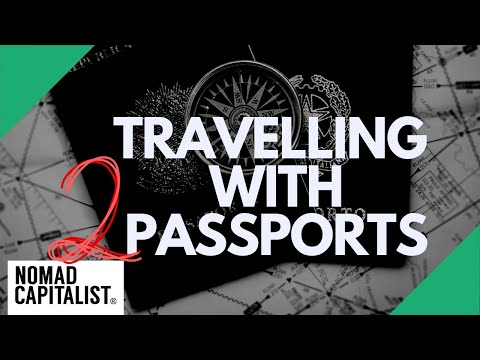
PASSPORTS AND FLAG THEORY
Now, if you’ve kept up with Nomad Capitalist and have read at least a few of our articles or watched some of our videos on the subject, you know that my approach to citizenship is a little different from that of other people.
The traditional dual citizen that people see on YouTube or Instagram is a Canadian or a US citizen that has branched out to explore somewhere else. Perhaps they had a grandparent from Ireland or another ancestor from Italy or Poland and picked up their second citizenship through descent .
This person now has two passports that allow them to travel visa-free around the European Union (EU) and North America. At this point, they’re basically traveling back and forth between the two regions, living in one and visiting the other. This is a relatively straightforward way of handling having two passports.
If you can get a European passport through ancestry, that’s fine. In the long term though, having a European passport may be a negative for your tax strategy . However, if you can get a free passport, you should take the opportunity while you can.
What I’m concerned with, and what we look into here at Nomad Capitalist, is how you can get and use passports to support your financial strategy and nomadic lifestyle — meaning passports that you can obtain from a country that you can use as a base in your international strategy to go where you’re treated best.
This means looking at all the available options that will best suit your needs rather than simply picking a place that sounds nice and trying to make it work.
As far as traveling is concerned, this involves knowing what kind of opportunities for visa-free travel are available through each citizenship. To this end, we’ve created the Nomad Passport Index to help our readers. Not only does the index account for visa-free travel but it also considers factors such as taxes and public perception to better inform you of a passport’s true value based on your personal situation and needs.
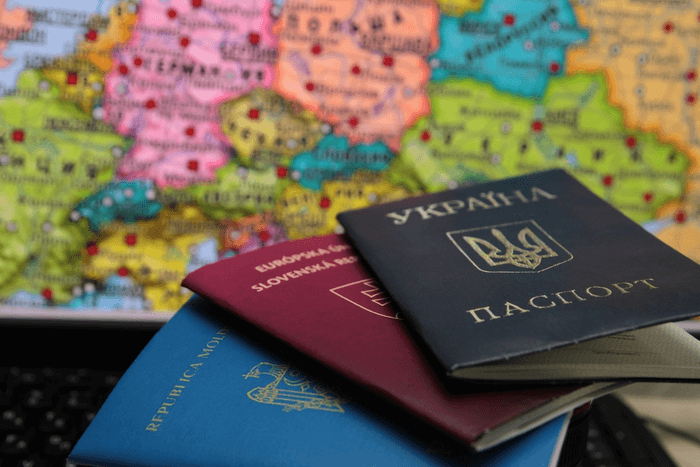
We have also created a tiered system to break down the quality of travel available with each passport. For this article, we’ll focus on these three tiers:
- Tier A Passports: Since the United States is the most difficult country to get into, Tier A passports are from countries that have visa-free access to the US as part of the US Visa Waiver Program . This is a very short list.
- Tier B Passports: These passports allow those carrying them to visit Europe’s Schengen Area without a visa. Europe is much more lenient than the US, but still not freely open to every passport holder.
- Tier C Passports: These passports are much more limited and do not allow visa-free access to the US or the EU.
The traditional example of a dual citizen is someone with two Tier A passports that has a relatively simple way of getting back and forth between destinations.
The catch is that those two Tier A passports come with tax burdens and other potential downsides that may not make the benefits of having those two passports worth it. These people will potentially have or want a series of Tier B passports that allow them a wide variety of opportunities, but with less of the drawbacks they want to avoid.
Having renounced my US citizenship, I now use a portfolio of Tier B passports that give me almost the same amount of visa-free travel as my old US passport. It’s a solution that truly allows me to go where I’m treated best.
COMMON TRAVEL COMPLICATIONS WITH MULTIPLE PASSPORTS
Whether you have two Tier A passports, a combination of Tier A and something else, or a portfolio of Tier B passports, you will certainly run into a few common complications when traveling with two passports.
The following are the issues my team , my clients, and I commonly face while traveling from country to country:
Juggling Passports with Airlines and Immigration
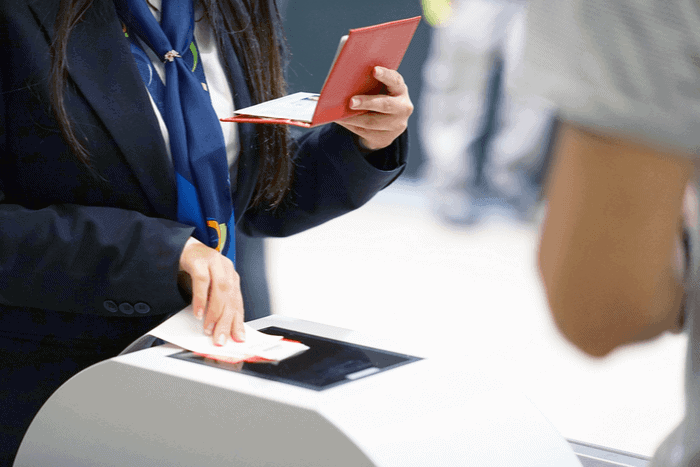
The first thing to consider is what you’re telling the airline (or whatever other method of travel you’re using) when you’re traveling between countries.
Some people worry that the airline is going to hover over them, making sure that whatever passport they entered in the airline’s database is the passport they’re going to use. In reality, this isn’t the case.
The airline’s job is to make sure that you aren’t going to be denied entry into the next country. They aren’t worried about what passport you use to get through immigration. They just want to make sure that they don’t have to get you back after you’ve been denied entry.
Customs, on the other hand, is the exact opposite. If you live in the United States, you’re supposed to enter and exit with your US passport. They don’t want you to come in as a German or Norwegian citizen if you have a US passport. While there aren’t any exit controls, they want you to leave as a US citizen as well.
They want this because, for all intents and purposes, they consider you their citizen on their soil and no one else’s. And the same thing happens if you travel to the EU. They still view you as their citizen, no matter what other travel documents you may have.
All in all, this is not as huge of an issue as it may seem at first. Each group will expect the appropriate passport and, as long as you present the documents that airlines and customs are each expecting, you shouldn’t be held up.
If you aren’t a citizen of one or both of the countries you’re traveling through, the same principle applies. Show whichever passport is most suitable to the airline you’re traveling with so they know you won’t be denied entry. Then, show customs officers whichever passport will allow you to pass through freely.
Nothing too complicated, especially if you’ve done your research beforehand.
Residencies and Traveling
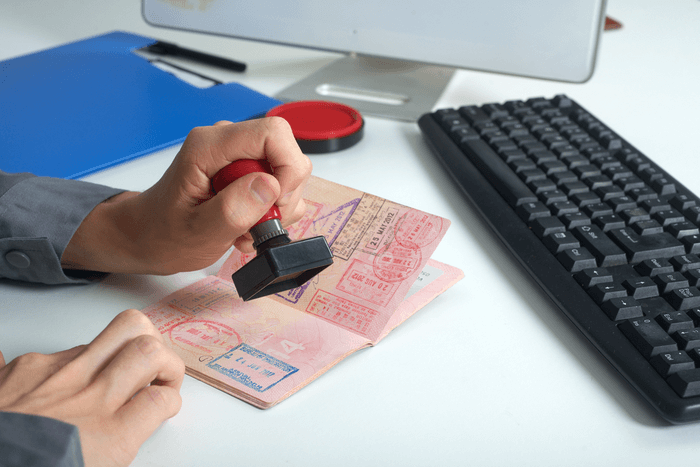
Another thing to pay attention to as you travel is if you’re going through a country where you have a residency permit . What passport you use while traveling through these countries can be potentially helpful or hurtful.
For example, if I’m going to Malaysia, I’m going to advise the airline of the passport I have that has my ten-year Malaysian sticker visa in it — just to make things easy and straightforward.
At the end of the day, it might not make a huge difference to the airline which of my passports I use as long as I can get in visa-free. The problem that could come up, however, is that entering Malaysia on another passport may invalidate my sticker visa.
Mexico is another country where this could be a problem. If I have a Mexican residence permit associated with one of my passports but enter on another, it will immediately nullify my residence permit.
The solution here is to understand the terms of entry to these countries. Mexico and Malaysia don’t really care which passport you use to enter. You’ll only have problems if there’s some other kind of immigration status to be concerned with.
As long as you keep straight which passport will admit you when you get there and understand the rules of the country you’re going to, this won’t be a problem.
Passports, Privacy Concerns, and Dual Citizen Restrictions
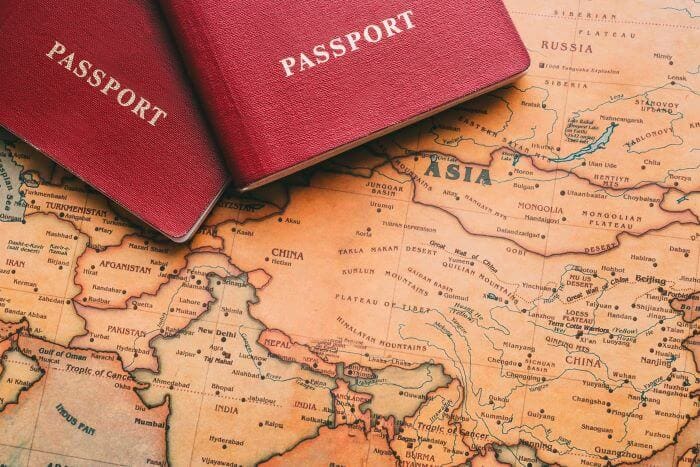
Privacy is something you’ll also want to keep in mind when it comes to restrictions on your dual citizenship status, more so for travelers who aren’t citizens of western countries.
There are certain countries where you have to report dual citizenship and other countries where you aren’t allowed dual citizenship . India, for example, only allows a very select few to have dual citizenship.
What’s often advised is if you have a second passport and want to retain your Indian passport is to always travel through a third country. In this situation, you would fly from India to somewhere where Indians have visa-free travel and then switch in that country to your second passport. By doing this, there will be no record of your second passport in the Indian immigration system.
That being said, if you find yourself in a situation like this, you’ll want to take the time to get all the information you can from the people who helped you get the passport as well as lawyers in your own country.
I personally don’t want to advise on something where you are potentially going to get in trouble at home by not reporting other citizenships.
Again, this isn’t normally an issue for westerners, but it can be for a few countries, including China.
What you should be aware of is that whatever passport you use with the airline database or to get through customs and immigration may go into a system that allows other groups to see what passports you have used as you traveled.
Any airline that flies into the United States, for example, is required to share its passenger data. You have to be careful how you enter and exit a country and how you’re representing yourself to the airline if you have a passport that you’re worried about.
There are certainly privacy concerns here, but the reality of the situation is that a lot of data is being shared across borders. Increasingly, countries will be asking you what passports you hold.
Whether it’s Electronic System for Travel Authorization ( ESTA) or the Electronic Travel Information System ( ETIS) in the European Union, there is going to be much less privacy around citizenships in the coming years. If you’re traveling with multiple passports, the big issue will be being cognizant of any potential problems or issues that can come up that could endanger your dual citizenship.
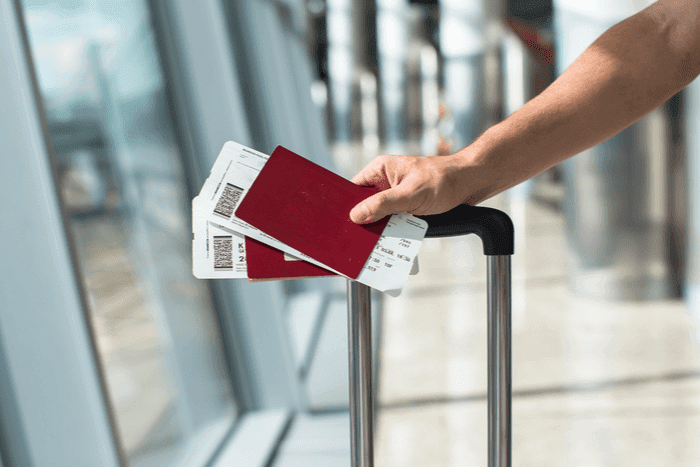
CAN A SECOND PASSPORT GIVE YOU A TRAVEL LOOPHOLE?
There are actually two definitions for “second passport.”
In one case you have two passports from two different countries where you have citizenship. The other case would be if you had two passports from the same country for whatever reason — say one of your passports was in an embassy getting a visa sticker so you got a second passport from your country so that you could continue to travel.
I get asked questions about whether you can travel in a different way, have more travel privileges or break some of the rules by having either type of second passport. People have asked if there are legal loopholes that having two travel documents can afford you.
Of course there are some privileges that come with a second passport.
Having two citizenships means you have two travel documents. If one of your countries has some kind of problem it can affect your travel options.
We have been seeing this during the COVID-19 pandemic. Persons from certain countries were refused entry when traveling to other countries. If you were Chinese and you were trying to enter a country, it didn’t matter if you didn’t actually live in China, some countries were turning away all Chinese citizens.
Additionally, not every passport can get into every country. Most Western passports have pretty good visa-free travel, but you probably can’t use them to get into Russia or China. If you have passports from two different countries it can expand your options for travel and business. It’s a good diversification strategy overall.
But other than these benefits, people want to know if a second passport can provide a kind of travel loophole.
Many want to know if you have two passports that both give access to the Schengen area in Europe if they can use the two different passports to extend their stay. For example, an American passport gives them 90 days out of the overall 180 days that they can spend in the Schengen area. The theory is that a second citizenship from another country that also has access to the Schengen area can provide an additional 90 days.
Could they use these two passports to go to the Schengen area visa-free for 90 days with their American passport and then leave, turn around and come back with their St. Lucian passport for another 90 days visa-free?
Other people have asked if they have a US passport and got a second US passport that has a different number, could they do the same thing where they leave and then come back and reenter the area using the other passport to get more visa-free travel.
While there are still a lot of countries that don’t do biometrics and some that still don’t take your photo, most countries keep good records.
When you go to a country, they scan your passport. Many countries now require biometric passports. They’re going to look at your name, date of birth, and photo and they’ll keep that on record. Sometimes they’ll capture your fingerprints or make sure they have photos.
If you leave a country and come right back on a different passport, there are certain countries that may not mind. Certain countries will let you in as long as you’re respecting their visa rules.
Let’s say you get 30 days or 90 days visa-free, if you leave every 30 or 90 days and come right back, some countries don’t care if you do that over and over again with the same passport. They can’t let you overstay but as long as you’re coming and going it’s fine.
But other countries have a rule like 90 per 180 or 30 per 365. For example, Colombia has a 90 per 180 rule, meaning you can only spend up to 90 days in a 180 day period there, regardless of the number of entries.
For those countries, it’s generally inadvisable to try and trick them by reentering with a different passport. If a country says you have visa-free access for 90 days out of every 180 days — this is the rule in the Schengen area — they aren’t talking about the passport, they’re talking about the person.
You can’t use all your different passports to come and go.
Many countries have interesting residence permit options. If you want to spend full time there I would recommend getting a residence permit or even citizenship in the country you want to live in rather than trying to trick them with two separate passports.
Many people view dual citizenship and traveling with two passports as something exotic, but what they don’t realize is that it’s really just a practical issue with a practical solution. That solution breaks down into two simple ideas:
- Enter and exit a country on its own passport, wherever possible.
- Present yourself and your documents in the most practical and suitable way possible as you travel.
Depending on the reason that you have that second passport, this will look very different in each situation.
If you have a US passport along with a Tier B passport that you picked up through economic citizenship as a Plan B, you’ll probably still use the US passport in most emerging countries if both provide you the same visa-free access.
If you have two passports (or a portfolio of passports ) from nations that are very geopolitically different, like Montenegro and Serbia, appropriately using each of those passports will allow you to gain visa-free access to parts of the world you wouldn’t have on each one individually.
Sometimes these benefits are much smaller. For example, you can get into Armenia with either a US or St. Lucia passport, but the US passport will get you through faster with fewer questions.
In other countries, being a US citizen may not be as favorable.
All in all, if you’re able to create a true, cohesive story about who you are, where you’re from, where you’re going, and why you should be welcomed there, life is going to be much easier. In my experience, the more disjointed your story, the slower and more complicated your travel will be.
GET ACTIONABLE TIPS FOR REDUCING TAXES AND BUILDING FREEDOM OVERSEAS
Sign up for our Weekly Rundown packed with hand-picked insights on global citizenship, offshore tax planning, and new places to diversify.
Are you a US citizen?
YOU MAY ALSO LIKE

What is Panama’s Qualified Investor ‘Red Carpet’ Visa?
If you imagine Panama is full of dirt roads, rural squalor and economic disadvantage, think again....

How to Get Serbian Citizenship by Exception
What do Johnny Depp, Steven Seagal, and Ralph Fiennes have in common? Well, apart from the...

How Does Italy’s ‘La Dolce Visa’, Work?
How do you even begin to explain the charm of Italy for expats? Italy's attractions include...

Malta’s Permanent Residence Program: The Ultimate Guide
Arriving in Malta at the break of dawn, the first glimpse of the island emerges from the quiet...

How to Pay Zero or Low Taxes in Malaysia (Territorial Tax)
Malaysia is beautiful, but don't just take our word for it. It's been officially recognised as the...

How to Pay Zero or Low Taxes in Costa Rica (Territorial Tax)
Costa Rica offers a stable political climate, a strong expat community, and good infrastructure....
Get the Right Passport for You
We’ve helped our clients obtain 28 different country’s citizenships, from often-overlooked ancestry programs, to fast-tracked investment options, and even exclusive programs for HNWIs. Don’t limit yourself; let Nomad Capitalist’s unbiased approach help you find the best option.
What do you want to accomplish?
Let us know your goal and we will tell you how we can help you based on your details.
REDUCE TAXES OFFSHORE
CREATE A GLOBAL PLAN B
DIVERSIFY AND PROTECT WEALTH

UNITED STATES

UNITED KINGDOM

EU COUNTRIES

Tax Amount ($US Dollars)
POLITICAL INSTABILITY
ECONOMIC INSTABILITY
MISSED OPPORTUNITIES
TRAVEL RESTRICTIONS
HIGH TAX LIABILITIES
RISK MANAGEMENT
MARKET PROTECTION
WEALTH PRESERVATION
OPPORTUNITY CAPITALIZATION
ESTATE PLANNING
Email Address
We handle your data according to our Privacy Policy . By entering your email address you grant us permission to send you the report and follow up emails later.

- Step-By-Step Guide
- Google Flights Guide
- Momondo Guide
- Online Travel Agency Guide
- Southwest Airlines Guide
- Airline Seating Guide
- Train Travel
- Ferry Travel
- Blablacar Guide
- Poparide Guide
- Hitchhiking
- Car Rental Guide
- Ride-Hailing Guide
- Public Transport Guide
- Booking Your Accommodation
- Airbnb & Vrbo Guide
- Hostel Guide
- Couchsurfing Guide
- Coronavirus Travel
- Proof of Onward Travel
- Dual Passport Travel
- Travel Insurance
- Advanced Travel Safety
- Female Traveler Safety
- Best Travel Debit Cards
- Best Travel Credit Cards
- Getting Cash
- Travel-Ready Phones
- Prepaid SIM Cards
- Top Travel Apps
- Packing Guide
- Group Tours
- North America
- Southeast Asia
- Central & South America
- Middle East & North Africa
- Australia & Oceania
- Sub-Saharan Africa
- South & Central Asia
- Cheapest Destinations
- Split-Ticketing
- One-Way Return Tickets
- Hidden-City Ticketing
- More Strategies
- Budget Airline Guide
- Cheap Transportation Guide
- Cheap Accommodation Guide
- Top Budget Travel Tips
- Travel Blog
The Ultimate Guide To Traveling With Two Passports

Being a dual citizen comes with a lot of benefits for travelers. Not only does it give you access to two different embassies in the event that you need help when abroad, but it also means you can benefit from having two different options when it comes to entering different countries and taking advantage of their visa policies.
If you don’t have a second passport, I highly recommend finding out if you qualify for one. If you were born in another country or one/both of your parents, grandparents, or even great-grandparents are citizens of another country, you may also qualify as a citizen. Look into your family history and see if you can get a second passport!
I’m a dual Canadian and Romanian citizen and this has proven to be extremely useful for me in my travels since my Canadian passport gets me visa-free access to the USA & most other countries around the world whereas my Romanian passport gives me complete freedom of movement within the EU.
This means that while other Canadians have to calculate how many days they can spend in each country of the Schengen Area on their 90-day visa while also planning out their stay outside of it so they can maximize their total time in Europe, all I have to do is flash my Romanian passport and I can stay as long as I want!
And I’m not the only one who benefits from this. If you’re reading this page, you probably also have dual citizenship and you’re wondering how you can make the most of it.
The thing is, there is a process to traveling with two passports and you have to know what you’re doing because otherwise, you may run into immigration issues if you flash the wrong passport at the wrong time.
Luckily for you though, I have detailed everything you need to know about traveling with two passports in this easy-to-follow 5-step guide!
1. Decide which passport to use to enter your destination country
Before you book your flight or head to the airport, you should first figure out which of your two passports you plan to use to enter the country you plan to visit. The one that you should use is the one that gives you the easiest access to that country with regards to visa requirements.
Note: If you are a citizen of the country you plan to enter, then you must use that country’s passport to enter it. You cannot enter a country that you are a citizen of by using another country’s passport.
If you are not a citizen of the country you plan to enter, then you can find the visa requirements for that country by checking out its Destination Guide or by going to Wikipedia and searching for “visa policy of ______”, inputting the name of the country you’re planning to visit in the blank space.
And if you want to compare the visa requirements for two passports at the same time, check out the Passport Index . Just input your two nationalities and find out which one gives you easier access for every country in the world side by side!
Choose the passport that gives you the most visa-free days in that country .
However, if neither of your passports is visa-exempt for your destination country, then pick the one that only requires an eTA, eVisitor, or ETIAS. If neither of them fit that criteria either, then pick the one that only requires a Visa on Arrival or eVisa.
Note 1: if you need to get a visa to enter your destination country, make sure you’re prepared for it by applying soon enough before your trip. Learn more about the different types of visas in my Guide to Visas & Vaccinations .
Note 2: when crossing a land border, many countries will not allow you to to use a different passport than the one you used to exit the country you are crossing from. They usually ask to see an exit stamp for that country before allowing you to enter.
If both of your passports have the exact same visa requirements for your destination country, then just use the same passport that you used/plan to use to enter the country of your departure airport to make it easier for you.
For example: if you are in France on a US passport and you plan to fly from France to the UK, just continue using the US passport (assuming your 2nd passport has the exact same visa requirements for the UK) to enter the UK in order to keep things simple.
2. Which passport to use when booking your flight
When booking your flight to another country, most airlines will ask you for your passport information. This is partly so they can identify you, but it’s also because they need to make sure that you are legally allowed to enter the country that they are bringing you to, whether that’s because you’re a citizen, you have visa-free entry, or you have a valid entry visa.
The reason why airlines care whether or not you’re legally allowed to enter the country they are bringing you to is because if you’re denied entry into that country after arriving and you are deported back to your original country, it’s the airline’s responsibility to take you back.
Note: this is also why sometimes an airline will ask you for proof of onward travel before they will let you board a flight. If it’s discovered that you cannot legally enter the country they bring you to, they often get fined for bringing you there in the first place. Learn more about this in my Guide to Proof of Onward Travel .
Therefore when booking your flight, you should use the details for the passport that you chose in Step 1. In other words, the passport that will legally let you enter the country of your destination country and that you plan to use to enter it.
3. Which passport to use when checking in for your flight
This one is pretty simple. Just check in to your flight with the same passport that you used to book it because that’s what the airline check-in agents will have in their system.
If you show them any other passport, they will get confused and the check-in will get delayed.
4. Which passport to use at border control in the departure country
This one is also pretty simple. The passport you show to the immigration officials at border control when leaving a country has to be the same one that you used to enter that country.
Note: this might be different to the one that you plan to use to enter your arrival country.
This is because their system has been tracking how long you’ve been staying in the country and if you show them a passport that doesn’t have any entry data, they might assume that you entered the country illegally. So to avoid any issues or questioning, just remember to show them the exact same passport that you used to enter the country.
For example: if you entered the UK on a US passport, you must show that exact same passport to the immigration official at the border control of your departure airport in the UK.
5. Which passport to use at border control in the arrival country
This is the final step in your dual passport journey and if you’ve been following this guide so far, then you probably already know the answer to this one.
The passport that you show to the immigration officials at border control when entering your destination country should be the one that you chose in Step 1 .
In other words, the one that gives you the easiest access to that country with regards to visa requirements (unless you are a citizen of that country, in which case you use that country’s passport).
Some important things to note about dual citizenship:
- If your second passport translates your name into another language, find out if they can add an English translation of your name on another page to help prove your identity in case someone questions the validity of your two passports.
If your second nationality is for a country that matches one of the previous descriptions, you may want to think twice about becoming a citizen and getting a passport for that country since the hassles of being a citizen may outweigh the benefits. However, it is totally up to you to decide based on your own personal situation!
And that’s all there is to it!
Traveling with two passports comes with many benefits and as long as you know how to use them when crossing borders, you’ll never run into any issues doing it! Luckily though, the process is pretty simple and straightforward.
If this guide helped clear up the process for you, let me know in the comments below. And if you want to know how to protect yourself while abroad, check out my Guide to Staying Safe While Traveling .

About The Author
Hi there, I’m Sebastian , founder and creator of Travel Done Simple. Since I turned 20, I have lived in 5 different countries and traveled to over 40 others! You can learn more about me on my About page and find me on social media.
Hi there, I’m Sebastian , founder and creator of Travel Done Simple. Since I turned 20, I have lived in 5 different countries and traveled to over 40 others! You can learn more about me on my About page and find me on social media.
I’m Sebastian , the founder and creator of Travel Done Simple! I was born in Europe and raised in Canada, but I now consider myself to be a citizen of the world. When I’m not busy exploring new destinations, I’m here giving you the best travel tips so you can do the same!
You can learn more about me on my About page and if it’s your first time on my site, start here !
Find Whatever You Need
Latest travel blog posts.

The Best Balkan Trip Itinerary

Life in the Kootenays (BC, Canada)

My Experience In Morocco Feat. That Time I Crashed A Moroccan Baby Shower
Like on facebook.
(And join the official group too!)
Follow on Instagram
Downwithsebster.

Home | About | Contact | Privacy Policy & Disclosure
© 2024 Travel Done Simple - All Rights Reserved
- Saint Kitts & Nevis
- Saint Lucia
- Antigua & Barbuda
- Malta (MPRP)
- United Kingdom
- St. Kitts & Nevis
- Antigua & Barbuda
- Testimonials
- Astons in the media
- Partner With Us
Information made available on this website in any form is for information purposes only. It is not, and should not be taken as advice. You should not rely on, or take or fail to take any action based upon this information. Please do not disregard professional advice or delay in seeking advice because of something you have read on this website. Astons professionals will be pleased to discuss any specific questions you have.
Astons > Blog > Traveling With Two Passports - Here’s How To Use A Second Passport
- January 31, 2024
Traveling With Two Passports – Here’s How To Use A Second Passport
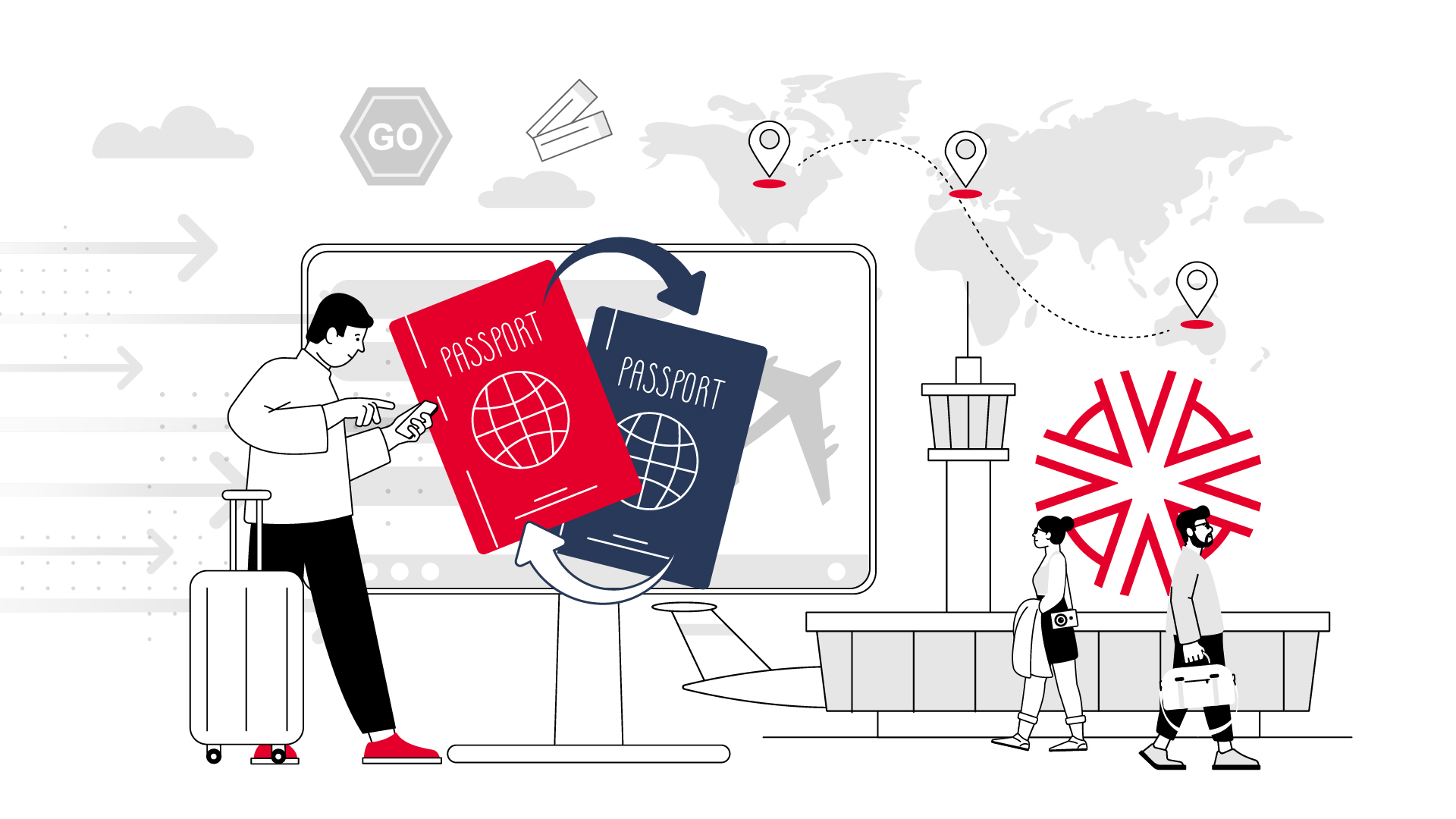
Dual citizenship and a second passport are a measure of genuine status in today’s world – and possessing two passports elevates traveling to unparalleled dimensions.
Dual citizenship is as much a tool and resource as a status symbol.
Having a second passport transforms more of the world into a visa-free zone, which by default means fewer government databases into which you need to submit your personal information.
Not to mention enhanced privacy, without needing a visa, you are not informing governments of your travel plans and itinerary.
Being a dual citizen and traveling with two passports unlocks the world while better securing your privacy as you explore it.
But how exactly does a dual citizen travel and use two passports? The experts at Astons are here to explain.
How dual citizens travel with two passports
Having two passports is one of the most significant benefits and advantages of being a dual citizen.
But the question is often asked: how do you travel using two passports?
It’s a great question, and the answer is actually much more straightforward than many expect.
To best understand how to travel using two passports, it is easiest to divide the travel in the following ways:
- The stages of traveling – arrival vs departure
- Where and how you are traveling
The stages of traveling with two passports
Traveling with two passports – the departure process.
When traveling with two passports, the most important thing to remember is which one to use when.
It is easy to confuse departure and arrival elements simply because they intersect at the same point – the departure airport.
However, thinking about these elements individually makes it easier to understand how to apply the appropriate passport to each stage.
To begin with, at the departing airport, there are typically three instances in which you need to present a passport – in order:
- At check-in
- At passport control
- At the boarding gate
Situations 1 and 3 are connected to the airline, and thus, by default, the plane ticket and the arrival destination.
Situation 2 is based solely on how you are in the system – specifically, how you entered the country you are departing.
When booking your plane ticket, you need to use the passport you intend to enter the next country with – not the passport you need to show to depart the country you are currently in.
At check-in and the boarding gate, you will show the airline staff the passport you used to book the ticket and intend to use to enter the next country. It is not their business or concern if you have other passports in your possession.
At the departing passport control, you do not need to show them your airline ticket – so you don’t. It is not their business or concern if you have other passports in your possession.
You only need to present the passport you used to enter the country with – and that is precisely what you do.
Once you are finished with departure passport control, you can put that passport away – you will no longer need it.
As a note, some countries require their citizens to depart, enter, or both using that country’s passport if you are a citizen of that country.
For example, all US citizens must use a valid US passport to enter and depart the United States – no exceptions.
Traveling with two passports – the arrival process
The arrival process is straightforward once you arrive in your new country.
Everything at this stage only involves one passport – the one you used to book the ticket with.
You simply depart your plane and head to arrival passport control.
At passport control, present the passport you want to enter the country with – the one that matches the plane ticket – and get entered into the system under that identity.
For the return journey, do the same steps, but the airports are simply reversed.
That is how dual citizens travel using two passports.

Does where or how you travel affect using a second passport?
There is an interesting twist when discussing international travel, as not all international travel is the same.
Where you travel can actually make international traveling more like domestic travel.
For example, once you have entered any EU country that is a member of the Schengen Zone , you can travel internationally to any other EU country of the Schengen Zone without needing a passport or dealing with passport control. This applies to the travel element obviously, to book a plane ticket is the same process and requires the same information.
However, if you travel from an EU country in the Schengen Zone to an EU country outside the Schengen Zone – Cyprus , Ireland, Bulgaria, and Romania – you do need to pass through passport control.
At these points, you need to use the same passport you used to enter the first EU country.
The Schengen Zone is a group of 27 European countries, mostly EU members, that have eliminated border control for travel between themselves.
If a dual US/German citizen entered Germany using their German/EU passport, and during their visit that person decided to travel to Italy, they would not be bothered with passport control.
However, if they were to visit Bulgaria, they would need to deal with border control and show their German passport to enter and leave Bulgaria to return to Germany.
Note – As of 1 April 2024, Bulgaria and Romania officially entered the European Union’s Schengen Zone
Likewise, how you travel can impact using two passports, but only in operation—the arrival and departure elements of which passport to use when remains the same.
For example, if you are traveling across international borders by bus, it is the same procedure as buying an airplane ticket. You must show the same passport for entry and departing the same country.
When crossing borders by bus, the bus ticket is often irrelevant, but to be sure, when travel tickets are involved, always follow the framework outlined in the airport example above.
When crossing by car, no ticket is involved; this is simply a straightforward passport issue. When you reach the departing border, you show the passport you entered that country with.
When you reach the next border, you present the passport with which you want to enter the country.
As a note, vehicle and insurance documentation can complicate this situation – specifically, the vehicle and insurance documents need to match the identity you present at passport control.
To address any discrepancies, you need to speak with the agencies that issued those documents and ask how they address the situation of dual citizens with more than one passport. They may issue duplicate documents with the other identity.
When traveling by ferry or train, implement the airport framework.
Benefits of traveling with a second passport
There is a litany of benefits and advantages to being a dual citizen, but arguably the biggest is having two passports.
While citizenship represents rights, passports represent access, and together, they are status.
With two passports, an entrepreneur, investor, and family can unlock destinations they are currently shuttered from due to visa requirements.
For example, US citizens require a visa to enter Russia, China, and Brazil. However, those with Caribbean passports from Dominica or Grenada can enter those countries visa-free.
A dual citizen of the US and Grenada would wield the power of both citizenships and, by default, both passports.
The Caribbean countries have signed an historic collective agreement to increase investment requirements to at least $200,000 “no later than 30 June 2024”
Also, launching in 2025 is ETIAS, the EU’s eVisa system that will require all third-country nationals – including US, UK, Canadian, and Australian citizens – to apply for approval in order to enter any EU country. All EU citizens and EU residents will have ETIAS exemption.
Likewise, there are situations in which you don’t want some countries to know which places you have visited in the past. By using separate passports, you can shield your travel from unwarranted inspection.
Using two passports can also prevent the country you just left from knowing where you are going.
Pros to traveling with two passports
- Global mobility is genuinely global
- Access more visa-free countries
- Extended length of stay in certain countries
- No residency visa is needed in certain countries
- Use as identity documents to open bank accounts
- Prevent your travels from being tracked by unscrupulous parties and apps
- Use as an identity document to access education and health institutions in certain countries
- Access business grants and incentives in certain countries
- Work in certain countries as a citizen or resident without any visa requirements
- Privacy at a level unattainable any other way
Cons to traveling with two passports
- Cannot purchase round-trip tickets
- Passport management – get confused about which passport to use when
- Passport renewals – some countries require submitting biometrics in person
- Picking a favorite
How to become a dual citizen and get a second passport
Being a dual citizen is accessing a degree of self-sovereignty that was once only available to monarchs and the elite.
Today, however, this freedom and power move is available to entrepreneurs, investors, and families worldwide.
Astons provides access to a portfolio of citizenship and residency solutions that provide direct access to dual citizenship or Golden Visa programs that can lead to citizenship eligibility.
Our most popular programs are in the European Union and the Caribbean, and most can be completed in less than a year.
Which is best for you depends upon your wants, dreams, goals, and demands, but our team will create a list of solutions for you to choose from that addresses them all.
Schedule your Free Confidential and Comprehensive Consultation with an expert at Astons now.

Thomas Julian
Marketing Manager – English-speaking Markets Digital Professional/Dual Citizen/Expat Consultant

By subscribing you agree to Astons Privacy Policy terms
- +971 600 521611
Russia, Moscow
- +7 910 468 35 92
- +7 916 150 53 56
Turkey , Istanbul
- +90 531 765 26 97
Cyprus, Limassol
- +357 25 262130
Portugal, Cascais
- +44 207 292 2977
USA, Fort Lauderdale
- +1 800 986 9175
Malta, St Julian’s
- +356 77149119
Personal immigration expert will answer all your questions in detail and offer the best solution for your needs.
Personal real estate agent will answer all your questions and offer the best properties for your needs and budget.
Required information
How do you wish to be contacted?
Phone Email Telegram WhatsApp
Additional information
General Enquiry Turkish Citizenship Grenada Citizenship Dominica Citizenship UAE Residency Greece Residency Cyprus Programs St. Kitts & Nevis Citizenship Portugal Residency Property Investment Malta Programs St. Lucia Citizenship Antigua & Barbuda Citizenship Vanuatu Citizenship Monaco Residency Spain Residency
Are there any family dependents applying with you? If yes, please specify the total number of applicants.
I agree to the terms of the Policy
This website uses cookies. View our Privacy Policy to find out more
Can you have multiple passports?

The U.S. is just one of the more than 60 countries that permit dual citizenship, allowing its citizens to hold passports from other countries in addition to their American passports.
Dual citizenship, also known as dual nationality, allows you to work, live and study (among other benefits) in each country you hold citizenship, without the risk of losing your U.S. nationality.
There are multiple ways Americans can qualify for a second citizenship, including via marriage, birth, or citizenship by investment, a concept known as Golden Visa .
In addition to having two passports from different countries, Americans can also simultaneously hold two U.S. passports.
This story explains how dual nationality works in the U.S. and how to obtain multiple U.S. passports.
Can I have a U.S. passport and another passport?
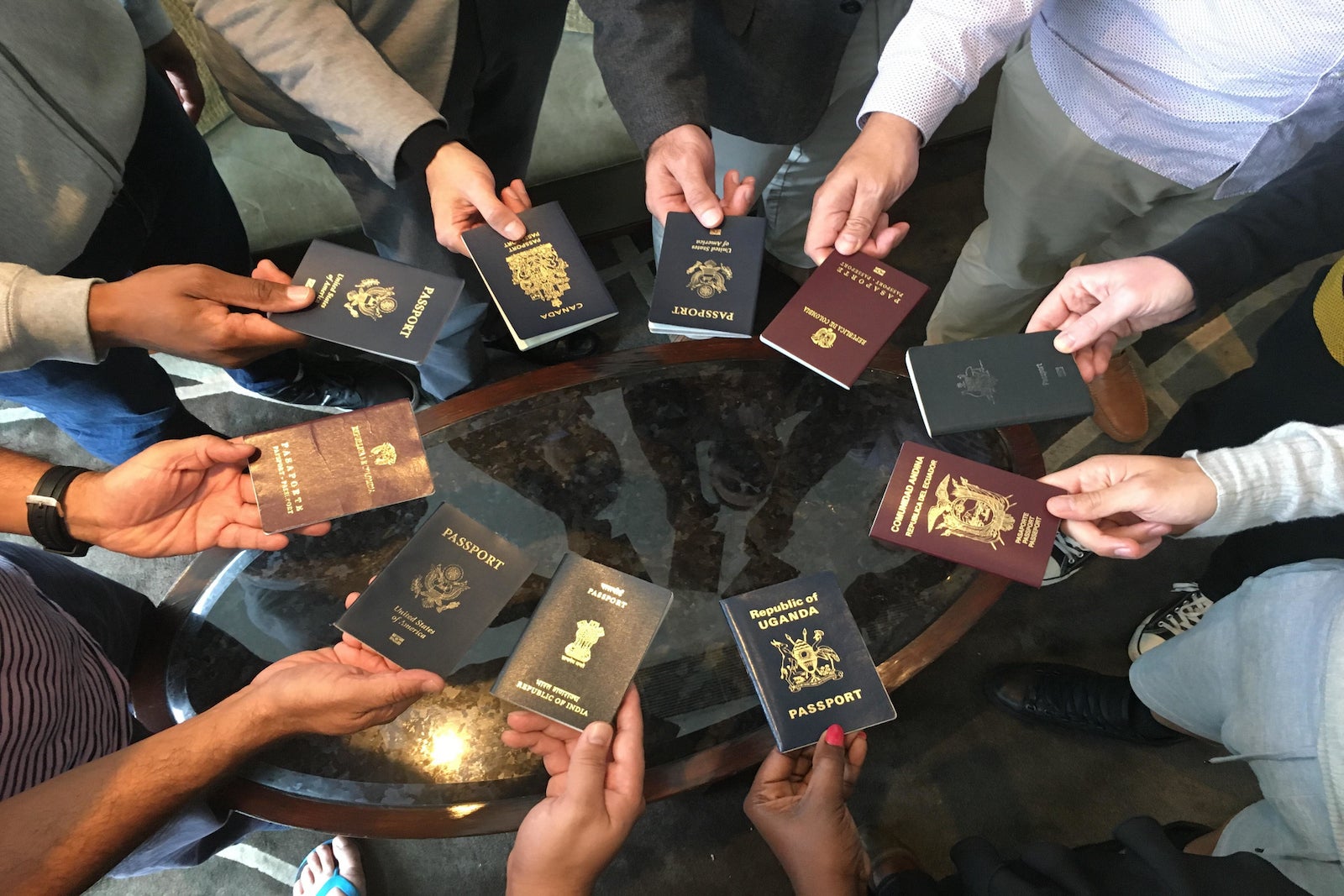
As mentioned, federal law does not restrict Americans from becoming a national of two countries simultaneously and therefore holding passports from two different countries, a concept known as dual nationality.
"A child born in a foreign country to U.S. national parents may be both a U.S. national and a national of the country of birth," according to the State Department . "Or, an individual having one nationality at birth may naturalize at a later date in another country and become a dual national."
This means that U.S. citizens may "naturalize in a foreign state without any risk to his or her U.S. citizenship," thus making Americans eligible to hold passports from other countries and their U.S. passports.
Keep in mind that should a country such as Japan require you to renounce your U.S. nationality, you wouldn't be able to hold two passports. Otherwise, you wouldn't lose your American citizenship. Be sure to double-check that the second country allows you to dually hold an American passport in addition to theirs.
Can I have a second U.S. Passport?
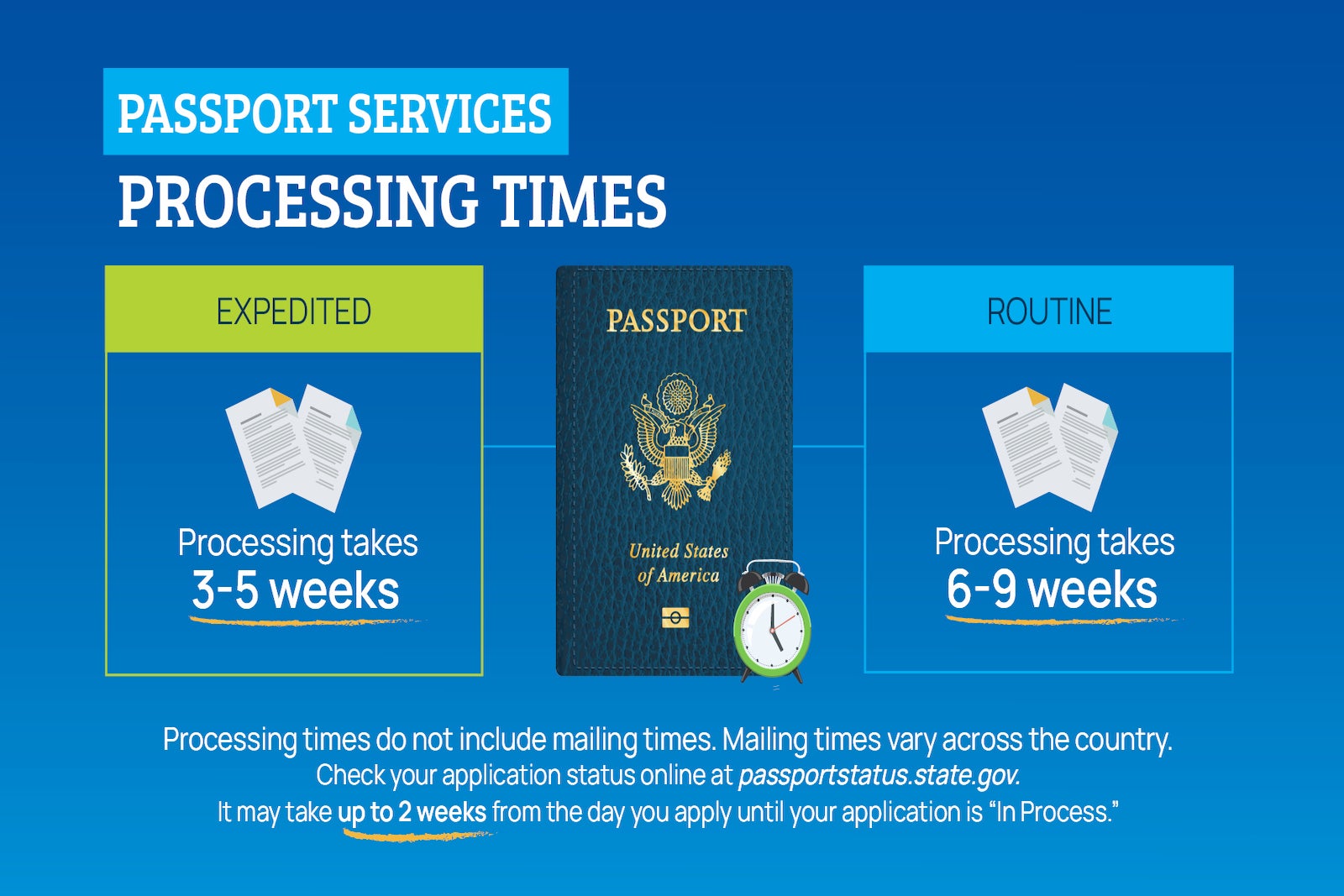
A little-known fact is that Americans are eligible to hold two U.S. passports at the same time, which can be particularly helpful for travelers who frequently travel to places that require visas."As I work on trying to visit every country, I have to apply for a lot of visas. Sometimes these can take a long time," explained TPG credit card writer Ryan Smith. "When I am planning an upcoming trip to multiple countries that need visas, I often don't have enough time to wait for my first visa to be completed and then start the application for the second visa. Therefore, this helps me apply for two visas at the same time." This application process works the same as it does for your normal passport application, but there's an extra form you need to submit, explaining why you need a second passport. Applicants must submit this form, along with the other requested documents, photos and fees via mail.
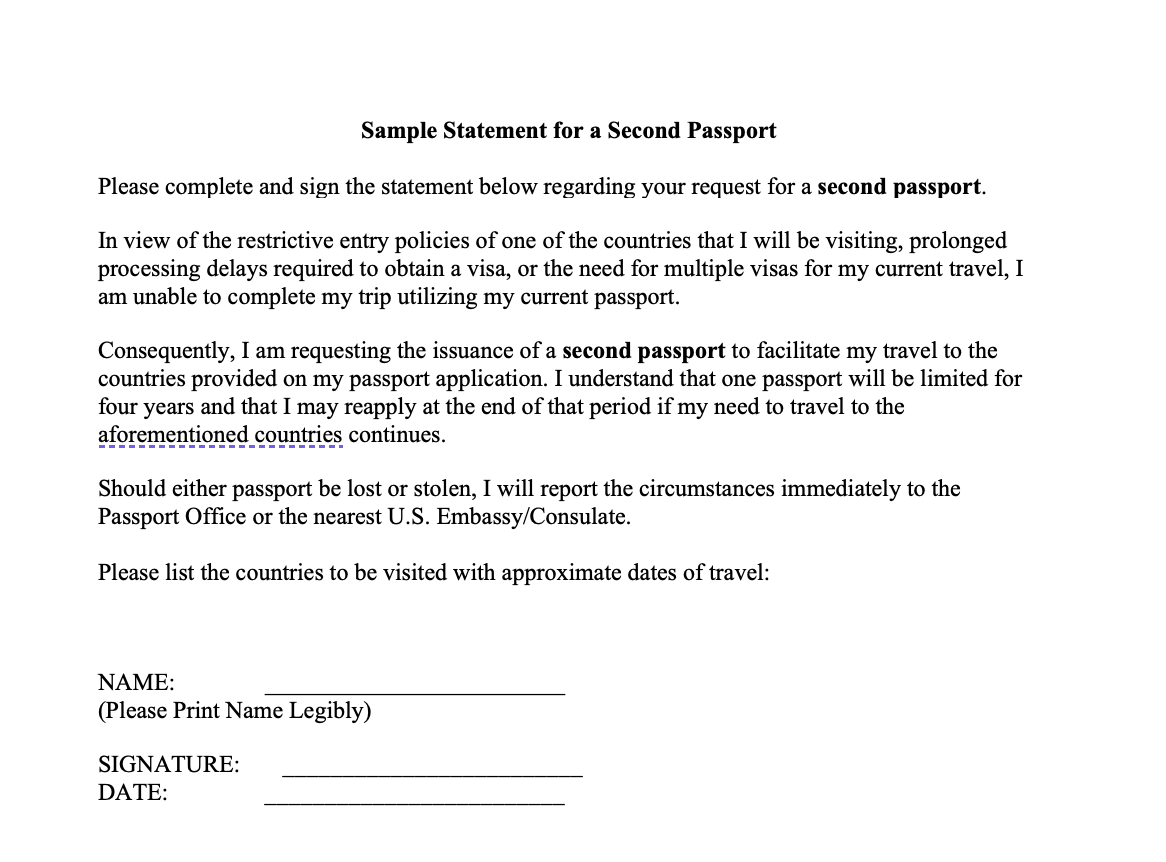
Know you must meet several additional requirements in order to be deemed eligible for a second U.S. passport book, which the State Department outlines here . Valid reasons for applying for a second passport book include frequent international travel to places that require visas; travel to a foreign country that will deny entry based on previous travel to other countries and international urgent travel that does not provide enough time to process a visa, among others.
Applicants can choose from three types of standard service through the State Department, including expedited service, which takes three to five weeks, not including mailing times. Routine service currently takes six to nine weeks, according to current processing times.
Also note that your second U.S. passport will only be valid for four years, while your primary U.S. passport will remain valid for the normal 10 years.
Because you typically need to have an international trip coming up within the next three or four months to get approved for a second passport, Ryan recommends paying extra to go through a private agency to process this application. Options include ItsEasy Passports & Visas , Travel Visa Pro and Visa HQ .
"It's simpler than doing it in the mail and having it get messed up or waiting until the absolute last minute and trying your luck at a passport agency location," he said.
Another piece of advice from Ryan is to avoid having both U.S. passports on you at the same time to curb any potential confusion by border agents.
"This was a massive problem when I was stopped for a baggage inspection on a trip to several African countries. They lost their minds when they found that I had two passports and I had to contact the U.S. Embassy to provide approval and verification that both of my passports were valid and that neither one was fake," he recalled. "That involved several hours."
How do I apply for a different country's passport?
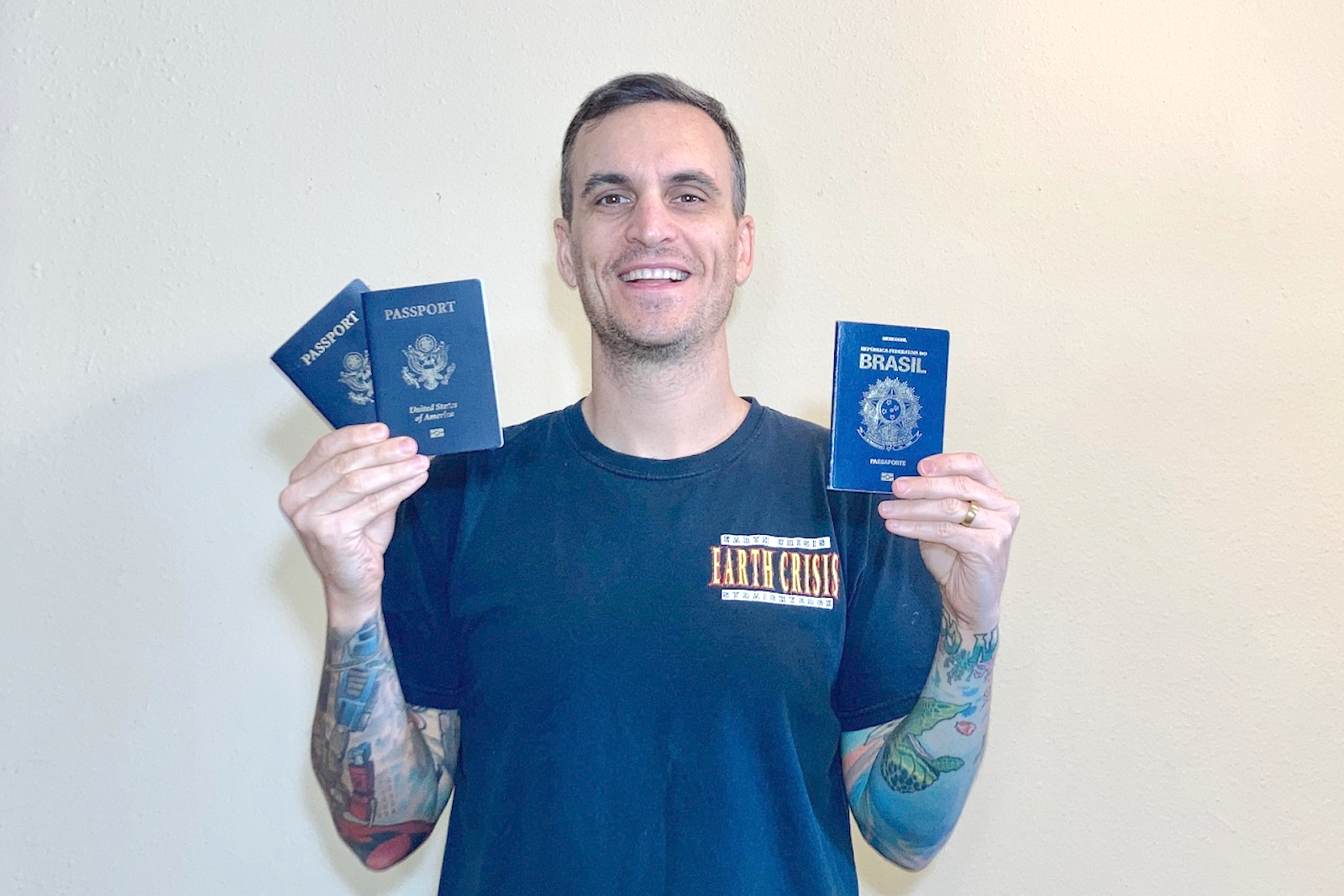
The passport application process is country-specific, and you'll need to go through the process for each passport you intend to obtain.
To apply for passports for other countries, start online by visiting the official government website of your respective country to verify you are eligible for another passport. Applicants will likely have to meet certain characteristics to obtain citizenship, such as having resided in a country for a certain amount of time. For example, the U.K. government explains how to apply for a U.K. passport online , which involves living in the country for at least 12 months, unless married to a U.K. citizen.
Holding passports from two different countries provides users with multiple benefits, including making it easier to obtain visas necessary to work or study in another country or simply just to enter the country.
For example, Ryan has a Brazilian passport in addition to two American passports, and which one he uses depends on the country to which he's traveling.
"For countries that charge money for a visa, I can use a passport that has a cheaper or easier visa," he told me. "Some countries have better rules for Americans, so I use that passport."
Since no country in South America requires a visa or passport for Brazilian travelers, Ryan uses his Brazilian passport to travel between South American countries with just an ID. Even so, he would need a passport to travel to places beyond South America, such as from the U.S. to Brazil or vice versa.
Secondly, having multiple passports also allows these people to live in a country that is not their home country long-term, instead of being subject to the usual rules limiting the amount of time a tourist can stay within a respective country.
Bottom line
If you are a holder of a U.S. passport and another passport, a U.S. national or dual national, you must use your U.S. passport to travel in and out of the country.
Certain countries may also require dual nationals to use its passport to enter and leave that country, so consider bringing both your U.S. passport and any other passports you hold when traveling.
Having passports from two countries is possible for U.S. passport holders, in addition to many other countries. Not only can it make it easier to enter another country, but also helps users find employment opportunities abroad more seamlessly, as well as stay for extended periods of time within the country you hold a second passport.
If you are interested in obtaining a second passport to complement your American one, start with the government of the country you are targeting to determine if you are eligible for such.
If you are a frequent international traveler who could benefit from having a second U.S. passport, you can apply for one online through the State Department, though you may want to consider a private agency for expedited service and assistance.
For more information on the U.S. passport application process, be sure to read:
- State Department plans to widely open online passport renewal system in 2023
- Where can I cruise without a passport?
- Passport expiring soon? Visit these countries within your 3-month renewal deadline
- A complete guide to the 6-month passport validity rule
This is a privately owned website and not a government agency. FTC Disclosure: We may be compensated if you make a purchase via a link on this site.
Uspassporthelpguide.com is a privately owned website. Privacy
How to Easily Travel with Two Passports – A Guide to Understanding Dual Citizenship
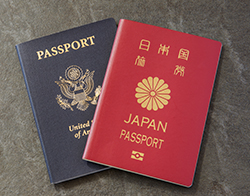
Are you a dual citizen looking to travel with two different passports? Has exploring multiple countries with two separate documents confused and overwhelmed you? If so, worry no more because this guide, specifically tailored for dual citizens, will provide all the details needed to make navigating international borders with multiple nationalities effortless. Here, we’ll cover everything from obtaining dual citizenship in the first place to how it works when you get on a plane or cross border checkpoints.
TABLE OF CONTENTS
How to Travel With Two Passports?
Dual citizenship, as its name suggests, is holding citizenship in both the US and another country simultaneously. This can occur in several different ways depending on the situation. The first is by birth. If a child of a US citizen is born in another country, the child holds citizenship in both countries.
Marriage is another way that this can occur. Most countries automatically extend citizenship to people from the US who marry a person from that country. The third is by going through the naturalization process. This is where a US citizen will become a naturalized citizen.
When this happens, the person does not lose their previous status as a citizen of their home.
If you hold dual citizenship and are traveling with two valid passports, there are a number of essential things to keep in mind.
What Are The Benefits of Having a Second Passport?
The most important thing to know is that even if you are a dual citizen traveling with two completely valid passports , you will always need to travel with your United States passport at all times. You must use your US passport when you attempt to re-enter the US. The other passport is for the country where you have dual citizenship and want to enter that country.
The passport you should present when entering a country often depends on which passport you use when booking your airfare or other travel accommodations. For example, if you hold dual citizenship in France and the US, you may book your first flight with your French passport.
Then, book your return trip with your U.S. passport. In that event, you would present your French passport when you reach your destination. Hence, you’re US passport when you return home to the US. As a general rule of thumb, you should always use the passport number for the country you plan on visiting when booking any round-trip ticket.
Issuing and Renewing Passports
If you hold dual citizenship and plan on renewing or applying for a US passport , your second passport is not part of the application process. It can, however, be used as proof of your identity. Renewing your foreign passport while living in the US requires contacting your country’s embassy. Many will require you to return your current passport to complete the renewal process.
All in all, dual citizenship has many benefits, making it an attractive option. It can open the door for more opportunities to expand your career, study, and travel. Having dual citizenship also allows you to exploit two countries’ economic and political systems.
Related Topics

Top 10 Countries Every First-Time Traveler Must Visit

Travel Photography 101: How To Take Great Travel Photos?

7 Air Travel Tips to Have an Enjoyable Flight
Choose your passport office location, passport services.
- New Passport
- Passport Renewal
- Child Passport
- Passport Replacement
- Name Change
- Lost Passport
- Passport Correction
- Second Passport
- Passport Card
Where to Apply
- Passport Offices
- Expedited Services
- Regional Passport
- Expedited Visa & Passport Directory
- Acceptance Agent
Passport Forms
- Passport Photos
- Passport Requirements
- Passport Fees
- Passport Books
- Passport Applications
- International Drivers Permit
- Travel Visa
Do you really want to delete this post ?
- Global Citizen
- Money Works
- Global Issues
- Getting Around
- WU Partners
- Regional News
- Europe & CIS
- Middle East & Africa
- Asia & Pacific
A guide to Dual Nationality and Multiple Passports
A dual nationality (or citizenship) is a legal status that means you’re a citizen of two different countries at the same time. In America, it means that you’re both a U.S. citizen and a citizen of another country, and you hold passports for both nations.
Having dual citizenship can be a great advantage. Perhaps you recently immigrated to a new country, but you still travel home frequently; with dual nationality, you can access the benefits and rights of each country. You may enjoy freedom of movement and expanded opportunities to live in either nation for education, work, and business.
However, not every country allows dual citizenship, and the rules vary among those that do. Understand the rules and nuances of applying to become a dual citizen, and decide whether it’s possible in your chosen country, and whether it’s worth any potential time and expense.
No matter what nation you belong to, you can send money to your family and loved ones, even while you’re traveling. The Western Union money transfer app is convenient and reliable, so it’s easy to transfer money between different countries and currencies.
Download the app
How to get dual citizenship
You’re automatically a citizen of the country you were born in. Your passport is tied to your citizenship, so you will hold multiple passports if you also hold dual nationalities.
The United States allows for dual citizenship whether you apply for citizenship in a country that allows it, or you’re born into it. This means that the U.S. does not require its naturalized citizens to give up their citizenship in their country of origin.
In some situations, dual citizenship can be automatically granted through birthright, such as when a child is born in the U.S. to parents who are residents of a foreign country. The child becomes a citizen of the U.S. and the birth nation that they inherit from their parents. The inverse is true for children born overseas to U.S. citizens.
Some nations require you to prove that a family member or ancestor held citizenship, and that you are a direct descendant of them. This can be an attractive option, as there are more programs today that are aimed at promoting cultural exchange between nations and those looking to honor their own roots. And in many cases, marrying a citizen of another country can lead to obtaining that country’s citizenship as well.
Advantages and disadvantages of dual nationalities
Many with dual nationalities find that they can enjoy the benefits and rights of both countries. These benefits can include obtaining green cards for family members, the right to vote in either country, or enrolling for work and school without needing a separate visa. You can also apply for public programs and financial assistance.
The advantages of dual nationalities mean that you can travel and live abroad for as long as you’d like without losing your U.S. citizenship. And unlike green card holders or permanent residents, if you live outside of the United States for over a year, you won’t need a re-entry permit in order to return.
However, the process of obtaining dual nationality can be complex and varies by country. In some cases, you may have to forfeit your original citizenship when applying to become a U.S. citizen. Major countries like China or India don’t recognize dual citizenship, and you will automatically lose your citizenship to those nations if you apply to be a U.S. citizen. Dual citizenship also comes with the chance of dual taxation in both countries.
Applying for dual citizenship is a complicated and typically expensive process that may require the expertise of an immigration lawyer to understand the requirements and legal implications. The process of obtaining any citizenship, whether you’re changing citizenship or adding dual citizenship, can cost thousands of dollars and take years, depending on your situation and how long you’ve been a permanent resident.
Multiple passports for dual nationalities
Once you become a citizen, you can apply for a passport in each country of citizenship.
Having multiple passports can come in handy to ease any travel frustrations. With multiple passports, you can avoid visa restrictions or entry/exit complications. Using different passports for different purposes can also help protect your privacy.
If you are a U.S. citizen with more than one passport, you must use your U.S. passport to enter and leave the United States—however, if you’re traveling to another country, you may use whichever passport you prefer.
Lastly, if you’re considering dual citizenship, it’s vital to know the rules and restrictions of your home and adopted countries while following the application process specific to each country. This often includes providing documentation, undergoing background checks, and paying fees.
No matter what countries you’re proud of to be a citizen, Western Union is here to make the distance feel closer. Help family members and loved ones using Western Union’s money transfer services. You can go online , download the app , or visit an agent location to send money in person.
Send Money from the United States
Similar Blogs
How are currency exchange rates determined, what causes exchange rates to change, how often are exchange rates updated, protecting your finances: how to recognize and avoid tax scams.

- Customer Care
- Intellectual Property
- Terms & Conditions
Cookie Settings

U.S. Immigration Support is an information website not affiliated with the United States government. We do not provide legal services.

U.S. Dual Citizenship Explained: A Complete Guide to Acquiring and Managing Dual Nationality
In 2020 alone, nearly 900,000 people obtained U.S. citizenship. Interestingly, a significant percentage of these new citizens did not relinquish their original nationality, embracing the concept of dual citizenship. This guide serves as an illuminating resource for those navigating the nuanced path of acquiring and managing dual nationality in the United States. Covering a wide array of topics, from the legal implications and benefits, to the process of obtaining dual citizenship, and how to effectively manage the responsibilities that come with it, this guide provides an exhaustive insight into the multifaceted world of dual citizenship. The concept of US dual citizenship allows individuals to be citizens of two countries simultaneously.
Understanding Dual Citizenship
Acquiring US dual citizenship can provide a plethora of benefits, including access to social services, work rights, and the ability to participate politically in two countries. To grasp the intricacies of dual citizenship, one must first understand its core definition. US Dual Citizenship, or dual nationality, refers to the legal status whereby an individual is concurrently recognized as a citizen of two countries. This recognition confers upon the person the rights and obligations of citizens in each country, such as the right to live, work, vote, and be subjected to the laws therein. This intriguing legal status comes with unique benefits and challenges, shaped by factors such as international relations, personal circumstances, and the laws of the countries involved.
Benefits of Dual Citizenship
US Dual citizenship opens up a myriad of opportunities for individuals. By being a citizen of two countries, one gains increased mobility with potentially visa-free travel, access to social services and benefits in both countries, enhanced economic opportunities, and a broader cultural experience. It also provides a safety net, allowing individuals to relocate with ease if socio-political situations deteriorate in one country. In essence, dual citizenship can broaden an individual’s personal and professional horizons by providing a more global perspective. US dual citizenship is a significant status to hold, requiring careful navigation of rights and obligations across both nations.
Considerations and Challenges
While pursuing US dual citizenship, one should be aware of the possible obligations, including potential military service and tax responsibilities in both countries. However, dual citizenship is not without its complexities. Dual citizens must navigate and adhere to the laws of two countries, which can sometimes be contradictory. For example, they might face issues concerning taxation, as some countries tax their citizens based on worldwide income. Military service is another consideration if one or both countries require it. Furthermore, diplomatic protection could be compromised in situations where a dual citizen is in the country they are not currently claiming citizenship of. Lastly, the process of acquiring dual citizenship can be lengthy and complex, requiring thorough research and potentially considerable time and financial investment.
Acquiring US Dual Citizenship
The journey towards dual citizenship in the United States is characterized by stringent eligibility prerequisites, multi-tiered pathways, and intricate bureaucratic processes. This feat requires a thorough comprehension of the conditions for eligibility, various routes to dual citizenship, and the intricate steps involved in the documentation and application processes. The following section delves deeper into these components, aiming to provide a clear and comprehensive overview for those seeking dual citizenship. The path to US dual citizenship varies depending on individual circumstances, and can be achieved through birth, naturalization, or descent from a US citizen parent.
Eligibility Criteria
Holders of US dual citizenship often have to navigate complex matters such as travel considerations, cultural integration, and family legalities across both their countries of citizenship. Navigating the path to dual citizenship in the United States necessitates a profound understanding of its eligibility criteria. Whether it’s through birthright, acquisition by descent, or the process of naturalization, each method of acquiring US dual citizenship presents its own set of conditions and requirements. This segment aims to elucidate these various criteria, providing a comprehensive outlook to those aspiring for dual citizenship.
Birthright Citizenship
Under the doctrine of “jus soli,” or the right of soil, the U.S. confers citizenship to any individual born on its soil, regardless of the nationality of their parents. This legal principle allows individuals to possess dual citizenship if their parents retain their original nationality. It’s a birthright that paves a straightforward path to dual citizenship, providing the individual with the rights and obligations of both nations from the moment of birth.
Acquisition Through Ancestry or Descent
In contrast to birthright citizenship, dual citizenship can also be obtained through the principle of “jus sanguinis,” or the right of blood. In this scenario, children born overseas to one or more U.S. citizen parents may be granted U.S. citizenship. However, the implementation of this principle is often subject to specific conditions, such as the requirement for the U.S. citizen parent to have lived in the U.S. for a certain period prior to the child’s birth. Understanding these stipulations is essential for those seeking to acquire dual citizenship through ancestry or descent.
Naturalization Process for Non-Citizens
The path of naturalization offers another avenue for non-citizens to acquire U.S. citizenship and potentially hold dual citizenship. This rigorous process involves meeting several requirements, such as having a permanent resident status for a specified duration, exhibiting proficiency in English, and demonstrating a comprehensive understanding of U.S. history and government. Upon successful completion of the naturalization process, and provided that their country of origin allows dual citizenship, individuals can retain their original nationality while simultaneously acquiring U.S. citizenship.
Pathways to Dual Citizenship
Once an understanding of the eligibility criteria for dual citizenship is established, it’s crucial to explore the various routes available to confirm this dual nationality. From acquiring the Consular Report of Birth Abroad (CRBA) and Certificate of Citizenship to undertaking the naturalization process, each pathway has its unique set of rules and procedures that must be followed diligently. US dual citizenship countries are those nations that recognize dual nationality alongside the United States.
The CRBA serves as an official declaration of the U.S. citizenship of a child born abroad to a U.S. citizen parent or parents. This document, issued by U.S. consular officers, is a critical stepping stone on the path to dual citizenship, validating the child’s status as a U.S. citizen from birth.
Another route to asserting dual citizenship is the Certificate of Citizenship. This is primarily for those who acquired U.S. citizenship after birth through a U.S. citizen parent. It’s a key document that solidifies an individual’s status as a U.S. citizen and can be instrumental in their pursuit of dual citizenship.
The naturalization process is a transformative journey for foreign-born individuals. It allows those who meet specific requirements to apply for U.S. citizenship, while also potentially retaining the citizenship of their birth country if it allows dual citizenship.
Documentation and Application Process
It is essential to check the US dual citizenship countries list to verify if the country you wish to hold dual citizenship with permits this status alongside US citizenship. To make the aspiration of dual citizenship a reality, it’s necessary to master the documentation and application process. This involves compiling necessary documents, adhering to specific filing procedures, and understanding the expected processing times and fees.
The US dual citizenship application process involves a range of steps, including the gathering of necessary documents, correctly filling out application forms, and meeting residency requirements. Essential documents include but are not limited to birth certificates, evidence of U.S. citizenship for parents (if applicable), proof of residence, and various others depending on the specific route to dual citizenship. Preparing these documents with accuracy is crucial for a successful application.
Equally important is the correct completion and filing of the necessary forms. Each pathway to dual citizenship comes with specific forms that need to be filled out and submitted to the U.S. Citizenship and Immigration Services (USCIS).
Lastly, applicants should be aware of the time it takes for their applications to be processed and the associated fees. This requires patience and budgeting, as processing times can vary, and there are typically substantial costs involved in the application process.
Managing Dual Citizenship
To acquire US dual citizenship, one must meet specific US dual citizenship requirements, which could include proof of US nationality in a parent, evidence of birth in the US, or successful completion of the naturalization process. Securing dual citizenship is a monumental achievement, but it also ushers in a new phase where managing the intricacies of this status becomes paramount. One must understand the rights and privileges it entails in the U.S., encompassing aspects like political participation, access to services, and job prospects. This section explores these aspects in depth, aiming to provide dual citizens with a comprehensive understanding of the privileges they can enjoy.
Rights and Privileges
One of the most empowering aspects of holding dual citizenship is the ability to participate politically in both countries. As a dual citizen, one can vote in elections, run for public office, and be a part of the democratic process in both nations, amplifying their voice and influence. This allows dual citizens to contribute to the civic life of both countries and have a say in shaping their future.
Another advantage that dual citizens can relish is unrestricted access to public services, such as education and healthcare, in both the U.S. and their other country of citizenship. This opens up a plethora of opportunities. For instance, they could avail themselves of subsidized tuition rates in both countries or access different healthcare systems, depending on which best suits their needs.
Holding dual citizenship also broadens the horizon of employment and business opportunities. A dual citizen has the right to work in both the U.S. and their other country of citizenship, without needing any work permits. This freedom to work across borders can lead to a wider array of job options and career growth. Furthermore, as a dual citizen, one can also establish businesses in both countries, exploiting the unique markets and business environments they offer.
Obligations and Responsibilities
Dual citizenship, while advantageous in many ways, also entails specific responsibilities and obligations. From adhering to tax regulations and fulfilling potential military service obligations to respecting residency requirements, it’s important for dual citizens to comprehend these duties and uphold them meticulously. This section illuminates these responsibilities, providing a clear picture of what dual citizenship necessitates.
Dual citizens are typically subject to tax regulations in both the U.S. and their other country of citizenship. This might involve filing tax returns and reporting income in both countries, a process that requires a nuanced understanding of international tax laws and potential tax treaties that might be in effect between the two countries.
Navigating Dual Nationality
Traveling as a dual citizen requires careful planning. There are specific rules concerning which passport to use when traveling, and dual citizens must follow these guidelines. Typically, when entering and leaving the U.S., they should use their U.S. passport.
Dual citizenship provides the opportunity to immerse oneself in two different cultures. While this can be enriching, it also requires the ability to navigate and integrate into both societies, balancing different customs, traditions, and social expectations.
U.S Immigration
July 1, 2023
U.S. Immigration Support is owned and operated by a private company. Our mission is to help immigrants and travelers through the complex United States immigration system with our do-it-yourself immigration guides and travel authorization consultancy. We are not a law firm, and our website does not provide legal advice. We are not affiliated with the the United States government. All applicants have the option file their submission directly at uscis.gov or travel.state.gov without our assistance. U.S. Immigration Support is a division of ETAS Travel LLC.
© 2024 U.S. IMMIGRATION SUPPORT - All Rights Reserved
- Jul 9, 2023
A Guide to Traveling with Dual Citizenship: Embrace the World with Two Passports
Welcome, fellow globetrotters, to The Skychatters Team blog! Today, we're delving into the exciting realm of dual citizenship and exploring the wonderful opportunities it presents for international travel. Whether you inherited it, acquired it, or were born with it, dual citizenship is a remarkable privilege that allows you to navigate the world with greater ease. So, fasten your seatbelts, as we embark on a journey through the practical tips and considerations for traveling with dual citizenship.
1. Understand Your Dual Citizenship :
Dual citizenship signifies that you hold the nationality of two countries. It's essential to comprehend the rights, responsibilities, and limitations that come with each citizenship. Research the legal framework, consular services, and any travel restrictions imposed by both countries to ensure a smooth travel experience.
2. Check Passport Requirements :
Before embarking on any adventure, verify the passport requirements for your destination. Some countries may require a visa even for dual citizens, while others allow visa-free travel. Determine which passport to use based on factors such as visa requirements, entry regulations, and the diplomatic relations between your countries of citizenship and your destination.
3. Carry Both Passports :
Traveling with dual citizenship means you have two passports, and it's advisable to carry both during your journeys. This allows you the flexibility to choose the appropriate passport based on entry requirements and simplifies the process of proving your citizenship.
4. Be Mindful of Exit and Entry Rules :
Certain countries have specific rules for dual citizens when it comes to exiting or entering the country. For instance, they might require you to use the same passport for both processes. Familiarize yourself with the regulations of both your countries of citizenship and your destination to avoid any complications.
5. Declare Your Citizenship When Required :
In some situations, such as customs or immigration procedures, you may be required to declare your dual citizenship. Always be honest and provide the necessary information when asked. Remember that dual citizenship is a legal status, and providing false information can lead to serious consequences.
6. Stay Informed about Consular Support :
One of the valuable advantages of dual citizenship is the access to consular services from both countries. Prior to your travels, make a note of the contact information for the consulates or embassies of your countries of citizenship in the places you plan to visit. These institutions can provide essential support and assistance if needed.
7. Research Travel Restrictions and Requirements :
In today's ever-changing world, it's crucial to stay informed about travel advisories, COVID-19-related restrictions, and specific entry requirements. Keep an eye on official government websites or consult with relevant authorities to obtain the most up-to-date information for your intended destinations.
Conclusion :
Traveling with dual citizenship is an exhilarating opportunity that opens doors to exciting adventures and cultural exploration. By understanding the regulations, carrying both passports, and staying informed about entry requirements, you can embrace the world with ease and confidence. Remember to respect the laws and customs of the countries you visit, and treasure the unique perspective that dual citizenship brings to your journeys. Bon voyage, fellow Skychatters, and may your travels be filled with unforgettable experiences!
Do you have korma or would you like to have two passport to travel? 🫶
- Double Citizenship
- Handyvisas.com >
- News & Articles >
Traveling with Two Passports
10 June 2021
People who have more than one citizenship may also hold multiple passports. This raises a number of questions about taking a trip abroad. How does traveling with two passports work?
Should dual citizens bring both passports ? Which one should be shown at border control? Can you enter a country with one passport, but use the other for the return trip?
In many cases, the answer depends on the destination and the nationalities in question. There can be advantages and disadvantages to having multiple passports.
See below how to make the most of traveling with two passports, dual citizenship, and which one to use in which situations.
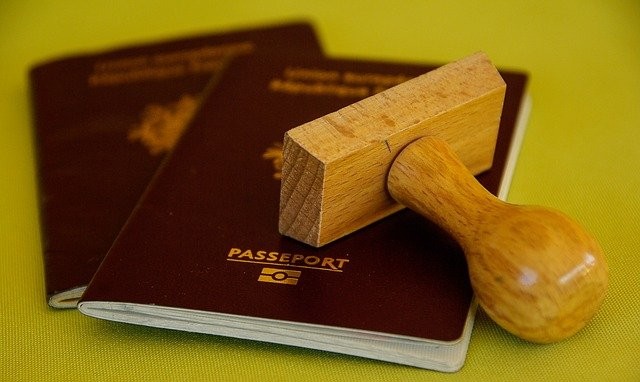
Can You Have Two Passports from Different Countries?
Yes, many countries allow their citizens to hold more than one nationality. This means travelers can potentially hold a passport for each country they are a citizen of .
Some people are automatically considered dual citizens from birth . This may be because their parents are of different nationalities and/or because they were born in a different country from their parents.
Dual citizenship can be obtained via the following ways:
- Ancestry (parents or grandparents of a different nationality)
- Naturalization
The rules vary depending on the country in question. Some countries do not recognize dual citizenship, while others will only allow it through certain means.
Which Passport Should Dual Citizens Use?
Travelers with dual citizenship should travel with the passport that makes their journey easiest .
Different countries each have their own immigration and visa policies . These policies often affect some nationalities differently from others .
Travelers of certain nationalities might need to go to an embassy to get a visa. The application can take weeks or even months to process. On the other hand, others might be eligible to take the faster and more convenient route of applying for an online visa or travel authorization. Some nationalities may not need a visa at all to enter certain destinations.
The advantage of having 2 passports is that one passport might grant the holder access to online visas or visa-free entry to destinations that the other does not.
For example, a dual citizen of both the US and Cuba will find it easier to visit Brazil with their US passport . If they travel with their Cuban passport, they will need to get a visa from an embassy. On the other hand, with their US passport, they can stay in Brazil for up to 90 days visa-free.
It is always a good idea to check the visa requirements for the countries that issued your passports before booking a trip or applying for a visa. Then, it is possible to choose the best option to travel with.
It is also important to remember that if a traveler applies for a visa, they will have to register their passport details . The same passport must then be used to enter the destination country.
Should Dual Citizens Travel With Both Passports?
Each journey is different and it is advisable to check the passport requirements of all the countries the traveler will leave, arrive in, or transit through.
In many cases, it is a good idea for those with dual citizenship to travel with both passports . That way, they will be able to take advantage of the perks of each document.
For example, one passport might allow them to get an eVisa rather than an embassy visa and speed up the process of getting entry permission. The other passport may make the journey home easier if there is a separate queue at border control for returning citizens, for example.
It is also worth noting that certain sovereign states, such as the USA, insist that returning nationals show a passport issued by that country upon arrival.
This applies to those with multiple nationalities. Americans traveling with dual passports may be able to use their non-US passport to enter other countries but must bring their US passport to return home.
Can I Enter a Country With One Passport and Exit With Another?
In most cases, travelers should show the same passport that they used to enter the country when they depart.
The rules and procedures vary depending on the country. Some states, such as the UK and US, do not stamp passports when an individual leaves. However, most countries require the passport to be shown at border control when departing and will either stamp or scan the document .
This is how authorities know that a foreign visitor has left the country and not overstayed their visa .
In some cases, it might be possible to leave with a different passport. However, it is not advisable, as immigration might believe the individual has overstayed and may impose penalties the next time they try to enter the country.
Related News
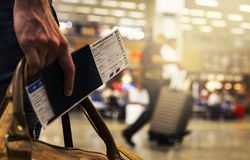
In today’s world, traveling has become an integral part of our lives. Be it for leisure or work, many of us find ourselves regularly on the move across borders. However, one integral aspect that you may overlook is the safety of your travel documents. Losing these critical papers can turn a dream holiday into a
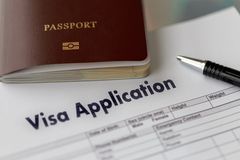
Venturing abroad is an exciting experience, filled with new cultures to explore, foods to taste, and vistas to see. However, before immersing oneself in these novel experiences, one must navigate the labyrinthine process of obtaining a visa. While the general rule of thumb dictates that visa requirements ask you for a sober, straightforward exchange of
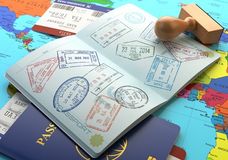
Traveling the world can be an enriching experience, opening doors to new cultures, customs, and unforgettable memories. However, not all countries are as welcoming to tourists, and obtaining a visa can be a daunting task. In this article, we’ll explore the hardest countries to get a visa for, and the reasons behind their strict visa
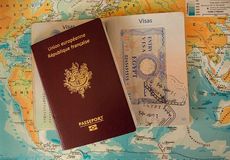
A passport is the key to traveling abroad. However, some passports are considered to be “stronger” than others. The world’s most powerful passports are those that offer the greatest travel freedom. The strongest passports are those that allow the holder to enter the most countries easily, without extra entry requirements, such as visas. There are

With the rise of remote workers, the possibility of working while traveling abroad has become a reality. Many countries have now introduced special digital nomad visas to cater to these visitors and attract foreign remote workers. What Is a Digital Nomad Visa? A digital nomad visa, sometimes known as a workation or working holiday visa,
Disclaimer Handyvisas.com is not owned by, or affiliated with any government agency. We are a private, online agency that provides assistance in submitting applications for tourist visits to different countries around the world. Applications can also be made directly through government websites.
An official website of the United States government
Here’s how you know
Official websites use .gov A .gov website belongs to an official government organization in the United States.
Secure .gov websites use HTTPS A lock ( Lock Locked padlock icon ) or https:// means you’ve safely connected to the .gov website. Share sensitive information only on official, secure websites.

How to get dual citizenship or nationality
Having dual citizenship, also known as dual nationality, means being a citizen of the United States and another country at the same time.
Learn about dual citizenship
Whether born an American citizen or naturalized, if you have dual citizenship, you:
- Owe allegiance to both the U.S. and a foreign country
- Must use a U.S. passport to enter and leave the U.S.
- Do not have to choose one nationality over the other. As a U.S. citizen, you may naturalize in another country without risking your U.S. citizenship.
Learn more about dual citizenship or nationality.
Get dual citizenship
Your eligibility to become a dual citizen depends on the policies of the second country where you are applying for citizenship.
Dual citizenship if you are a citizen of another country
Some countries allow people to keep their citizenship after becoming U.S. citizens, while others do not.
Contact the other country’s embassy or consulate to find out if they recognize dual U.S. citizenship.
If you qualify for dual citizenship, you must first immigrate to the U.S. Then you must become a permanent U.S. resident before being eligible for U.S. citizenship.
Learn more about immigrating to the U.S. And find out how to become a permanent resident .
Dual citizenship if you are a U.S. citizen
If you are a U.S. citizen who is seeking dual citizenship, you must find out if the other country recognizes dual citizenship with the United States.
Contact the other country's embassy or consulate to learn if you are eligible.
LAST UPDATED: December 8, 2023
Have a question?
Ask a real person any government-related question for free. They will get you the answer or let you know where to find it.
- Skip to main content
- Skip to site information
Language selection
Help us to improve our website. Take our survey !
Dual citizens
You should understand the requirements and impacts of travelling or living outside Canada while holding citizenship of another country or countries even when your Canadian citizenship is recognized.
On this page
Canadians with dual citizenship, before you go.
- While you're away
Returning to Canada
Canada allows you to have multiple citizenships while keeping your Canadian citizenship. However, not all countries do allow this. Some countries may even consider it illegal for you to have another citizenship.
Examples of ways you might have another citizenship(s):
- you were born in another country
- you have a parent(s) who was born in, or is a citizen of, another country
- you officially apply for citizenship of another country
Note: You may not even be aware that you have citizenship in another country. For example, even if you’re born in Canada, if you have at least 1 parent who is a citizen of another country, that country may see you as a citizen as well and may not recognize your Canadian citizenship.
Having dual citizenship can also impact other aspects of your personal situation. For instance:
- Child abduction and parenting or custody issues
- Marriage outside Canada
Before leaving Canada to travel to another country where you also hold citizenship:
- make sure to understand and meet the requirements of dual citizenship for that country
- contact that country’s embassy or consulate in Canada for information on the laws and regulations relating to dual citizenship
- consult Travel Advice and Advisories for country-specific information, including about dual citizenship
It’s important that you find out if you have other citizenships if you’re planning to travel outside of Canada. You may be required to follow certain regulations or face restrictions if you hold citizenship there.
While you’re away
If you hold citizenship in another country, different entry and exit rules may apply to you, even if your Canadian citizenship is recognized there. These requirements may not necessarily apply to other Canadian travellers without dual citizenship.
Some examples of laws and regulations you may encounter when travelling to or living in a country where you hold citizenship:
- You may need a passport issued by the country to enter, and in some cases exit, that country.
- You may need an exit visa on your passport to leave the country.
- You may need to register your Canadian citizenship upon entry or while you’re there.
- This ban could be due to investigations into you, your family or your employer. It could also be in relation to criminal and civil matters, including business disputes.
- some countries have laws requiring parental permission to exit, depending on your age, gender or marital status.
- Your nationality may have an impact on whether these rules might apply to you.
- You can be forced to register for military service. This could be imposed immediately upon arrival or when attempting to exit the country.
- You may be required to pay taxes , as any other citizen of that country.
- You may need to register your child with the country, even if the child was born in Canada.
Consider the possible laws and regulations when travelling to other countries where you do not hold citizenship. For example:
- If your Canadian passport shows you were born outside Canada, some countries may have specific entry requirements. In some cases, you may not be able to enter the country.
If your Canadian citizenship is not recognized
Limited or no access to canadian consular services.
Based on the country's laws, local authorities could be within their right to prevent Canadian consular officials from assisting you in a consular emergency. Local authorities may refuse your request to access Canadian consular services.
Renouncing your citizenship
You may be forced to give up your Canadian citizenship or be required to renounce your other citizenship.
Learn more about giving up your Canadian citizenship .
If you need help
For help with emergencies outside Canada, contact the:
- nearest Canadian office abroad
- Emergency Watch and Response Centre in Ottawa
If you are a Canadian with dual citizenship, you need to carry a valid Canadian passport to return to Canada by air.
This applies even if:
- the country or countries you’re travelling from require you to carry your other passport
- you’re only passing through
More information about why you need a valid Canadian passport .
Related links
- Find a foreign representative in Canada
- Immigration, Refugees and Citizenship Canada (IRCC)
- Canadian passports - IRCC
- Documents that prove your Canadian citizenship - IRCC
- A Guide for Canadians Detained Abroad - Travel.gc.ca

15 Countries That Will Grant You Dual Citizenship by Ancestry
Posted: April 26, 2024 | Last updated: April 26, 2024

Dual citizenship offers individuals unique opportunities to connect with their heritage and access the privileges of multiple nations. Across the globe, several countries extend the possibility of acquiring citizenship through ancestry, fostering a sense of belonging and cultural enrichment. In this article, we explore 15 countries that embrace ancestry-based citizenship, illuminating the allure and the inherent challenges in this multifaceted process.

Do you have Italian ancestry? You might be eligible for Italian nationality. Italy allows persons with Italian roots to get citizenship by lineage, provided certain conditions are met, such as justifying lineage through birth records and maintaining a connection to Italian culture.

Luck of the Irish, indeed! Ireland gives a passport by descent to folks with Irish ancestry, typically extending up to two generations. Applicants must demonstrate a link to Ireland by producing their Irish ancestors’ birth or marriage credentials.

Are you of German heritage? You could be entitled to German citizenship. Germany allows individuals with German dynasties to reclaim allegiance lost due to historical events or claim nationality if their ancestors were German citizens. Requirements include providing documents verifying ancestry and knowledge of the German language

For those with Jewish ancestry, Israel extends a spiritual connection and a pathway to becoming the country’s national. Through its Law of Return, Israel welcomes Jewish descendants to make Aliyah (immigration) and become citizens of the Jewish state. Proof of Jewish ancestry, such as a letter from a recognized rabbi or relevant proof, is required.

Estonia, known for its digital innovation and pristine landscapes, invites descendants of Estonian emigrants to rediscover their familial ties. Through its citizenship by lineage program, the country facilitates the journey of anyone seeking to reclaim their Estonian heritage. Generally, eligibility hinges on demonstrating heredity from an Estonian ancestor, usually a parent or grandparent. To support their claim, one must provide authentication, including birth and marriage certificates and naturalization records.

Portugal’s citizenship by descent law allows folks with Portuguese roots to become citizens. Applicants must bring documentation, including birth and marriage credentials and naturalization records, to support their claim.
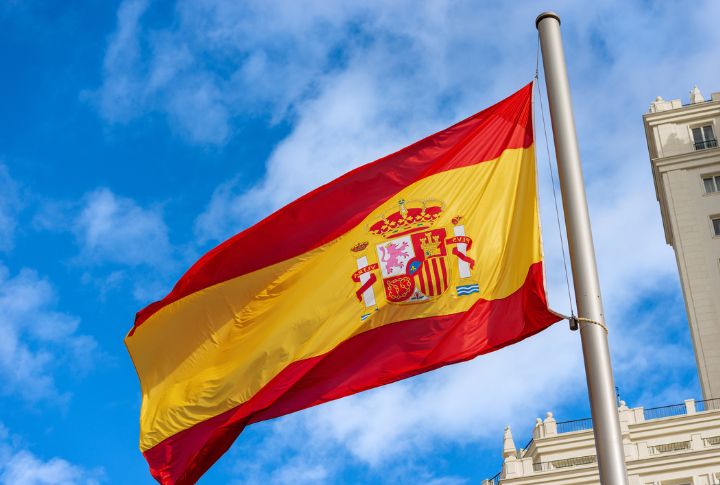
Through Sephardic heritage law, Spain extends citizenship to anyone with Sephardic Jewish ancestry. People interested in becoming Spanish citizens must provide evidence of their Sephardic values, such as genealogical records or an affidavit from a recognized Jewish community.

Hungary’s laws permit descendants of Hungarian citizens to claim citizenship. Requirements include providing evidence of ancestry through birth and marriage papers and authentication demonstrating that the ancestors were once the country’s nationals.

With its rich history and vibrant culture, Poland welcomes descendants of Polish immigrants to reconnect with their roots. Through its ancestry-based citizenship program, Poland provides a gateway for people to embrace their Polish traditions. Eligibility often depends on proving heredity from a Polish ancestor, usually a parent, grandparent, or great-grandparent.

Do you have Lithuanian ancestry? You could be eligible for a Lithuanian passport. Lithuania allows anyone with Lithuanian kindred to claim citizenship by descent, provided they meet certain criteria and provide necessary verification, including birth documents, marriage certificates, and naturalization records.

Lebanon grants residency to anyone of Lebanese lineage, allowing them to reconnect with their roots and become citizens of this culturally rich nation. Requirements may vary, but they typically involve providing proof of ancestry and other necessary documentation.

Croatia’s law allows people with Croatian ancestry to claim the country’s passport. Interested parties must prove their Croatian roots through birth or marriage documents and may need to demonstrate knowledge of the Croatian language.

Serbia offers residency to persons of Serbian lineage, allowing them to reconnect with their cultural heritage. To be accepted, one has to prove one’s Serbian ancestry through birth or marriage papers and fulfill other requirements.
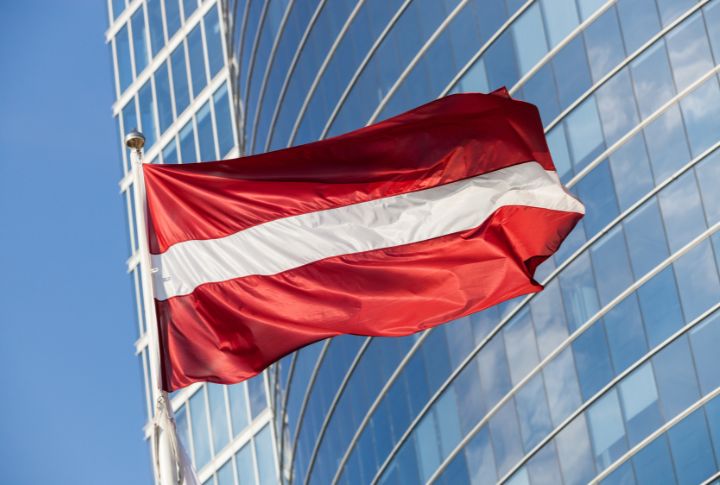
Latvia’s citizenship law permits folks with Latvian kindred to reclaim nationality. Conditions for residency include justifying ancestry through birth or marriage certificates and demonstrating a connection to Latvian culture.

Armenia’s law allows anyone of Armenian culture to become a country’s national, providing them a pathway to connect with their ancestral homeland. Necessary documents may include proving Armenian ancestry through birth or marriage papers and fulfilling other criteria.
The post 15 Nations That Grant Dual Citizenship by Ancestry appeared first on Housely .
More for You
7 Ways People Destroy the Value of Their Homes, According to a Real Estate Agent
Average US annual salary by age revealed – see how you compare
John Jacob Astor IV was one of the richest men in the world when he died on the Titanic. Here's a look at his life.
Democratic Governor Suggests Biden Admin 'Persecuting' Her State
Harvard psychologist: If you say 'yes' to any of these 9 questions, you're 'more emotionally secure than most'
Man loses 450 pounds after reaching 'rock bottom.' 1 key diet change helped
Scientists have discovered the maximum age a human can live to
28 celebrities you probably did not know are nonbinary
Here’s What the US Minimum Wage Was the Year You Were Born
Best Movies Now on Netflix
Top 10 Copycat Recipes
Ranking the 21 'American Idol' winners
18 Vintage Boy Names No One Else Is Using Yet
Popular Bakery Item Returns to Costco and People are Lining Up for Them
Trump rips Romney as ‘total loser’ while endorsing a potential replacement
Billionaire forced to demolish Nantucket beach home
Do I have to pay off my spouse's debts when they die? Here's what you're responsible for and what you aren't after a loved one's death
30 food items that you might not know are banned in America
Last letters of pioneering climber who died on Everest reveal dark side of mountaineering
Six easy ways to lose an inch from your waist – in a week
Update April 12, 2024
Information for u.s. citizens in the middle east.
- Travel Advisories |
- Contact Us |
- MyTravelGov |
Find U.S. Embassies & Consulates
Travel.state.gov, congressional liaison, special issuance agency, u.s. passports, international travel, intercountry adoption, international parental child abduction, records and authentications, popular links, travel advisories, mytravelgov, stay connected, legal resources, legal information, info for u.s. law enforcement, replace or certify documents.
Get a Passport
Renew or Replace a Passport
Get My Passport Fast
Prepare to Apply
Passport Help
Legal Matters
Get or replace a passport
Prepare to apply, rush my passport, after i apply, passport news and alerts, special passport acceptance fairs, processing times.
Routine: 6-8 weeks*
Expedited: 2-3 weeks and an extra $60*
*Consider the total time it will take to get a passport when you are booking travel. Processing times only include the time your application is at a passport agency or center.
- It may take up to 2 weeks for applications to arrive at a passport agency or center. It may take up to 2 weeks for you to receive a completed passport after we print it.
- Processing times + mailing times = total time to get a passport
Urgent Travel: See our Get my Passport Fast page.
External Link
You are about to leave travel.state.gov for an external website that is not maintained by the U.S. Department of State.
Links to external websites are provided as a convenience and should not be construed as an endorsement by the U.S. Department of State of the views or products contained therein. If you wish to remain on travel.state.gov, click the "cancel" message.
You are about to visit:
Protect Your Trip »
Here's when you need (and don't need) a passport to cruise.
It's the type of sailing – closed-loop or open-loop – that largely determines whether or not you need a passport to cruise.
Do You Need a Passport for a Cruise?

Getty Images
A passport isn't always required for cruising.
To determine whether or not you need a passport to cruise, you first need to figure out if the itinerary is closed-loop or open-loop (also known as open-jaw).
Closed-loop cruise: A closed-loop cruise typically doesn't require a passport since it begins and ends in the same U.S. port (though there are some exceptions to this rule).
Example: Royal Caribbean International 's seven-night Western Caribbean & Perfect Day cruise stops in several countries – the Bahamas, Jamaica, Haiti and Grand Cayman – but the itinerary is considered closed-loop because it starts and ends in Fort Lauderdale, Florida.
Open-loop cruise: An open-loop cruise begins in one U.S. port and ends in a different U.S. port.
Example: Carnival Cruise Line 's 16-day Panama Canal from Seattle itinerary is not considered closed-loop because it departs from Seattle and completes its journey in New Orleans.
All of the above regulations have been determined by the Western Hemisphere Travel Initiative: a plan by the departments of State and Homeland Security that determines which documents are acceptable for proving identity and citizenship when entering the United States.
Where to cruise without a passport
There are several destinations where you can cruise without a passport on a closed-loop sailing. They include the following:
- The Bahamas
When looking at cruises to these locations, be mindful of the home ports. The Bahamas, Mexico, Bermuda, the Caribbean and Canada are all foreign ports, which means they only qualify for the passport exception if they are a stop along your cruise itinerary . If the cruise originates in any of these countries, it is likely you will need a passport.
Since Alaska, Hawaii and New England are all U.S. destinations, any closed-loop routes departing from these locations will not require a passport. However, keep in mind that it can be hard to find closed-loop cruises originating in Hawaii or Alaska.
To find closed-loop itineraries for a Hawaiian voyage or Alaskan cruise , try searching for sailings departing from major cities on the West Coast, like Seattle or Los Angeles . By contrast, quite a few closed-loop cruises leave from New England ports, but they are often marketed as Canadian cruises.
Tips on Trips and Expert Picks Newsletter
Travel tips, vacation ideas and more to make your next vacation stellar.
Sign up to receive the latest updates from U.S News & World Report and our trusted partners and sponsors. By clicking submit, you are agreeing to our Terms and Conditions & Privacy Policy .
When you need a passport for closed-loop cruises
Some cruise itineraries include foreign ports that require a passport for disembarkation. This is most commonly an issue for travelers on a closed-loop Caribbean cruise. Barbados , Guadeloupe , Haiti, Martinique , St. Barts , and Trinidad and Tobago all require U.S. citizens to present a valid passport to disembark and enter the country, despite WHTI regulations not requiring a passport for these destinations. Labadee, Royal Caribbean's private island , is an exception and does not require a passport despite its location in Haiti.
If your itinerary includes a country requiring a U.S. passport, your cruise line will require you to have the passport at check-in. Note that your passport must not expire within six months of your arrival in a foreign country or else it won't be considered valid for international travel.
Read: The Easiest Way to Renew Your Passport
Acceptable forms of ID
All travelers – U.S. citizens and foreign nationals alike – must present documents that show identity and citizenship when entering the United States. A U.S. passport can show both. If you don't have one or don't want to bring one, be aware that you may need to present more than one document.
U.S. citizens 16 and older
If you're a U.S. citizen age 16 or older sailing on a closed-loop cruise without your passport, you will need a government-issued photo ID like a driver's license. In addition, you must present a document that proves your U.S. citizenship. These include:
- Passport card
- State-issued enhanced driver's license (EDL)
- Government-issued birth certificate
- Trusted Traveler Program card (NEXUS, SENTRI or FAST)
- American Indian Card (Form I-872) or Enhanced Tribal ID Card
The Trusted Traveler Programs are risk-based programs to facilitate the entry of travelers who have been vetted and preapproved. Most of these programs will provide you with a machine-readable card that allows you to pass through border checkpoints quickly. Keep in mind, some of these IDs are only available to travelers 16 and older.
Read: TSA Precheck vs. Global Entry
U.S. citizens younger than 16
U.S. citizens younger than 16 are only required to present proof of citizenship, such as one of the following documents:
- Original, notarized or certified copy of their government-issued birth certificate
- Consular Report of Birth Abroad issued by U.S. Department of State
- Certificate of Naturalization issued by U.S. Citizenship and Immigration Services
Read: How to Get a Passport for Kids
Non-U.S. citizens
If you are a lawful permanent resident (or LPR) of the United States, you are required to present a permanent resident card or other valid evidence of permanent residence status.
Non-U.S. citizens, with the exception of Canadians and Mexicans, are not subject to passport exceptions, so a valid passport will need to be provided. Canadian citizens can present a valid passport, Enhanced Driver's License or Trusted Traveler Program card. Mexican citizens must present a passport with a visa or a Border Crossing Card.
Unacceptable forms of ID
While most common forms of identification are accepted, there are a few exceptions. U.S. military identification cards and U.S. Merchant Mariner documents are valid forms of identification, but only when traveling on official orders or in conjunction with official maritime business, so it is unlikely they will be accepted when traveling on a cruise.
Here are some other documents that will not be accepted as proof of citizenship:
- Voter registration cards
- Social Security cards
- Baptismal papers
- Hospital certificates of birth (for anyone older than a newborn)
It is important to note that many of the permitted forms of identification, such as a passport card or EDL, are only accepted at land and sea border crossings. Unforeseen circumstances, such as a medical air evacuation, may cause you to return to the U.S. by air travel. In this case, these documents won't be accepted when you try to reenter at the border crossing.
To avoid extra delays in your return to the U.S. following unforeseen travel complications, the Department of State recommends that everyone taking a cruise from the United States carry a valid passport book in case of emergency.
Why Trust U.S. News Travel
Erin Vasta has traveled extensively to international destinations, gaining a deep knowledge of travel regulations in the process. Her expertise in this area has saved her family and friends from unnecessary travel delays and ensured stress-free trips through border security in nearly 15 countries. To write this article, Vasta used her international travel experience and research skills.
You might also be interested in:
- The Top Passport Holders
- Cruise Packing List: Essentials to Bring
- Safe at Sea: The Best Cruise Insurance
Tags: Travel , Travel Tips
World's Best Places To Visit
- # 1 South Island, New Zealand
- # 4 Bora Bora
If you make a purchase from our site, we may earn a commission. This does not affect the quality or independence of our editorial content.
You May Also Like
Flight canceled or delayed what to do.
Amanda Norcross April 26, 2024

The Best Beach Hats
Megan Johnson and Sharael Kolberg April 26, 2024

The Best Florence Tours
John Rodwan April 25, 2024

The 9 Best Louisiana Swamp Tours of 2024
John Rodwan April 24, 2024

How Much Does a Cruise Cost?
Gwen Pratesi April 24, 2024

The Best Whale Watching in Cape Cod
Lyn Mettler April 24, 2024

Best Whale Watching Tours in Maine
Marisa Méndez April 23, 2024

The Best Wineries in Napa Valley
April 23, 2024

The Best East Coast Beaches
April 19, 2024

The Best Luggage Brands
Rachael Hood April 17, 2024


IMAGES
VIDEO
COMMENTS
Being born outside the United States to one or two U.S. citizen parents, with your second nationality based on the foreign country's laws; or. Naturalizing as a U.S. citizen while keeping the nationality of another country. Requirements for U.S. Citizens Holding Dual Nationality. While the United States allows for dual (or multiple ...
Entering a country is when you land and you go through passport control. You will enter your destination country, but you will also re-enter the country that you are returning to. And this may cause you to use two different passports on the same journey. For example, I am an EU and US citizen.
Example 1 - Australian and UK dual citizen travelling from Sydney to London. 1. Booking your flight - Australian passport. 2. Checking in at the airport - Australian passport. 3. Immigration at your departure airport - Australian passport. 4. Immigration at your arrival airport - British passport.
You always need to enter and exit a country with the same passport. Many countries require you to use your passport from that particular country if you are a citizen. There's no shame in admitting you have two passports, if you get confused at any step in the process; you could even proactively present both passports every step of the way.
Dual citizenship is an incredible privilege to have. Not only can you live abroad, but you can use your second passport to access more countries visa-free. Plus, the coronavirus outbreak has made dual citizenship even more useful — in a world where many borders are closed to Americans, having a second passport means you may be able to travel where others can't.
Many people view dual citizenship and traveling with two passports as something exotic, but what they don't realize is that it's really just a practical issue with a practical solution. That solution breaks down into two simple ideas: Enter and exit a country on its own passport, wherever possible.
This guide dives into the benefits and strategies of using two passports to enhance your travel experience, offering tips on visa-free travel, extended stays, and navigating legalities. Essential reading for nomads looking to leverage their dual citizenship for more seamless and enriching travel adventures.
Luckily for you though, I have detailed everything you need to know about traveling with two passports in this easy-to-follow 5-step guide! 1. Decide which passport to use to enter your destination country. Before you book your flight or head to the airport, you should first figure out which of your two passports you plan to use to enter the ...
Dual citizens always need to travel with their US passport, and frequently need to travel with both their US passport and the passport from the second country. The US passport must always be carried because it must be shown to the Customs and Border Patrol agents upon the return to the US. The other passport must also be carried if the traveler ...
Dual Nationality. Section 101 (a) (22) of the Immigration and Nationality Act (INA) states that "the term 'national of the United States' means (A) a citizen of the United States, or (B) a person who, though not a citizen of the United States, owes permanent allegiance to the United States.". Therefore, U.S. citizens are also U.S ...
Proof of Identity for Dual Citizens. You need one primary photo ID to show the passport office when you apply. This could be any one of the following: A driver's license (must be in-state and more than 6 months old) An expired US passport (as long as the photo is still recognizable)
Case 1: Same name, dual citizenship OK. If you have the same name in both passports (that is, same first name and last name, minor variations are OK), and both countries accept dual citizenship (if you're not sure, find out here), the basic formula is: Show the airline the passport of the country you're going to
The benefits of dual citizenship. (Photo by Andrew Kunesh/The Points Guy) The benefits of having a second nationality go far beyond travel. I think that having a second passport is the ultimate lifehack as it gives you full rights in another country, including access to healthcare and education (if applicable).
At passport control, present the passport you want to enter the country with - the one that matches the plane ticket - and get entered into the system under that identity. For the return journey, do the same steps, but the airports are simply reversed. That is how dual citizens travel using two passports.
Certain countries may also require dual nationals to use its passport to enter and leave that country, so consider bringing both your U.S. passport and any other passports you hold when traveling. Having passports from two countries is possible for U.S. passport holders, in addition to many other countries.
The most important thing to know is that even if you are a dual citizen traveling with two completely valid passports, you will always need to travel with your United States passport at all times. You must use your US passport when you attempt to re-enter the US. The other passport is for the country where you have dual citizenship and want to ...
United StatesBy Christy LowryMar 13, 2024. A dual nationality (or citizenship) is a legal status that means you're a citizen of two different countries at the same time. In America, it means that you're both a U.S. citizen and a citizen of another country, and you hold passports for both nations. Having dual citizenship can be a great ...
Traveling as a dual citizen requires careful planning. There are specific rules concerning which passport to use when traveling, and dual citizens must follow these guidelines. Typically, when entering and leaving the U.S., they should use their U.S. passport. Dual citizenship provides the opportunity to immerse oneself in two different cultures.
Traveling with dual citizenship is an exhilarating opportunity that opens doors to exciting adventures and cultural exploration. By understanding the regulations, carrying both passports, and staying informed about entry requirements, you can embrace the world with ease and confidence. Remember to respect the laws and customs of the countries ...
Some nationalities may not need a visa at all to enter certain destinations. The advantage of having 2 passports is that one passport might grant the holder access to online visas or visa-free entry to destinations that the other does not. For example, a dual citizen of both the US and Cuba will find it easier to visit Brazil with their US ...
Top Routes to Traveling with Two Passports. Investors can become Maltese and European citizens after holding a twelve-month residence permit. The end-to-end process is realistically sixteen months. Caribbean citizenship is $100,000 up to $150,000 for a single applicant, depending on the program.
Dual citizenship if you are a citizen of another country. Some countries allow people to keep their citizenship after becoming U.S. citizens, while others do not. Contact the other country's embassy or consulate to find out if they recognize dual U.S. citizenship. If you qualify for dual citizenship, you must first immigrate to the U.S.
If you are a Canadian with dual citizenship, you need to carry a valid Canadian passport to return to Canada by air. This applies even if: the country or countries you're travelling from require you to carry your other passport. you're only passing through. More information about why you need a valid Canadian passport.
Hungary. Hungary's laws permit descendants of Hungarian citizens to claim citizenship. Requirements include providing evidence of ancestry through birth and marriage papers and authentication ...
Routine: 6-8 weeks* Expedited: 2-3 weeks and an extra $60* *Consider the total time it will take to get a passport when you are booking travel. Processing times only include the time your application is at a passport agency or center.. It may take up to 2 weeks for applications to arrive at a passport agency or center. It may take up to 2 weeks for you to receive a completed passport after we ...
The rich are getting second passports, citing risk of instability. The wealthy are building "passport portfolios" — collections of second, and even third or fourth, citizenships — in case ...
To determine whether or not you need a passport to cruise, you first need to figure out if the itinerary is closed-loop or open-loop (also known as open-jaw). Closed-loop cruise: A closed-loop ...